
Trouble with Virtual Wilderness | Dams in Wilderness Managers as Collaborative Hosts | Wilderness Babel: Australia



Trouble with Virtual Wilderness | Dams in Wilderness Managers as Collaborative Hosts | Wilderness Babel: Australia

The International Journal of Wilderness links wilderness professionals, scientists, educators, environmentalists, and interested citizens worldwide with a forum for reporting and discussing wilderness ideas and events; inspirational ideas; planning, management, and allocation strategies; education; and research and policy aspects of wilderness stewardship.
H. Ken Cordell, Southern Research Station, U.S. Forest Service, Athens, Ga., USA
Amy Lewis, WILD Foundation, Boulder, Colo., USA
Christopher Armatas, Aldo Leopold Wilderness Research Institute, Missoula, Mont., USA
Stephen Carver, Wildland Research Institute, School of Geography, University of Leeds, UK
EDITOR-IN-CHIEF
Robert Dvorak, Central Michigan University, Mount Pleasant, Mich., USA
EDITOR-IN-CHIEF EMERITUS
Chad P. Dawson, SUNY College of Environmental Science and Forestry, Syracuse, N.Y., USA
ASSOCIATE EDITORS
Greg Aplet, The Wilderness Society, Denver, Colo.; James Barborak, Colorado State University, Fort Collins, Colo.; Matthew T. J. Brownlee, Clemson University, Clemson, S.C.; David Cole, Aldo Leopold Wilderness Research Institute, Missoula, Mont.; John Daigle, University of Maine, Orono, Maine; Jessica Fefer, Kansas State University; Joseph Flood, Minnesota State University, Mankato, Minn.; David A. Graefe, Lock Haven University, Lock Haven, Penn.; Gary Green, University of Georgia, Athens, Georgia; Kari Gunderson, University of Montana, Missoula, Mont.; Jeffrey Hallo, Clemson University, Clemson, S.C.; Adam Hanson, WILD Foundation, Boulder, CO; Yu-Fai Leung, North Carolina State University, Raleigh, N.C.; Jeffrey Marion, Virginia Polytechnic Institute, Blacksburg, Virg.; Vance G. Martin, Wilderness Foundation Global, Boulder, CO; Zach Miller, National Park Service, Logan, Utah; Christopher Monz, Utah State University, Logan, Utah; Andrew Muir, Wilderness Foundation Eastern Cape, South Africa; Rebecca Oreskes, U.S. Forest Service (retired), Gorham, N.H., USA; David Ostergren, Goshen College, Wolf Lake, Indiana; John Peden, Georgia Southern University, Statesboro, Georgia; Elizabeth E. Perry, Michigan State University, East Lansing, Mich.; Peter Pettengill, St. Lawrence University, Canton, N.Y.; Kevin Proescholdt, Wilderness Watch, Minneapolis, Minn.; William L. Rice, University of Montana, Missoula, Mont.; Keith Russell, Western Washington University, Bellingham, Wash.; Rudy Schuster, USGS, Fort Collins, Colo.; Ryan L. Sharp, Kansas State University, Manhattan, Kansas; B.Derrick Taff, Penn State University, State College, Penn.; Jennifer Thomsen, University of Montana, Missoula, Mont.; Tina Tin, Consultant, Challes-les-Eaux, France; Jeremy Wimpey, Applied Trails Research, Mount Pleasant, Mich.; Franco Zunino, Associazione Italiana per la Wilderness, Murialdo, Italy.
International Journal of Wilderness (IJW) publishes three issues per year (April, August, and December). IJW is a not-for-profit publication.
MANUSCRIPTS TO: Robert Dvorak, Dept. of Recreation, Parks and Leisure Services, Central Michigan University, Room 108 Finch Hall, Mount Pleasant, MI 48859; Telephone: (989) 774-7269. E-mail: dvora1rg@cmich.edu.
BUSINESS MANAGEMENT AND SUBSCRIPTIONS: The WILD Foundation, 717 Poplar Ave., Boulder, CO 80304, USA. Telephone: (303) 442-8811. E-mail: info@wild.org.
SUBSCRIPTION RATES (PER VOLUME CALENDAR YEAR):
Subscription costs are in U.S. dollars only -- Online subscriptions for individual subscribers $30; group online subscriptions for 50 people or less $100; group online subscription for 100 people or less $200; for agency-wide subscriptions or group rates of 100 people or more, contact adam@wild.org. No print journals will be available in 2020. No refunds.
Individual electronic access, passwords, and IP address access are intended for the subscriber only. These means of access should not be shared, posted, or distributed without the consent of IJW.
SUBMISSIONS: Contributions pertinent to wilderness worldwide are solicited, including articles on wilderness planning, management, and allocation strategies; wilderness education, including descriptions of key programs using wilderness for personal growth, therapy, and environmental education; wilderness-related science and research from all disciplines addressing physical, biological, and social aspects of wilderness; and international perspectives describing wilderness worldwide. Articles, commentaries, letters to the editor, photos, book reviews, announcements, and information for the wilderness digest are encouraged. A complete list of manuscript submission guidelines is available from the website: www.ijw.org.
ARTWORK: Submission of artwork and photographs with captions are encouraged. Photo credits will appear in a byline; artwork may be signed by the author. Additional materials for online manuscripts are also encouraged, including videos, photo slide shows, and other media.
WEBSITE: Visit WWW.IJW.ORG to view additional content only available online
THE INTERNATIONAL JOURNAL OF WILDERNESS IS PROUDLY FACILITATED BY THE WILD FOUNDATION. All materials printed in the International Journal of Wilderness, copyright © 2024 by the International Wilderness Leadership (WILD) Foundation. Individuals, and nonprofit libraries acting for them, are permitted to make fair use of material from the journal. ISSN # 1086-5519.
Aldo Leopold Wilderness Research Institute
• Central Michigan University, Department of Recreation, Parks and Leisure Services Administration
SUNY College of Environmental Science and Forestry
USDI Fish and Wildlife Service
• USDI National Park Service
• WILD Foundation
• USDA Forest Service
• Wilderness Foundation (South Africa)
• USDI Bureau of Land Management
• Wilderness Foundation Global • Wilderness Leadership School (South Africa) University of Montana, School of Forestry and Conservation; and, the Wilderness Institute

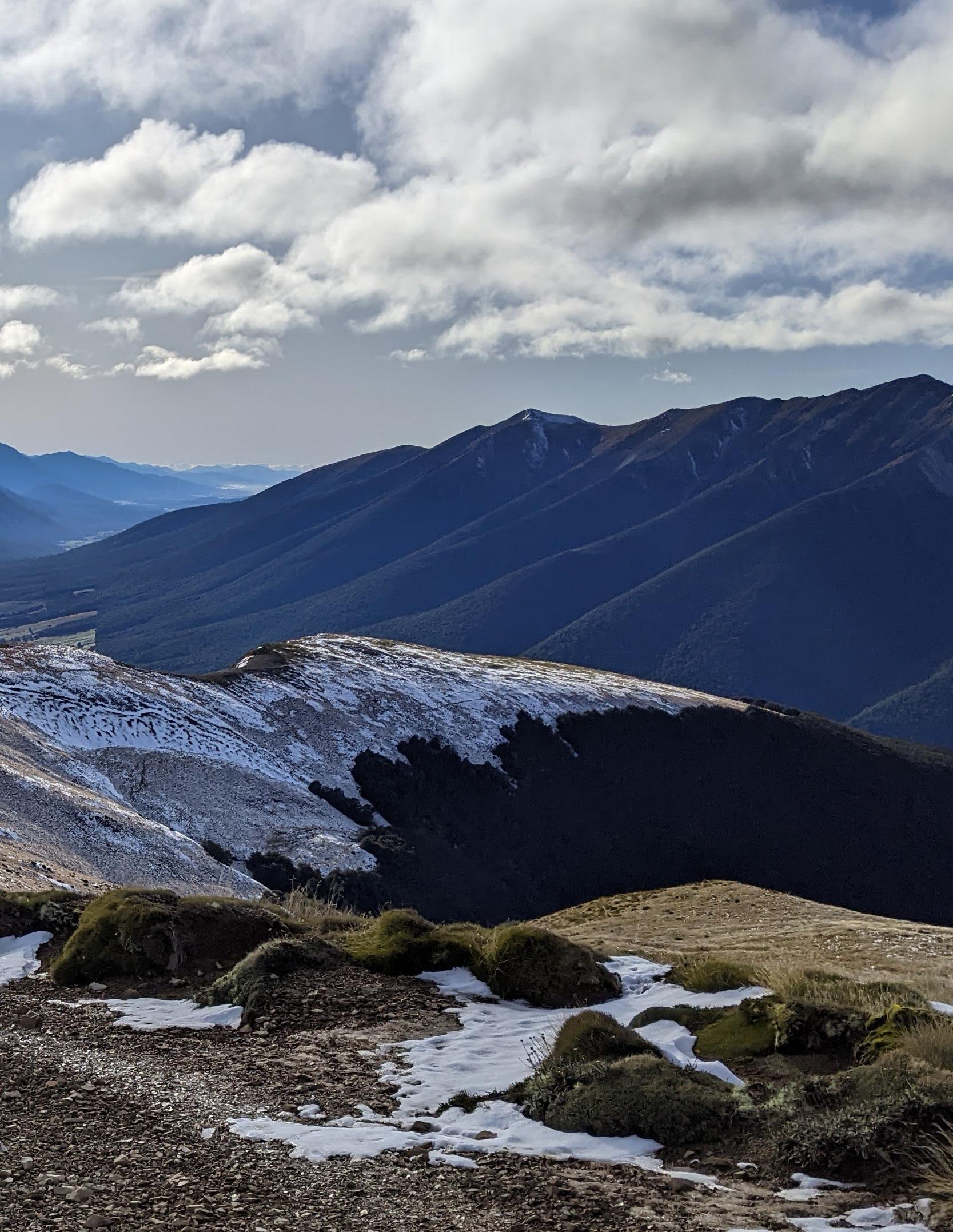 Photo credit: Nelson Lakes National Park, New Zealand. Photo by Bob Dvorak.
Photo credit: Nelson Lakes National Park, New Zealand. Photo by Bob Dvorak.
“What should I do? I forgot our anniversary, again!”
This is a phrase that many of us hope we do not have to speak: the realization that in our busy world, we have forgotten an important milestone, day, or event. But we can move beyond birthdays, graduations, and marriages to recognize several important anniversaries occurring in 2024. This is the 60th anniversary of the passage of the Wilderness Act, adopted by the 88th Congress and signed into law by President Lyndon B. Johnson on September 3, 1964. It is also the 60th anniversary of landmark civil rights laws, specifically the Civil Rights Act. These pieces of legislation have been foundational moments in our history where we expressed our values and strove to shape our future.
This year also represents the 30th anniversary of the International Journal of Wilderness. In that inaugural issue’s editorial welcome by John C. Hendee, he stated that the vision of the journal was to be “an international voice integrating the wilderness and wildland concerns of scientists, planners, managers, educations and citizen environmentalists, worldwide.” The issue also included an article by Dr. Ian Player, founder of the WILD Foundation, telling the story of the first beginnings of the World Wilderness Congress. As that inaugural issue of IJW announced the 6th World Wilderness Congress in Bangalore, India, we are likewise happy to announce the 12th World Wilderness Congress (wild.org/wild12) in the Black Hills of South Dakota, USA, in August 2024.
 Dvorak
Dvorak
One of the immense values of IJW is the ability to access its free archive (ijw.org) and look back upon 30 years of wilderness science and stewardship. In that first issue, you can see the foundational work of many individuals, including Dr. Hendee, Dr. Alan Watson, Vance Martin, Dr. Chad Dawson, and others. While some things have changed since that first issue (the editorial staff asked if subscribers were on email and would prefer to correspond that way), you can still see the DNA of IJW that has sustained itself over 30 volumes to be the premier tool for wilderness experts, scientists, educators, and professionals.
It is important to take a moment and acknowledge these milestones and the numerous individuals that have contributed both to IJW and the cause of wilderness preservation across the world. But as much as we enjoy both looking back and the nostalgia that an anniversary brings, it is an occasion for reengagement, revival, and commitment. Whenever an anniversary arrives, we can do more than reminisce on the past; we can take advantage of the opportunity to engage new relationships and begin new collaborations. It is a chance for us to share our passion and enthusiasm for wild spaces with others and bring new voices to the cause of global wilderness. If we can achieve these things, then we truly will not forget any of our anniversaries again.
In this issue of IJW, Paul Keeling shares thoughts on the trouble with virtual wilderness. Will Rice and Chris Armatas examine visitor perspectives on dams in wilderness. Tangy Ekasi-Otu discusses the power of managers as collaborative hosts. Caleb Meyer and others investigate opportunities for solitude or unconfined recreation on the Colorado Plateau. And Martin Hawes and Grant Dixon continue our “Wilderness Babel” series with perceptions of wilderness in Australia.
ROBERT DVORAK is editor in chief of IJW and professor in the Department of Recreation, Parks, and Leisure Services Administration at Central Michigan University: email: dvora1rg@cmich.edu.

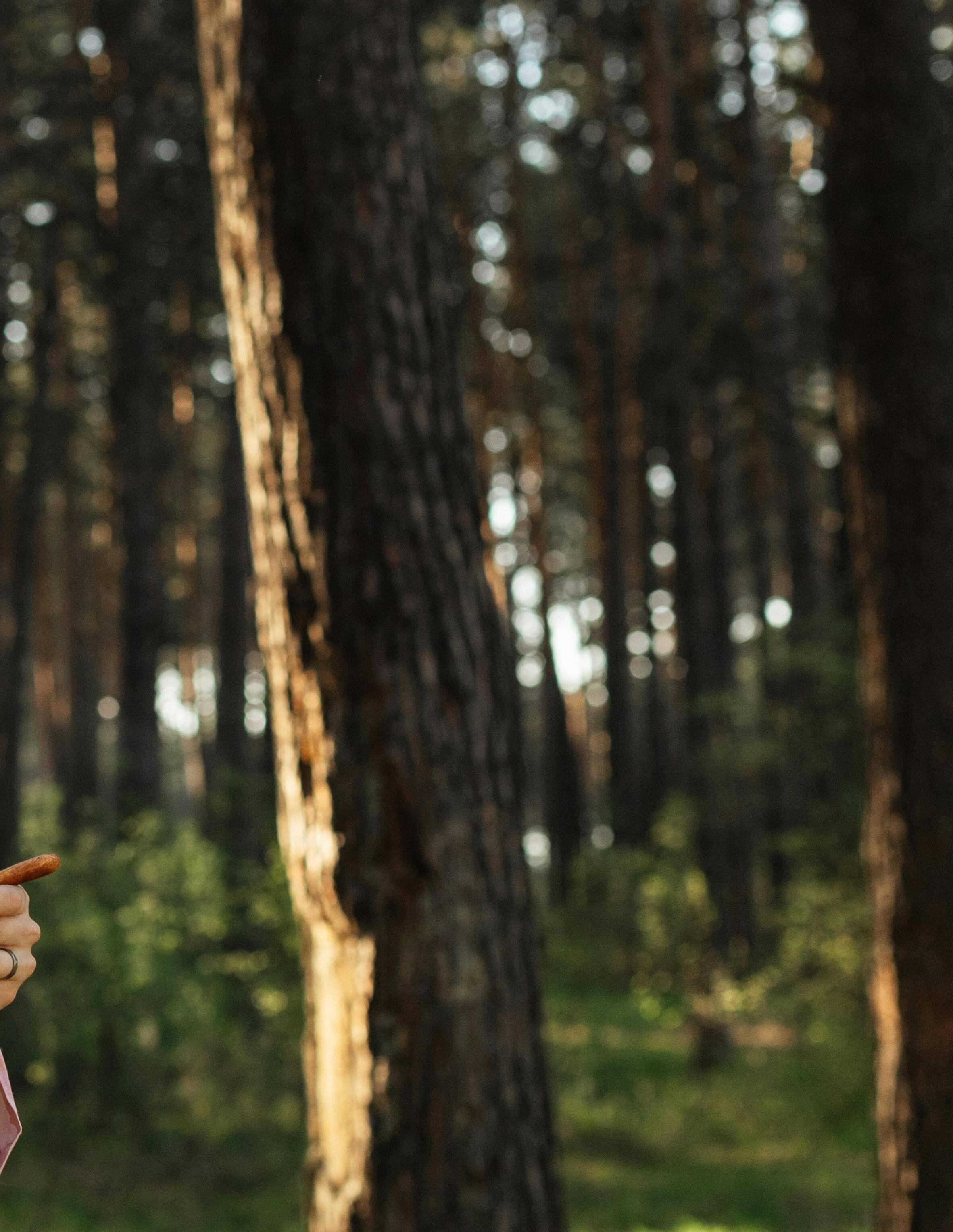 Photo credit: Dmitry Ganin on Unsplash.
Photo credit: Dmitry Ganin on Unsplash.
In a recent article for IJW, “Virtual Reality and the Movement Toward New Conceptualizations of Wilderness,” Keely Fisher explores the psychological and social implications of virtual reality (VR) wilderness. VR technology allows the user to enter a highly immersive, realistic computer simulation of a natural area while wearing wraparound goggles from the comfort and safety of their living room. Although Fisher does not think that VR wilderness could ever be a perfect replica, she thinks that it is a new way of experiencing wilderness that is likely to change our previous understandings and conceptualizations of it. Fisher cites case studies in which VR users report feelings of awe, wonder, and nature connectedness similar to what people experience in real wilderness, without the danger, physical hardship, or skills that are typically considered constitutive of an authentic wilderness experience. VR wilderness can thus confer the human psychological and mental health benefits of wilderness while also giving previously excluded groups, such as the elderly, disabled, or less financially well-off easier access to the benefits of wilderness. Although Fisher is aware that the very idea of VR wilderness may repulse many wilderness advocates, she regards the psychological and democratizing benefits of VR wilderness as worthy of serious consideration. “VR’s experience-sharing capabilities may fundamentally change how people conceptualize wilderness and how they choose to interact with both real wilderness and VR wilderness” (Fisher 2022, p. 41). Fisher concludes that it is “not productive” to treat VR wilderness as a “direct challenge” to wilderness, because doing so “will limit how we think we can connect with wilderness” (Fisher 2022, p. 48).
 Paul Keeling
Paul Keeling
Although Fisher’s article provides important information about VR technology and its potential implications for wilderness, more discussion is needed on this important topic. Fisher’s take on VR wilderness is, on the whole, positive. I am among those who are repulsed and take a more critical stance: we also need to take seriously the possibility that VR wilderness might distract from and potentially undermine important wilderness values, and even threaten to replace actual, real wilderness. In fact, Fisher’s argument as proposed lends more justification for such replacement than the reverse. I will attempt to show why, and then show how the history of the 20th-century wilderness movement might give us different moral guidance as we confront this new technology.
A significant problem with the perspective represented by Fisher’s argument is its blurring of the distinction between VR wilderness and actual, real wilderness. This is not a mere nitpick about words but is, in fact, central to any discussion of the potential social impacts of VR wilderness. Although Fisher distinguishes VR wilderness from real wilderness throughout the paper (for example, that the latter requires “physicality” and is “outside”), the thrust of her argument is to play devil’s advocate and leave the distinction open to question. The standard argument, she says, is “that VR wilderness is not a real wilderness, no matter how real it seems. But why is this?” (Fisher 2022, pp. 40, 41). She goes on to say that VR wilderness, despite making no physical demands on the user and being indoors, can “match” characteristics of wilderness such as grandeur and peacefulness, and give the user a sense of being
“completely alone with the natural world.” These are modest claims, but she later elides these into stronger claims that wilderness gives one access to wilderness itself. For example (my emphasis added):
It is through this technology that people can access wilderness and natural spaces without ever having to physically enter those areas or, in many cases, even leave their homes. . . . This technology creates a more physically, financially, and temporally accessible wilderness and opens remote spaces to those who without this technology would not be able to access these protected areas. (Fisher 2022, p. 40)
In this passage, “wilderness,” “natural spaces,” “remote spaces,” and “protected areas” are left as freestanding terms without qualifiers such as “albeit second hand” or “albeit virtual,” as occur elsewhere in the article. This seems to suggest that VR gives one “access” to actual – not virtual – wilderness. While it is uncertain whether this blurring is intentional or accidental, it is repeated elsewhere. For example, she writes (my emphasis added):
VR takes the virtual wilderness experience a step further by creating a fully immersive, multidimensional trip into a version of the natural world. These capabilities can connect people both to VR wilderness and, importantly, real wilderness. (Fisher 2022, p. 43)
Here we see the elision of an already contestable claim, that VR provides another “version” of the natural world (she also says that a fishing video game is “simply a different way of experiencing nature”) into the much stronger claim that VR can connect people to “real wilderness.” But this seems like a contradiction: as Fisher herself acknowledges, VR wilderness is not real wilderness, so how can it connect people to real wilderness?
“The lesson from the wilderness movement of the last century is not that we should adapt our conceptualizations of wilderness to whatever the emerging consumer trends are. The lesson is rather . . . the conceptualization of wilderness as a critique of and check on modern consumer trends means we should be just as skeptical and critical of VR wilderness as early wilderness activists . . . were of motorized recreation.”
One possibility is that VR wilderness could cause a person to value and support wilderness, or perhaps inspire them to visit an actual wilderness area. In this sense, VR wilderness could be said to “connect people to real wilderness,” indirectly. The central claim of Fisher’s argument, however, is that wilderness tends to elicit certain characteristic emotions in us, among them awe, wonder, and transcendence, which VR wilderness can successfully replicate. So, while VR wilderness does not give us direct access to physical wilderness, it can give us direct access to powerful, subjective, emotional experiences that are uniquely associated with being inphysical wilderness. In this way – via our emotions, feelings, and memories – a simulation can immediately connect us to the thing that is simulated.
Feelings like awe and wonder, the feeling of being so small in such an important and grand place, can connect people with themselves, with their culture, with wilderness, and with the world. Emotions resulting from our experiences in wilderness are an integral part of how people interact with the natural world. These feelings
are not reserved for experiences in real wilderness. Users of VR wilderness have been found to experience feelings similar to those felt in real wilderness. (Fisher 2022, p. 43)
Fisher seems to be suggesting something along the following lines: if I were presented with a perfect lifelike simulation of a loved one, and my emotional response to the simulation was indistinguishable to the emotional response I would have in the presence the actual person, then I would have something like “access” to the actual person.
Conceptually, such an argument verges on Berkeleyan idealism, the view that all reality is mental (or emotional in this case), and that all we really have access to is the content of our experience. What is left out is what the experience is an experience of. To illustrate, let us assume a perfect wilderness-experience machine. We can simply stipulate that there are no technological limitations to the simulation; the simulation is indistinguishable from the real thing. All five senses are engaged, and one is free to move about and so on. This machine would nonetheless not deliver a veridical experience of wilderness. It is a fake wilderness experience. The fabricated experience may generate the subjective experience of the real thing, and it may confer positive psychological and health benefits for people who cannot access real wilderness areas. However, it does not follow that the fabrication gives one “access” to real wilderness. Such virtual wilderness experience might point to real wilderness as something worth connecting to but would not itself be a connection with wilderness at all. A person who valued wilderness who was successfully deceived by the machine would be short-changed, not in contact with what they value (Elliot 1984). In examples of VR wilderness, the users are aware that they are in a
simulation; there is no deception involved. In any case, they are not accessing or experiencing real wilderness, even though they may report feeling as connected to wilderness as someone who actually is.
This point may seem too obvious to spell out, but its ethical implications need underscoring. As Robert Elliot (1984) argues in his well-known paper “Faking Nature,” it is not simply the positive states of mind that nature can produce in humans – awe, wonder, aesthetic appreciation, feelings of transcendence, and so on – that explain its value, although these may be reasons to value nature. The fuller explanation is that wilderness has “a certain kind of causal history that explains its existence,” namely, its nonhuman “genesis” (Elliot 1984, p. 88). Wilderness is a place predominantly (though not always entirely) shaped by natural processes, self-willed land. What is admirable and valuable in wilderness are (among other things) the other-than-human forces that have contributed to its making independently of human purposes. A wilderness experience machine, on the other hand, is (qua a machine) wholly the product of human purpose, intention, and design, which explain its very existence (Katz 1992, 1993). A wilderness-experience machine therefore logically (not merely practically) cannot deliver an authentic wilderness experience. The proposition is self-defeating.
Any argument that overemphasizes the subjective, emotional content of the experience of wilderness risks obscuring the objective difference in meaning and value between VR wilderness and actual wilderness – namely, their different causal genesis and relation to human purpose. This difference has a profound ethical implication: VR wilderness can fulfill its purpose without actual wilderness existing at all.
I had a rude awakening on this topic several years ago when I got into a friendly argument with the host of a Christmas party who was a prominent academic in the field of environmental sustainability. I could not get the professor to agree that protected natural areas, such as parks, nature refugia, and wilderness reserves, were an important part of environmental sustainability. This shocked me, given this person’s reputation in this field. So I sought to establish a limiting moral case: Wouldn’t the substitution of digital trees in virtual reality for real trees be going too far and amount to sustainability failure, not success? Not necessarily, was the reply, because the difference between a real tree and a virtual tree is a “social process of meaning constitution.” I then asked, “What kind of planet do you want sustained?” I was expecting an answer such as “a planet rich in biodiversity” or “a planet with living room for grizzly bears and other large predators,” but the response I got was: “The planet I want sustained is the one we all agree to create, having regard to our best understanding of the consequences of creating it.”
To be clear, in rejecting my distinction between real trees and virtual trees, my host was not claiming that humans could survive without the biophysical environment, which would violate the laws of thermodynamics. But the choice of words was telling: humans “create” the world; there is no given world out there that needs protecting or defending from our creations. This was my first flesh-and-blood encounter with a social constructivist account of nature, the view that nature is just a socially mediated construction produced by human discourses and practices, not something that transcendentally or ultimately
exists. The professor’s position (as I understand it) was that if a sufficient number of people were satisfied with VR wilderness, and these artificial simulations could be provided at a lower cost than maintaining protected natural areas, then we could open up all protected areas to industrial extraction, agriculture, and urban development, provided such development was managed sufficiently well to “sustainably” accommodate the human population and its material demands. It might be a degraded, ecologically impoverished planet with no wildlands, wild rivers, large predators, mass nonhuman migration events, old-growth forests, or what Aldo Leopold called “a blank spot on the map.” But if such things can be simulated by technology and people are satisfied with the simulations, then that is the world we ought to “create.”
In fairness, this is not Fisher’s argument. Nonetheless her capacious description of “access to wilderness” based on subjective human emotions and feelings in no way rules it out. Many individuals would probably assume that the difference in value and meaning between VR wilderness and actual wilderness is too foundational to be undermined. But this may not be true. In a provocative article for the journal Science in 1973 entitled “What’s Wrong with Plastic Trees?” Martin Krieger argued that “what a society takes to be a natural environment, is one,” (Krieger 1973, p. 448) and that “we may want to create proxy environments by means of substitution and simulation. In order to create substitutes, we must endow new objects with significance by means of advertising and by social practice” (Krieger 1973, p. 453). To the question, “What’s wrong with plastic trees?” Krieger’s answer was:
My guess is that there is very little wrong with them. Much more can be done with plastic trees
and the like to give most people the feeling that they are experiencing nature. We will have to realize that the way in which we experience nature is conditioned by our society. (Krieger 1973, p. 453)
Like my Christmas party host, Krieger’s point was that a sufficient shift in social norms and practices could endow VR wilderness with the same social significance as actual wilderness. If so, VR wilderness could replace actual wilderness.
Could such a shift in social norms and practices actually occur? To some extent it has already begun. One of the papers cited by Fisher, Chan et al. (2021), put it this way: “VR is particularly attractive to young people because of its cutting-edge technology and immersive experiences,” and “nature exposure in VR offers a feasible alternative [to natural environments] that is appealing to the young population who tend to prefer digital media to spending leisure time outdoors.” VR, according to Forbes magazine in 2018, is the “the holy grail of marketing to Millennials” (Rogers 2018).
An objection might be raised here. Previous technologies such as books, photographs, and movies have been successfully used to promote pro-wilderness norms and practices, so how is VR any different? For example, David Attenborough’s famous Planet Earth television series conveys awe-inspiring information about and video footage of nature, but presumably this does not promote nature documentaries at the expense of actual nature. The difference is that Planet Earth does not seek to replicate the subjective experience of actually being immersed
in a natural setting. The viewer is just that – a viewer that is external to the program, rather than integrated with it. VR wilderness, on the other hand, puts the user (a revealing term in this context) at the center of the experience and seeks to replicate “the sense of actually being there” (Chan et al. 2021). The user is not merely a viewer but a participant – “more likely to feel at one with nature” than television, Fisher reports – in a much richer and more intense experience. That is the whole point of this technology over previous ones. Fisher’s article explains this perfectly well.
In fact, it is precisely VR’s success in reproducing the subjective experience of being in real wilderness that poses what psychologist Peter Kahn calls an “insidious problem” (Khan et al. 2009, p. 41). Khan suggests that the loss of actual nature and the rise of “technological nature” are inter-related. Studies have shown that as actual nature degrades in the real world, each ensuing generation experiences the degraded condition as the non-degraded normal baseline, a process Kahn calls “environmental generational amnesia” (Kahn et al. 2009, p. 37). Says Kahn: “If you try to explain to a person what we, as humans, are missing in terms of the fullness of the human relation with nature, a well-meaning person can look at you blankly and respond, “but I don’t think we’re missing anything” (Kahn et al. 2009, p. 41). Kahn points out that humans are highly adaptive, and technology enables humans to adapt to the loss of actual nature by engaging each ensuing generation with ever more sophisticated ways of mediating, augmenting, or simulating it. “The concern is that, by adapting gradually to the loss of actual nature and to the increase of technological nature, humans will lower the baseline across generations for what counts as a full measure of the human experience and of human flourishing” (Kahn et al. 2009, p. 37). In a
context of environmental generational amnesia (per Kahn), it is not difficult to see how a sufficient shift in social norms and practices (per Krieger) could result in the replacement of real wilderness by highly advanced technologies such as virtual wilderness.
I am not arguing that such a replacement is inevitable. I only claim that Fisher’s argument leaves the possibility wide open. After saying that it is “unproductive” to treat VR wilderness as a “direct challenge” to real wilderness Fisher concludes:
Trying to figure out whether or not VR wilderness can ever be considered wilderness will only result in challenging discussions and will limit how we think we can connect with wilderness. A comparison, therefore, is not the best way to think about how VR impacts our conceptualizations of wilderness. (Fisher 2022, p. 48)
In other words, when it comes to “connecting with wilderness,” it seems the more ways the better; we should not limit the possibilities of VR wilderness by having “challenging conversations” about it. However, Fisher’s admonition against comparing VR wilderness and real wilderness is in tension with what she says immediately following:
As more and more people continue to engage with virtual natural space, our conceptualizations of wilderness will allow for VR wilderness experience to be considered just as valuable as real wilderness experiences, but not as a replacement. (Fisher 2022, p. 48)
There are two problems with this. First, in claiming that VR wilderness experience might be considered “just as valuable as real wilderness experiences,” Fisher is comparing VR wilderness and real wilderness, contrary to her own recommendation. Second, by equating the value
of the two kinds of experiences (“as more and more people engage with virtual natural space”)
Fisher basically proves Martin Krieger’s point; her argument has provided a reason why VR wilderness might replace real wilderness, despite assurances to the contrary. New technologies do not always announce themselves as replacements. But they often end up that way unless countervailing forces (which might produce “challenging conversations”) determine otherwise. History shows that purveyors of the technology are unlikely to be such a force.
Early on in her article, Fisher cites the historical work of Paul Sutter in support of her observation that new technologies, such as the automobile in the early 20th century, can change our understanding and conceptualization of natural spaces by providing new ways of experiencing them. VR, Fisher suggests, is just a “more advanced” technology whose ambiguous role in conceptualizations of wilderness now “requires our attention” (Fisher 2022, p. 42). But this leaves out the central thesis from Sutter’s work: the wilderness movement of the 20th–century interwar period was largely borne out of a critique of car culture and its transformation of nature into an “experiential commodity” (Sutter 2002, p. 27). Cars did change the understanding and conceptualization of wilderness; it would be more accurate to say that they changed the understanding and conceptualization of nature recreation, out of which the modern idea of wilderness emerged as a critical response. Much of the concern was over the expansion of the road network and car-based development into previously roadless areas, but there was another
reason: easy–access automobile tourism was considered an inferior way of knowing nature compared to primitive forms of travel such as hiking or paddling. “If we think we are going to learn by cruising around the mountains in a Ford,” wrote Aldo Leopold, “we are deceiving ourselves” (Sutter 2002, p. 79). Roadlessness thus became a defining goal of wilderness protection, and distance from roads is now a feature of “wilderness character” monitoring (Landres et al. 2008).
In fact, according to Sutter, the early wilderness movement’s preoccupation with cars and roads was part of a broader critique of modernity, in particular growing “mechanization,” a word and concept that would later feature prominently in the US Wilderness Act of 1964. “In their distaste for automotive success,” Sutter writes, “the founders were in revolt against the ‘machine age’ and much of what it stood for” (Sutter 2002, p. 246). Much of what the machine age stood for, they believed, was mass consumerism and spiritless commercialism. The national parks were prey to these forces, so an alternative was needed. Wilderness, a more protective standard, would provide a much-needed contrast between the modern, consumer world of mechanization and the few remaining large areas where nature dominated. Wilderness thus represented not just scenic landscapes and outdoor recreational opportunity but also a “retreat from profit,” a place to “keep the modern world at bay” (Sutter 2002, pp. 158, 175).
This historical observation is highly relevant to the discussion of VR: by Fisher’s own account, VR wilderness instrumentalizes wilderness as an experiential commodity that is almost perfectly designed for marketing. The lesson from the
wilderness movement of the last century is not that we should adapt our conceptualizations of wilderness to whatever the emerging consumer trends are. The lesson is rather the other way around: the conceptualization of wilderness as a critique of and check on modern consumer trends means we should be just as skeptical and critical of VR wilderness as early wilderness activists of the interwar years were of motorized recreation. They believed that automobiles were a vector of values and norms that undermined wilderness values. We should consider how this is also true of VR wilderness. Rather than simply take on faith that VR wilderness will not replace real wilderness we need to guarantee that it doesn’t. The first step is to understand the reasons why it could happen.
PAUL KEELING is a freelance writer with a background in environmental philosophy and ethics. He has been published in various magazines and academic journals, including Sierra, Wilderness, Earth Island Journal,Philosophy Now, International Journal of Wilderness, Environmental Ethics, and Environmental Values. He lives in Vancouver, B.C.
Chan, S. H. M., L. Qiu, G. Esposito, et al. 2021. Nature in virtual reality improves mood and reduces stress: Evidence from young adults and senior citizens. Virtual Reality. https://doi.org/10.1007/s10055-021- 00604-4.
Elliot, R. 1984. Faking nature. Inquiry 25: 81–93.
Fisher, K. 2022. Virtual reality and the movement toward new conceptualizations of wilderness. International Journal of Wilderness 28(3): 40–51.
Kahn, P., R. L. Severson, and J. H. Ruckert. 2009. The human relation with nature and technological nature. Current Directions in Psychological Science 18(1): 37–42.
Katz. E. 1992. The call of the wild: The struggle against domination and the technological fix of nature. Environmental Ethics 14(3): 265–273.
Katz, E. 1993. Artefacts and functions: A note on the value of nature. Environmental Values 2(3): 223–232.
Krieger, M. 1973. What’s wrong with plastic trees? Science 179: 446–455.
Landres, P., C. Barns, J. G. Dennis, T. Devine, P. Geissler, C. S. McCasland, L. Merigliano, J. Seastrand, and R. Swain. 2008. Keeping It Wild: An Interagency Strategy to Monitor Trends in Wilderness Character across the National Wilderness Preservation System. USDA Forest Service, Rocky Mountain Research Station General Technical Report RMRS-GTR-212, Fort Collins, CO.
Rogers, S. 2018. Why Millennials need VR. Forbes. https://www.forbes.com/sites/solrogers/2018/10/23/whymillennials-need-vr/#7bb9e7396260.
Sutter, P. 2002. Driven Wild: How the Fight against Automobiles Launched the Modern Wilderness Movement. University of Washington Press.
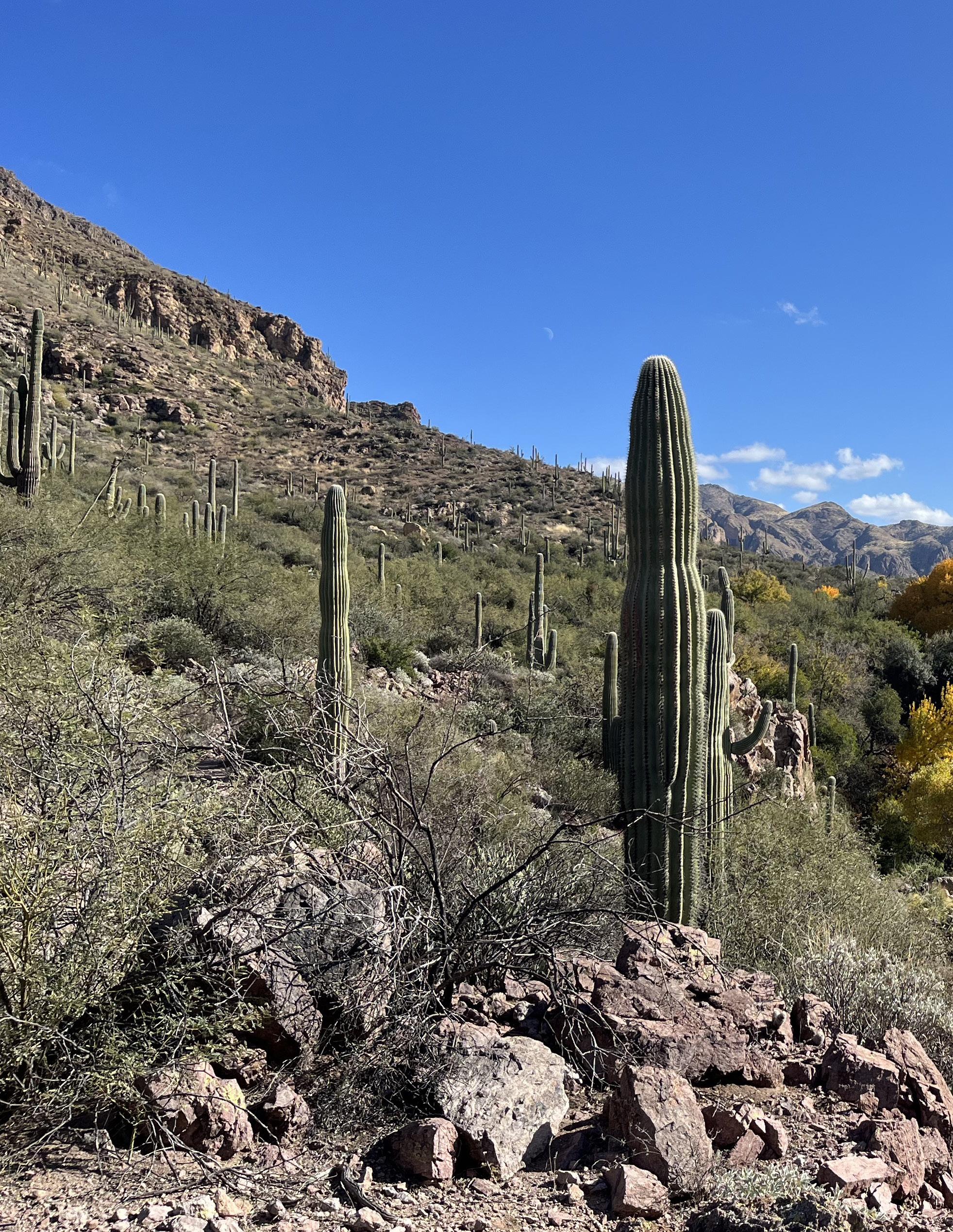
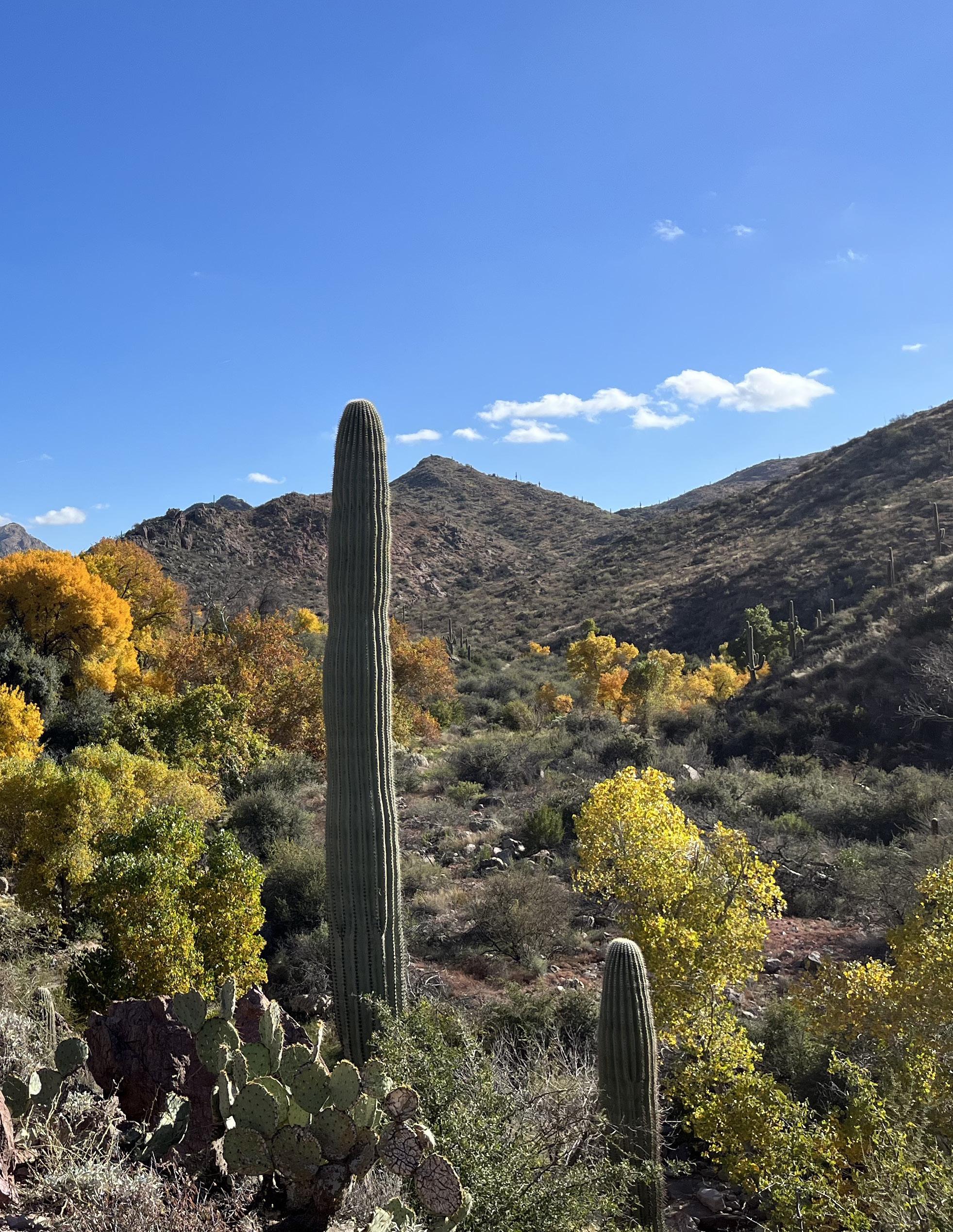 Fremont cottonwoods changing color behind saguaro cacti in Superstition Wilderness. Photo credit: Luke Koenig
Fremont cottonwoods changing color behind saguaro cacti in Superstition Wilderness. Photo credit: Luke Koenig
Nearly 100 years later, I work as a wilderness steward on much of the very same land that inspired some of Aldo Leopold’s most famous work. Nearly 100 years after one of the founders of the Wilderness Idea mourned the loss of apex predators from the region, we are still trying to find the community and political support to bring them back and connect them to their former range. Over that same time, Arizona and New Mexico, like much of the US West, have seen policies of fire suppression that have led to catastrophic megafires. Invasive plants have taken over once-thriving ecosystems. And climate change poses threats to wilderness in ways unforeseeable to the framers of the Wilderness Act.
The question we must ask ourselves today is familiar: Are we guardians, or are we gardeners? When Howard Zahniser first raised this question during his drafting of the Wilderness Act, he was a staunch defender of the former (Scott 2001). But in the intervening years, since the days of Leopold and Zahniser, what has changed?
In the wake of an increased understanding of our impacts on wilderness, we are tasked with reevaluating the fundamental assumptions about our relationship to nature that underlie wilderness policy. The deeply held assumption that humans are separate from nature has led to an evaluation of
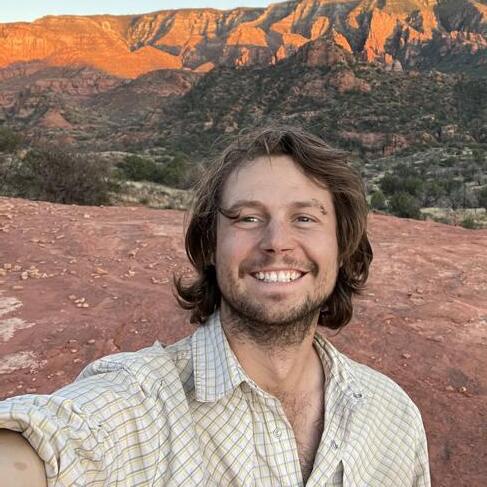 Luke Koenig
Luke Koenig
wilderness quality that is dependent on that separation. However, other qualities, such as biodiversity and ecological integrity, may also be at the heart of what is worth protecting in designated wilderness areas. As these other qualities come to depend increasingly on human intervention, it is time to revisit humans’ role in wilderness from an environmental ethics lens: What are our responsibilities to wilderness, and what is wilderness for?
I am concerned that increasing calls to interpret the Wilderness Act as a fundamentally noninterventionist document will cause us to lose sight of what is arguably its most important function: to protect vulnerable ecosystems and irreplaceable organisms that would otherwise be wiped out.
The threats posed by climate change and other complex anthropogenic stressors have sparked renewed discussion on conflicting notions of “natural” as it pertains to wilderness management. While there are many possible definitions of “natural,” a particular conceptualization of the term was employed during the drafting of the Wilderness Act and continues to guide wilderness policy today. This conceptualization was informed by the cultural, historical, and ecological context in which the act was written.
If we accept that the context has changed, then we must determine whether that definition remains equipped to meaningfully address management challenges that have also changed. In the 21st century, the most
contentious wilderness management question will be the extent to which we are permitted to intervene in designated wilderness to maintain the “natural conditions” that the Wilderness Act mandates we preserve. This question will hinge on how we define “natural” and the extent to which human activities fit within that definition.
At the time the Wilderness Act was written, there was good reason to think that in order to protect nature, humans must largely be kept out of it. If nothing else, the act was a reaction to the forces of development and the anthropocentric reduction of wilderness to “natural resources,” that together threatened to extinguish the last of America’s wildlands.
Prior to the National Wilderness Preservation System and its precursors (e.g., the Gila Wilderness before 1964), even areas protected for natural and cultural value remained threatened by these twin forces. Roads and hotels were blighting protected areas and diminishing the very qualities that made them worth protecting. In effect, even when humans were attempting to preserve natural landscapes, their presence seemed necessarily antithetical to their character. Even in principle.
As Leopold wrote, “All conservation of wildness is self-defeating, for to cherish we must see and fondle, and when enough have seen and fondled, there is no wilderness left to cherish” (Leopold 1949).
In the words of Section 2(c) of the Wilderness Act: “A wilderness, in contrast with those areas where man and his works dominate the landscape, is hereby recognized as an area where the earth and its community of life are untrammeled by man, where man himself is
a visitor who does not remain . . . [Land] which is protected and managed so as to preserve its natural conditions and which . . . generally appears to have been affected primarily by the forces of nature, with the imprint of man’s work substantially unnoticeable.”
The Wilderness Act is fundamentally built on the distinction between humans and nature, but it uses this distinction as a powerful means of protection. Herein lies the real genius of the act: it can work within an existing framework of separation, a framework in which humans and nature have no reciprocal or symbiotic relationship, by doubling down on that separation. However, there are other possible ways to conceptualize humans’ relationship to nature, and other contexts that demand different conceptualizations.
As McDonald et al. (2000) write, “It is important to note that, for tribal land managers, these territories called wilderness by the settler population are thought of as homelands by the tribal peoples.” The very lands that would one day be set aside because they appear to have been “affected primarily by the forces of nature” have been inhabited and managed by humans for millennia. These landscapes were interacted with by their inhabitants in a way that was congruous with a different kind of natural, one not based on an assumption of separation, that instead recognizes humans’ roles in ecosystems. McDonald et al. continue, “[Indigenous] lands are far from untrammeled in tribal eyes and humans are certainly not intruders into nature.” (McDonald et al. 2000).
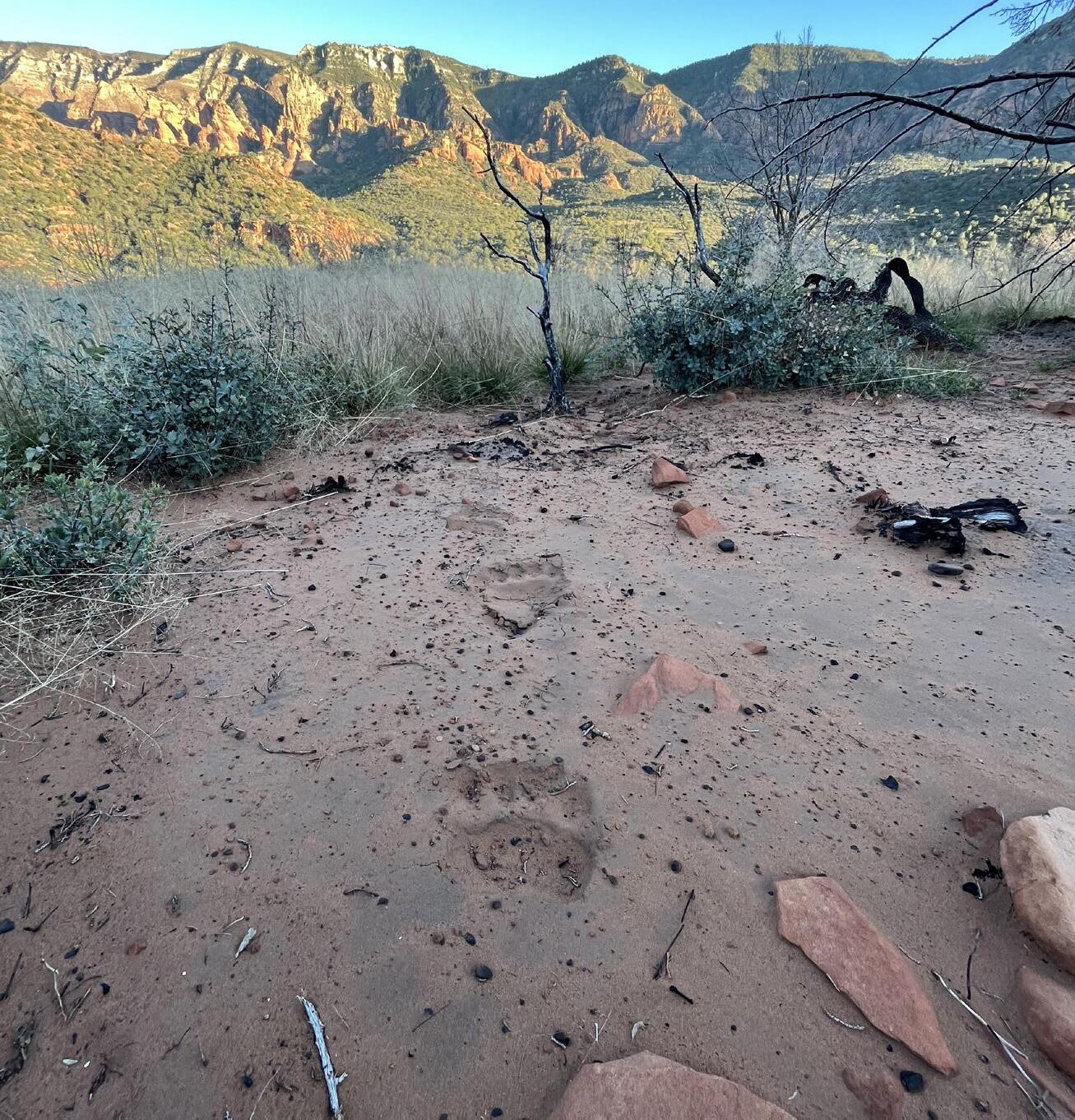
Today, while Indigenous people make up only 5% of the global population, they protect 80% of the world’s remaining biodiversity (World Wildlife Fund 2020). Wilderness is not dependent on being untrammeled in those frameworks where humans and the natural world have a reciprocal or symbiotic relationship. Though how industrialized societies manage for wilderness in the 21st century may be different from Indigenous societies; adequately preserving natural conditions in times of ecological change may similarly depend on a less dualistic assumption about our role in wilderness. Wilderness, if evaluated by ecological integrity, will not be dependent on remaining untrammeled.
No longer should we view the activities of humans as necessarily antithetical to the natural conditions that wilderness protects. The mere separation from nature that powered the Wilderness Act is no longer adequate now that anthropogenic ecological change demands active mitigation to preserve biodiversity. Not only is the binary conceptualization of natural no longer helpful for mitigating the most salient threats to wilderness today (climate change, invasive species, changing fire ecology), it will also hinder our ability to address them. While encroaching development and extractive industries remain significant concerns, the most pressing threat to wilderness today is the far more insidious one of catastrophic biodiversity loss brought on by complex anthropogenic stressors.
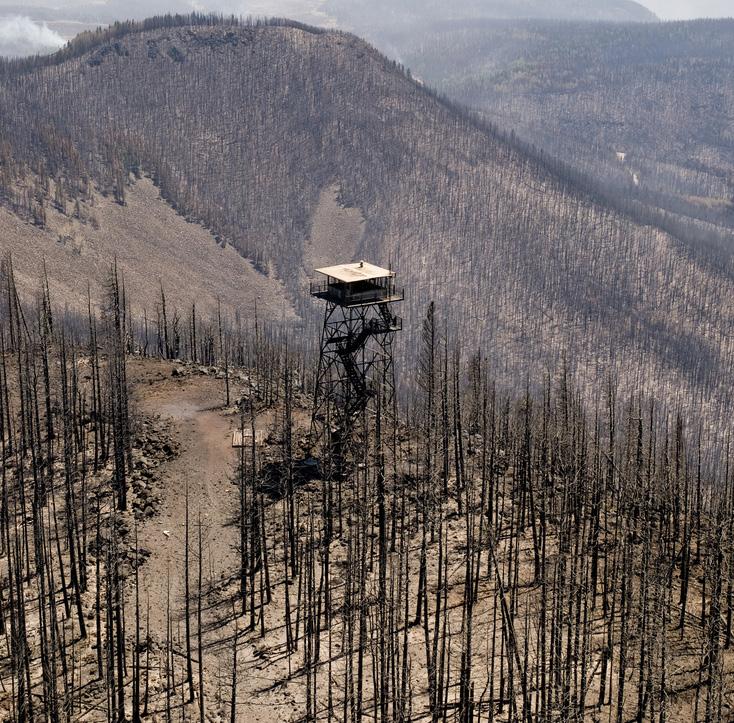
But our capacity to redefine natural depends on our ability to break free from the assumption about nature so basic that we take it for granted: that our relationship to it is dualistic –either we are a part of it or we are not.
Much like 100 years ago, our presence, in the form of our impacts, is antithetical to the natural conditions protected within wilderness areas. Yet at the same time, our presence, in the form of our ecological intervention and stewardship, is now increasingly required to preserve those very same natural conditions.
So, in 21st–century wilderness management, are humans natural or not? Framing this question in a binary way may be precisely the problem. But the answer will also depend as much on a prescriptive ethical question as on a descriptive ecological question. The extent to which our goal is to manage for wilderness biocentrically will determine the extent to which our interventions and active management will be permitted. In turn, this will inform a definition of natural that better fits a 21st-century context.
The hard question we must ask ourselves today is, Do we continue to manage for natural conditions in a way that is built so fundamentally on our distinction from them that we would rather let them irrevocably deteriorate than to step in? This approach seems ethically dubious when we consider that the threats to these areas themselves are human caused. This is an ecologically reckless place to draw the line: that our impacts may be considered natural, but our mitigation of them is not.
Is it really the case that what “naturalness” requires of us is to throw up our hands and let “nature take its course?” Or does the Wilderness Act in fact implicate a paradoxical “cultivation” of wildness? I would wager that letting invasive tamarisk in the riparian zones of the US Southwest, for instance, wipe out a keystone species such as the Fremont cottonwood, which supports the habitat of countless other native species, is not what the framers of the act had in mind (National Wildlife Federation 2023) – even if removing tamarisk requires highly intrusive intervention.
Over-privileging of the untrammeled characteristic of wilderness will require us to view wholly novel ecosystems, that reek more of human impact than anything that could have existed prior to industrialization, as somehow wilder than a thriving, intact ecosystem with all of its intricate pieces in place. Compared to the introduction of invasive weeds and the extirpation of top predators, the impacts of global-scale stressors such as climate change will be of a scale entirely their own. However, the fundamental questions we must ask ourselves of our role in wilderness remain largely the same.
Some are concerned that increased intervention and restoration will undo the spirit of wilderness, even at the cost of ecological degradation and biodiversity loss. In this context, Roger Kaye, in his 2021 essay, “Preserving the Wildness of Wilderness in the Anthropocene,” laments the use of interventions such as water impoundments, prescribed fire, herbicides, and assisted migration. He is concerned that already, “The Minimum Requirements Analysis (MRA) and
“The hard question we must ask ourselves today is, Do we continue to manage for natural conditions in a way that is built so fundamentally on our distinction from them that we would rather let them irrevocably deteriorate than to step in?”
its supplement for evaluating proposals for ecological interventions, tend to facilitate the agencies ‘action bias’ toward intervention.”
Kaye and others hold the firm conviction that the capacity for wilderness to remain wild and adequately preserve natural conditions necessarily depends on our ability to resist the temptation to step in. This represents the noninterventionist stance.
Kaye has notably asked, “Should we strive to maintain natural conditions, that is, the products of evolutionary creativity at our point in time, or should we perpetuate that creative process itself, wildness?” (Kaye 2021). While at first glance this may sound like a compelling distinction, it is in fact a false dichotomy. Either way, wildness, in some shape or form, is going to continue. And either way, we are going to impact it. The question is not whether we will stop it or let it continue, but rather whether we will step back and wash our hands of the responsibility for our impacts, or step in, and steward it with thought and care. When we instead look at the question in this light, when we are free from the assumption that distancing ourselves from natural processes necessarily makes them wilder, a different responsibility arises. We are confronted with a
responsibility to best advocate for the inhabitants of wilderness that will be affected by us, one way or another. Whether they will be affected is not up for debate. They will.
There is a similar response to Kaye’s earlier claim that “every intervention, however important the resources or uses it seeks to perpetuate, diminishes an area’s wildness, diminishes its freedom to adapt and evolve as it will” (Kaye 2021). However, is an area really adapting and evolving freely when it is already being impacted by our presence? If a wilderness area already is not free from our impacts, then it is perverse for it to be categorically excluded from our stewardship on the basis that that stewardship would undo some supposed separation. If wilderness is going to receive our impacts, then it should also receive our care. This will increasingly come in the form of interventions.
Although elsewhere Kaye claims that “we must move beyond the dualistic vision of humans apart from Nature, as separate entities influencing each other,” he seems to double down on just the opposite (Kaye 2022). What is troubling about the noninterventionist stance is that while its conceptualizations of
nature and wildness are supposedly built on a distinction from human intent, it in fact makes sweeping, anthropocentric assumptions about the purpose of wilderness.
Kaye and others have even advocated for various kinds of differentiated, tiered systems of wilderness management to make space for the apparently incompatible management goals of ecological integrity and wildness (Kaye 2021; Kaye 2022). Their proposed “Evolutionary Heritage Lands” would be distinguished from the rest of the National Wilderness Preservation System by remaining wholly free from intervention, even if that means that “the populations of some preferred species will decline” (Kaye 2022, emphasis added). Considering the “aesthetic, psychological, spiritual, and symbolic dimensions” of untrammeled nature, Kaye suggests that “protecting [untrammeled] Nature could then take its place along with biodiversity and ecological integrity as a stewardship goal, recognizing and protecting the values they don’t” (Kaye 2022). If it is true that the Wilderness Act of 1964 marked a shift toward biocentric management, then these proposed tier systems would mark a shift right back. It is troubling that this is seen as an appropriate response to the Anthropocene, when now, more than ever, biodiversity and ecological integrity face unprecedented threats.
Does our right to experience “untouched” wilderness outweigh the right for threatened species to have a protected home? I think most of us would agree it does not. The sad fact is that wilderness today is not what it was – not what it was before industrialized humans took over the world and filled its air
with exhaust. Protecting wilderness in times of ecological change requires asking hard questions about what wilderness is, who it is for, and what our role in it will be. Once, mere boundaries were enough. Now, wilderness will require much more active management to protect what lies within those boundaries.
Although we know they were reintroduced, anyone with a pulse is overwhelmed with a deep feeling of wildness – and our role in it –when they hear the mournful, sonorous howl of the wolf. Wildness occurs where ecosystems can function as whole. “Wild is where the wolf sings” (Wild Arizona 2023).
In his article, “A Plea for a Standard Definition of ‘Natural,’” Tobias Nickel (2021) writes, “In brief, we face the challenge of applying more nuance and thought to the term ‘natural.’” Nickel proposes several options for how “natural” may be redefined in response to the Anthropocene and operationalized in a more standard manner. One of the options he proposes “would be to stress the ecological integrity of an area as a measure of its naturalness. Under this approach, the science of ecology would be heavily relied upon to assess whether an area is natural according to agreed-upon indices and measurements” (Nickel 2021). If we wish to manage wilderness more biocentrically in times of anthropogenic ecological change, this definition of natural fits the bill. But we must also accept that it will require increased intervention.
When we look at the value of wilderness from a more biocentric point of view, many of
our concerns regarding intervention begin to fade away. The assumption that its character depends on our utter absence starts to look self-serving and shallow. Wilderness is habitat. Wilderness is the last best home for the impossibly complex networks of wild processes that our understanding has only begun to scratch the surface of. Although it may require prescribed burns, cut stumps, collared canines, and fish dams, when we preserve these habitats to the best of our informed ability, we allow for a far more natural, wilder place.
Nearly 100 years ago, Leopold took a huge leap in thought when he recognized the critical role that predators play in ecosystems. Now, perhaps what’s needed is a similar leap forward in thought: a recognition of the role that humans play in wilderness. For as long as the woods have been here, humans have been dancing to their music. And although the song may sound different now, we’d better be quick to learn the tune.
When I think of Leopold and Zahniser, and the other founders of the Wilderness Idea, I think not of any particular mandate but rather of their ability to think boldly and differently about our role in natural systems, and the responsibilities we have to them in response to a rapidly changing world. What if we truly took inspiration from them and understood that what they knew then is not what we know today. And what we know today, is not what we will know in the future. As the wild world changes, so should our understanding of it and our responsibilities to it.
Although it may challenge the notion of natural we clung to so dearly, wild places
today and in the future are going to have human influence in one form or another. The sad irony is that nature will be left only more marred by the presence of humans without the gentle hand of humanity to guide it on its way. Wild places will be wild because they are well managed. What is needed now is not standing back and standing guard but instead standing up and stepping in.
When I think of the slippery paradox of humans’ role in wilderness today, I am reminded of an old Zen story from Dogen’s Shobogenzo:
As Zen master Pao-ch’e of mount Ma-yu was fanning himself, a monk came up and said, “The nature of the wind is constancy. There is no place it does not reach. Why use a fan?” Pao-ch’e answered, “You only know the nature of the wind is constancy. You haven’t yet grasped the meaning of its reaching every place.” “What is the meaning of its reaching every place?” asked the monk. The master only fanned himself. The monk bowed deeply. (Waddell 2002)
Maybe we aren’t guardians. Maybe we aren’t gardeners either. Maybe we are something else, existing somewhere between the binary. Something like stewards.
LUKE KOENIG is a grassroots organizer and volunteer trail steward living in Silver City, New Mexico; email: lukekoenig123@gmail.com.
Note: The views and opinions expressed in this commentary are strictly the author’s own and do not necessarily reflect those of his employer.
Kaye, R. 2021. Preserving the wildness of wilderness in the Anthropocene. International Journal of Wilderness 27(2): 12–21.
Kaye, R. 2022. Nature in the Anthropocene: What it no longer is, will never again be, and what it can become. International Journal of Wilderness 28(1): 10–17.
Leopold, A. 1949. A Sand County Almanac. Oxford University Press.
McDonald, D., T. McDonald, and L. McAvoy. 2000. Tribal Wilderness Research Needs and Issues in the United States and Canada. RMRS-P-15-VOL-2. Ogden, UT: US Department of Agriculture, Forest Service, Rocky Mountain Research Station.
National Wildlife Federation. 2023. Fremont cottonwood. https://www.nwf.org/Educational-Resources/ Wildlife-Guide/Plants-and-Fungi/Fremont-Cottonwood, accessed March 15, 2023.
Nickel, T. 2021. A plea for a standard definition of “natural” in wilderness stewardship. International Journal of Wilderness 27(3): 18–27.
Scott, D. 2001. Untrammeled, wilderness character, and the challenges of wilderness preservation. Wild Earth (Fall/Winter 2001–2002).
Waddell, N., trans., and M. Abe, trans. 2002. The Heart of Dogen’s Shobogenzo. State University of New York Press.
Wild Arizona. Let the lobo roam the wild. https://www.wildarizona.org/projects/lobo/, accessed March 15, 2023.
Wilderness Act, Public Law 88-577, 16 U.S.C. § 1131–1136 (1964).
World Wildlife Fund. 2020. Recognizing Indigenous people’s land interests is critical for people and nature. https://www.worldwildlife.org/stories/recognizing-indigenous-peoples-land-interestsiscritical-forpeople-and-nature, accessed March 15, 2023.
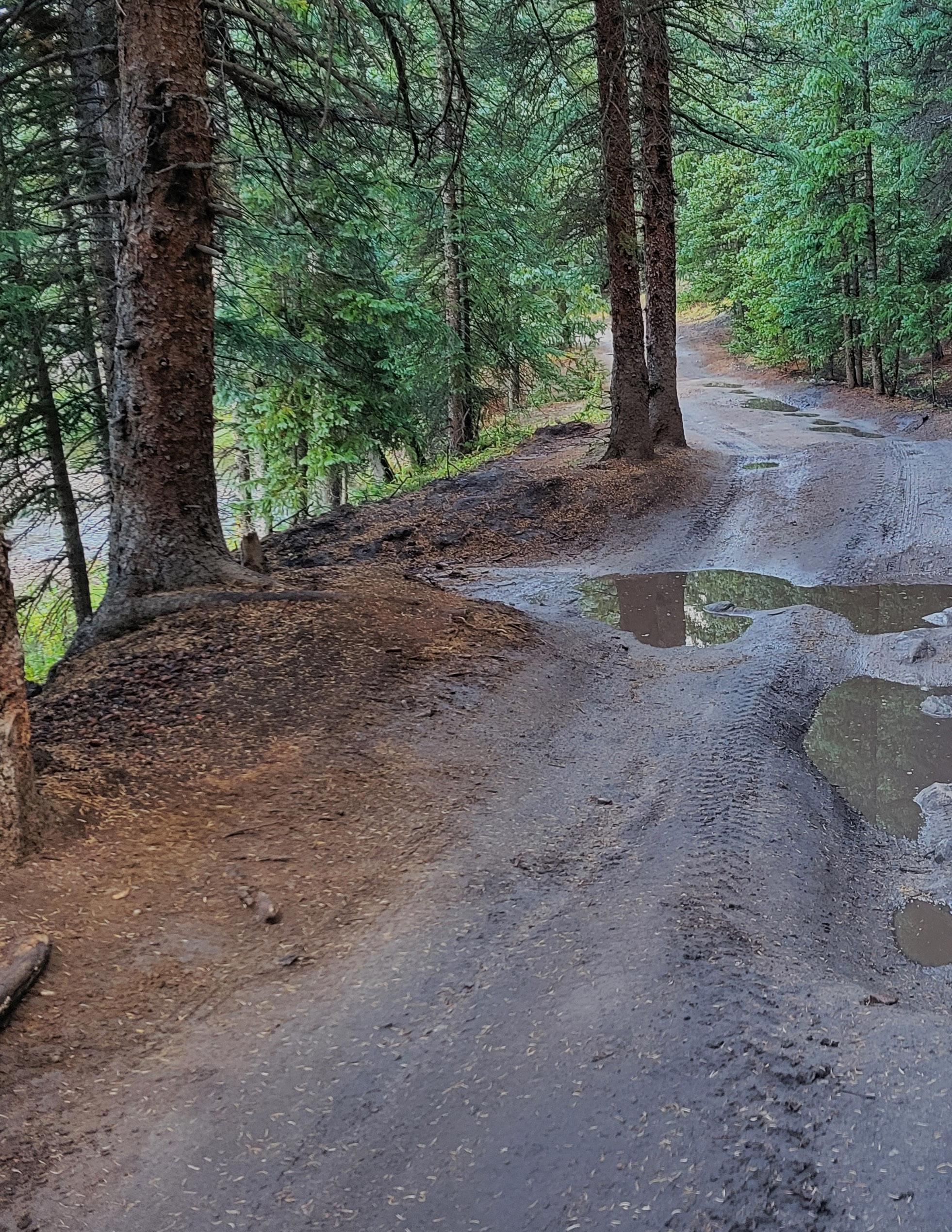
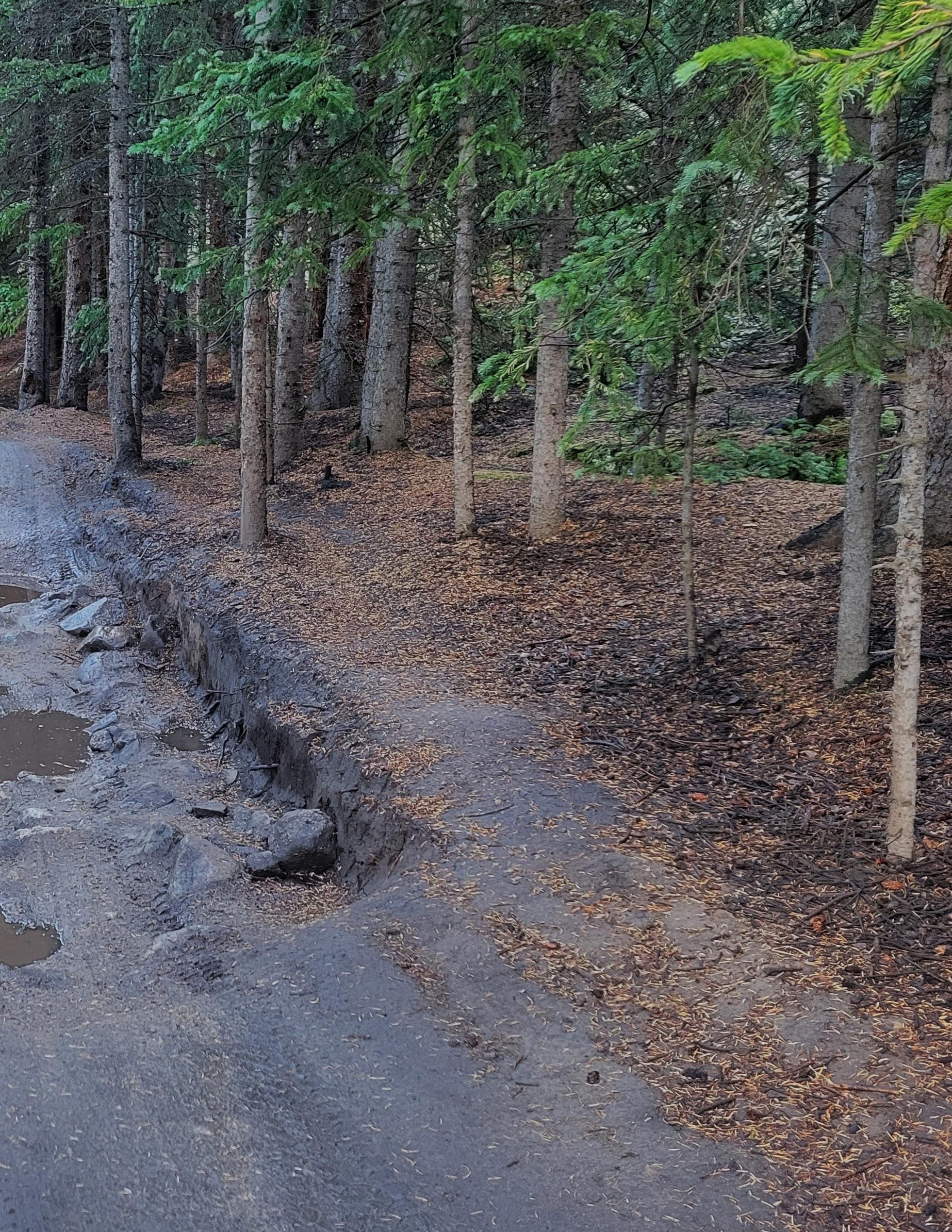 Road leading to the Collegiate Peaks Wilderness (impassible drop‐off just past the hump in the center of the picture). Photo credit: C.B. Griffin
Road leading to the Collegiate Peaks Wilderness (impassible drop‐off just past the hump in the center of the picture). Photo credit: C.B. Griffin
Access to wilderness can mean many things, including how welcoming it is to people from all backgrounds (Ronald et al. 2023). For the purposes of this commentary, the term “access” is restricted to mean getting to a wilderness trailhead. I am conducting research on US Forest Service (USFS)-managed wilderness in Colorado. The purpose of the research is to determine how accurate and comprehensive the regulations are that are posted on trailhead kiosks. My thoughts are based on having driven to approximately half of the 500 wilderness trailheads.
None of the trailheads I have visited have been accessible by any form of public transportation. This may be unsurprising, but it also means that access to Colorado wilderness areas is a function of the vehicle individuals have access to. What was surprising to me is the number of trailheads that are best accessed using a four-wheel drive and/or high-clearance vehicle. Some of the trailheads require an even more specialized vehicle, such as an all-terrain vehicle (ATV) that as recreational vehicles are often not permitted on conventional roadways (I hiked to these trailheads). Thus, in Colorado, the quality of the road, along with other factors, will determine how accessible wilderness is to visitors.
While it is true that a prospective wilderness visitor with a passenger vehicle can access wilderness by walking to the trailhead when their car can no longer be driven on the road, the reality
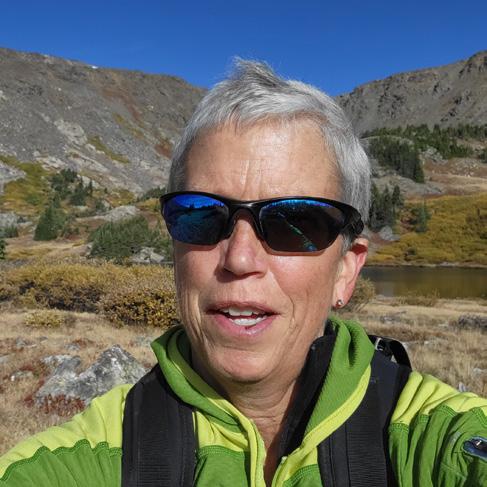
is that many trailheads would require a long hike before arriving at the trailhead. While some trailheads are very near the wilderness boundary, others require even more hiking – in some cases – several miles to get to the designated wilderness area boundary. It is also true that prospective visitors can access the wilderness without a trailhead, but in practice, this is unlikely because hiking off-trail is very difficult due to the dense understory found in Colorado forests

The USFS has several possible ways to maintain or increase wilderness access. First, they could make wilderness more accessible by focusing on increasing public transportation to wilderness trailheads. Yet there are very few places where this would work because wilderness trailheads are typically far from cities.
Second, the USFS could build more trails that have roads that accommodate passenger vehicles. However, building new trails in wilderness would seldom, if ever, survive the minimum requirements analysis.
In essence, all the trails that exist in wilderness are all the trails that will ever exist, barring any congressional change to the Wilderness Act.
Third, the USFS could increase the maintenance of existing USFS roads. In some cases, this would mean more road grading, while in other cases, more extensive work would be needed to fill in holes or remove rocks (Figure 2). The Forest Service would need to prioritize which roads to focus on given limited budgets. For example, they could focus on the cheapest roads to increase access (where a small section of road serves as the barrier to passenger vehicles), the most popular trailheads, or trailheads closer to cities.
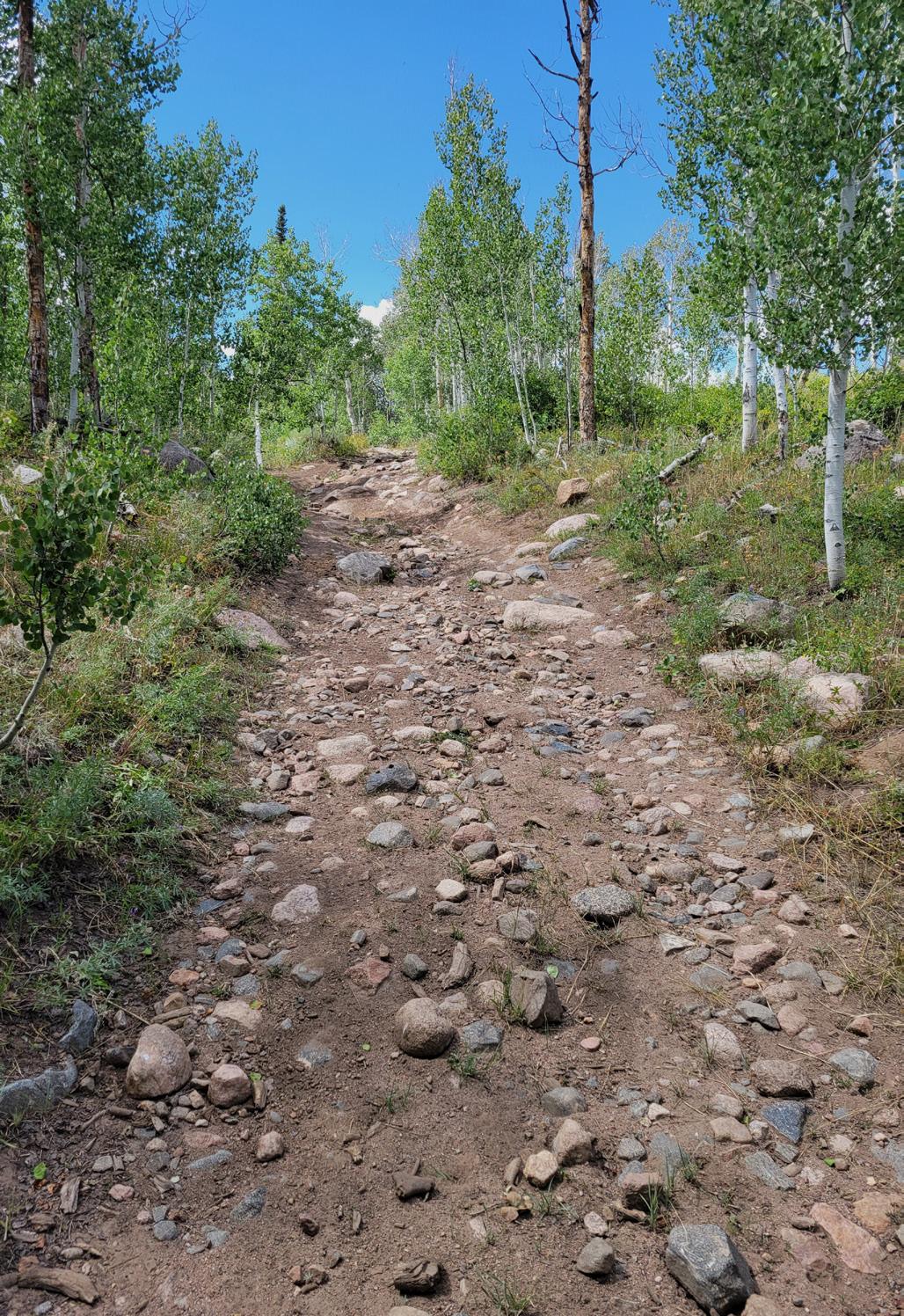

The policy the USFS is using to determine where to make road, trail, and other site improvements at developed, undeveloped, and wilderness areas is based on the results from the National Visitor Use Monitoring (NVUM) surveys. If the user surveys indicate that user satisfaction is less than the importance to users, the USFS should focus on these areas. The most recent NVUM results for most of the wilderness areas in Colorado show that there is little concern about road quality (USFS 2023a). However, the surveys are only conducted on-site; thus, if a prospective visitor never made it to the trailhead because of road conditions, their opinion is not recorded.
The USFS is aware of the road quality issue as it relates to the type of vehicle needed to access some trailheads. One employee reported, “As someone who has gone to many of those trailheads (THs) I would recommend a stout 4WD with insurance. I’ve given up on reaching some of those THs to avoid damaging my 4Runner.”
While the USFS may be focusing on the strategies I described, as well as other strate -
gies, to increase access, the current focus seems to be on improving the quality of trails, rather than improving road access. The USFS recently listed 15 high-priority areas for trail improvements, including many of the Colorado wildernesses that have one of the “14ers”: peaks that exceed 14,000 feet in elevation (USFS 2023b).
The 58 14ers (Figure 3) have always been a magnet for hikers and climbers (I have hiked 26 of them) (Sokol 2020). The trail improvement initiative is designed to improve trails with the goal of reducing the biophysical impact of people (and presumably pack-stock) on trails. Although the improvements will make it easier to find and stay on the trail and will reduce the biophysical impacts of hikers (often by hardening or rerouting the trail), they will not improve access per se. While bettermaintained trails have benefits to visitors, the bigger benefit comes from reducing biophysical impacts by encouraging users to stay on a single trail. Without maintenance, users often create a braided trail system with parallel trails leading to the same destination (Figure 4).
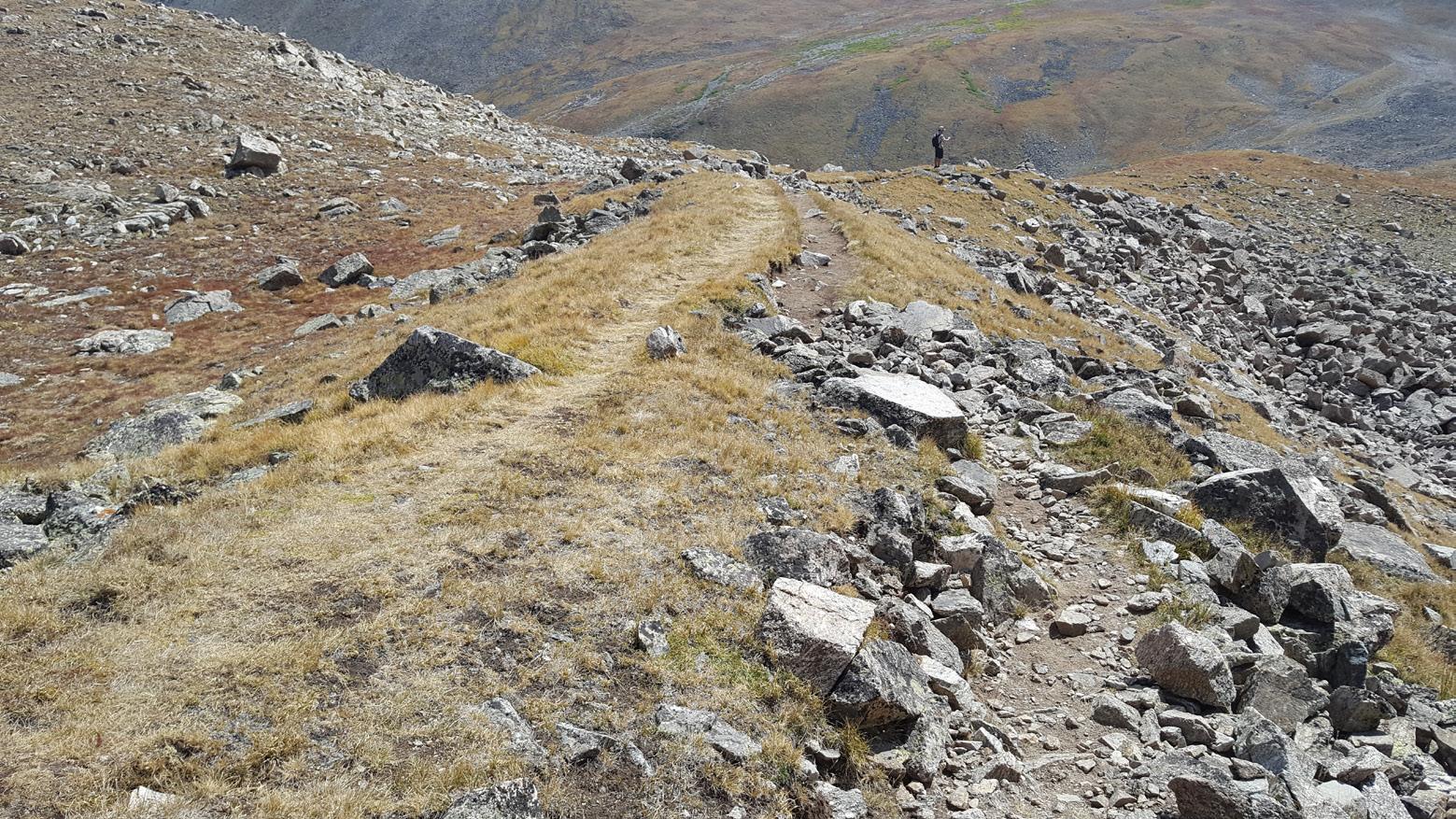
The USFS has partnered with volunteer groups to do trail maintenance throughout the country. In Colorado, the agency has a long list of partner organizations that have helped with trail maintenance (USFS 2023c). However, liability issues are likely to prevent these volunteer groups from assisting with road maintenance. There are a few examples where the USFS has partnered with Colorado Off Road Enterprise (CORE), an off-road recreation vehicle (ORV) group dedicated to “keep offroad trails in Colorado and Utah open,” to maintain some USFS roads that provide wilderness access (CORE 2023). But the focus of these is the most extreme end of road quality; the intended user is someone with an ATV or modified high-clearance vehicle rather than someone using a passenger vehicle (Figure 5).
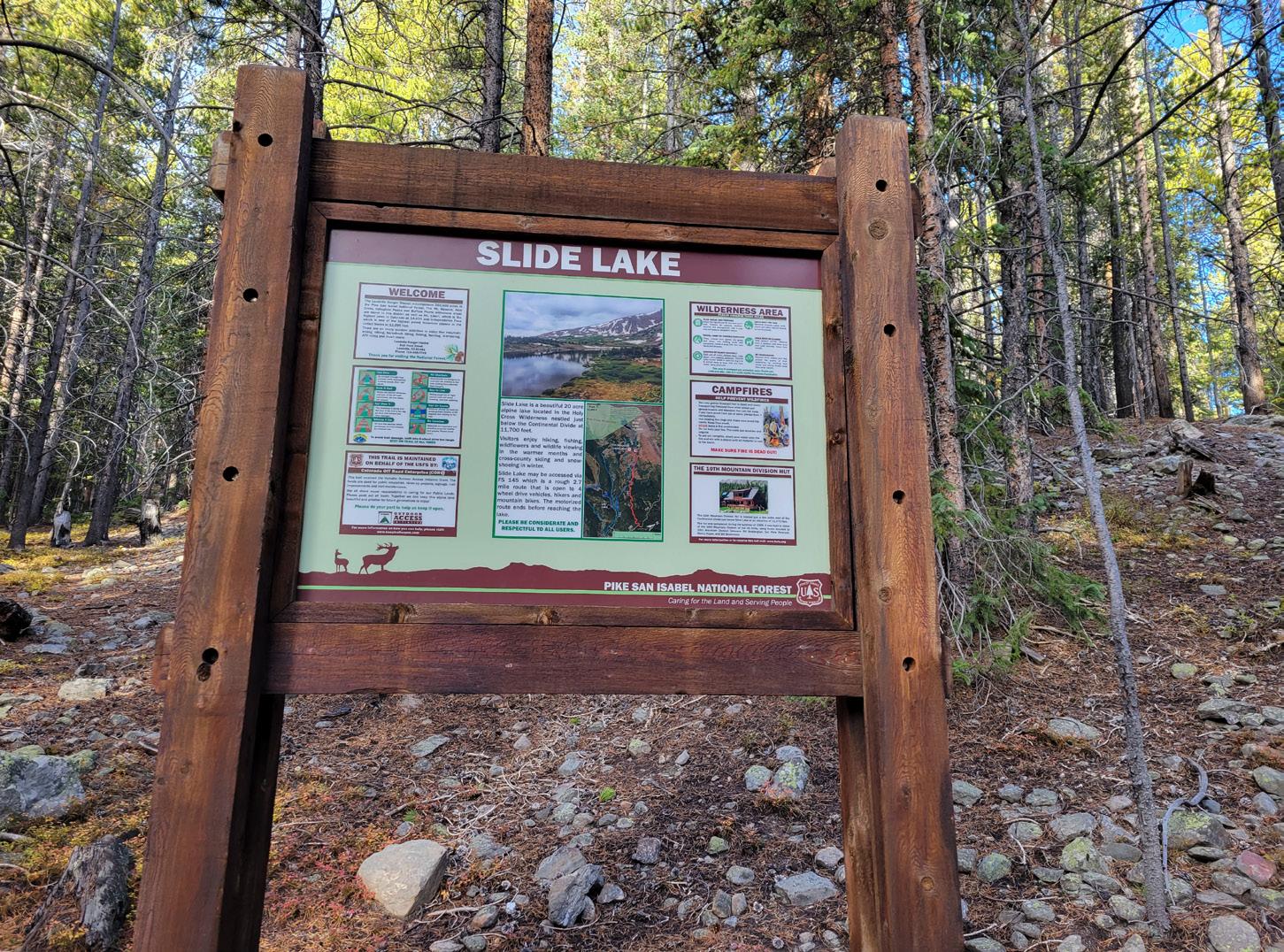
“While it is true that a prospective wilderness visitor with a passenger vehicle can access wilderness by walking to the trailhead when their car can no longer be driven on the road, the reality is that many trailheads would require a long hike before arriving at the trailhead.”
If the USFS decides not to improve the quality of roads, then roads will deteriorate. Benign neglect of road maintenance will have the same effect; roads that were accessible by passenger car will increasingly only be available by a high-clearance, 4WD vehicle or an ATV. Over time, fewer and fewer trailheads will be accessible to passenger vehicles.
If the USFS allocates additional resources to improving road quality, they will expand access to people owning passenger vehicles – a good thing. But, doing so may have negative effects. For example, more use may mean that additional trail maintenance is needed. Increased use will negatively affect wildlife in lightly used areas of the wilderness. There may be increased pressure on the USFS to expand parking lots. Finally, increased use will mean decreased solitude – one of the components of wilderness character.
This trade-off – between increasing access for potential visitors who do not own a high-clearance, 4WD vehicle and the increased expense of improving the access as well as the impact on the trails, wildlife, and solitude – is worth having further conversations about.
C. B. “GRIFF” GRIFFIN is a professor in natural resources management at Grand Valley State University; email: griffinc@gvsu.edu.
CORE. 2023. What we do. https://www.keeptrailsopen.com/what-we-do, accessed November 16, 2023.
Ronald, L., S. Ahmed, K. Bliss, J. Chakrin, T. Ekasi-Otu, K. Fox-Middleton, J. Harrington, S. Johnson, T. Mazzei, J. Mejia, and R. Osorio. Can we make wilderness more welcoming? An assessment of barriers to inclusion. 2023. International Journal of Wilderness 29(1): 16–41.
Sokol, R. 2020. Toward sustainable recreation on Colorado’s fourteeners. University of Colorado Law Review, 91(1): 345–[xiv].
USFS. 2023a. National Visitor Use Monitoring program. https://www.fs.usda.gov/about-agency/nvum, accessed November 20, 2023.
USFS. 2023b. Trail Maintenance Priority Areas. https://www.fs.usda.gov/managing-land/trails/priority-areas, accessed November 16, 2023.
USFS. 2023c. Colorado fourteeners. https://www.fs.usda.gov/managing-land/trails/priority-areas/colorado-fourteeners.
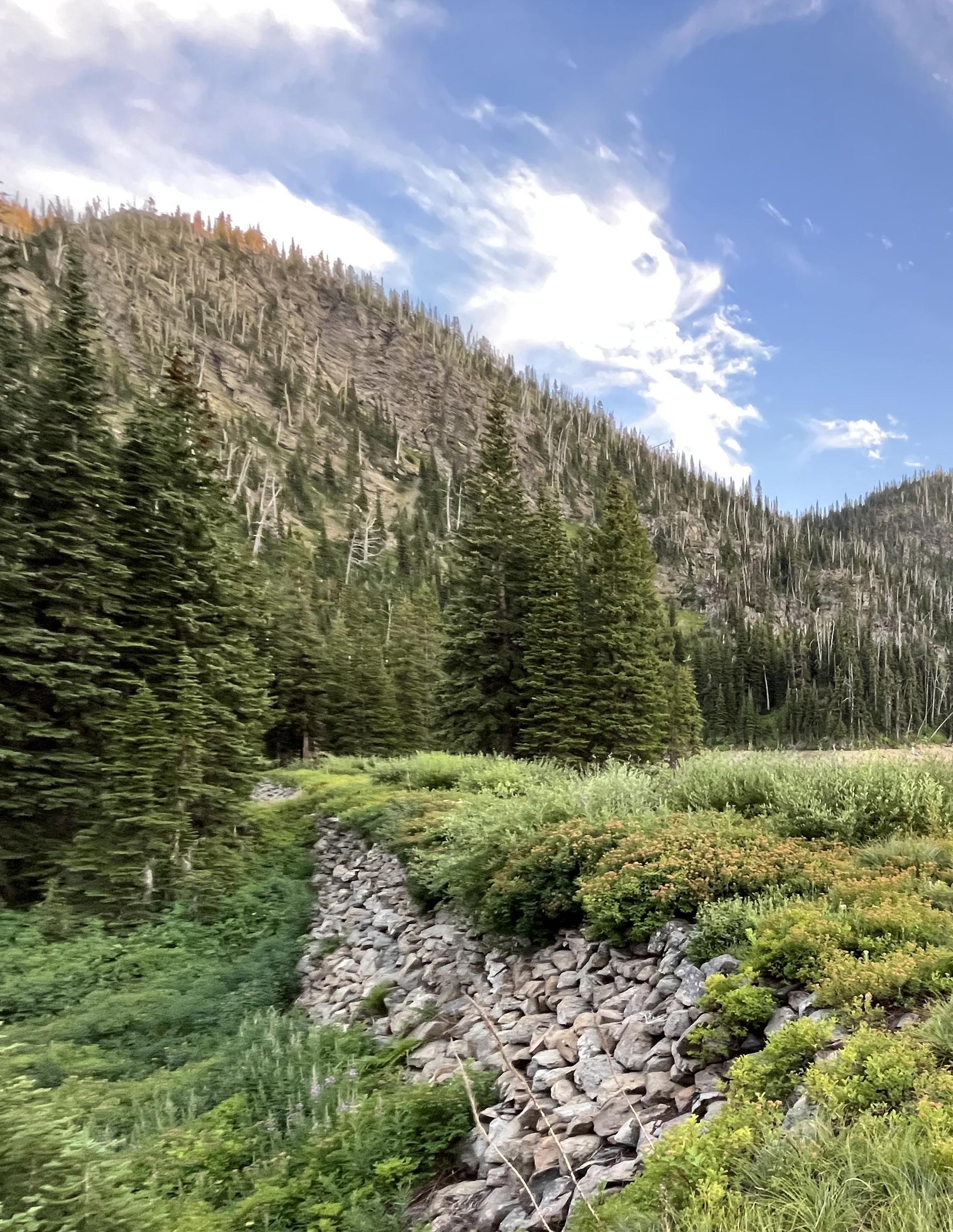
 The dam on McKinley Lake, Rattlesnake Wilderness. Photo credit: Peter Whitney/City of Missoula.
The dam on McKinley Lake, Rattlesnake Wilderness. Photo credit: Peter Whitney/City of Missoula.
Managers of designated wilderness in the United States are challenged by the complex issue of how to address existing dams and water storage. Dams can exist in wilderness, as they are considered a special provision that can provide a variety of benefits to society; however, dams are also considered a potential threat to wilderness character. We review the issue of dams in wilderness, and then present the results from a study in the Rattlesnake Wilderness in Montana where visitor opinions around dam removal or maintenance were assessed. Our aim through this present research is to examine public agreement or disagreement with removing or maintaining dams in a federally designated wilderness. The findings demonstrate a nuanced perspective among visitors, with support for assessing dams on a case-by-case basis and recognizing the importance of managing wilderness for climate change resiliency.
Keywords: dams; Rattlesnake Wilderness; special provisions; visitor survey; water storage
AUTHOR'S NOTE: Funding for this research was provided by the City of Missoula, Montana, USA. The findings and conclusions in this publication are those of the authors and should not be construed to represent any official USDA or US government determination or policy.
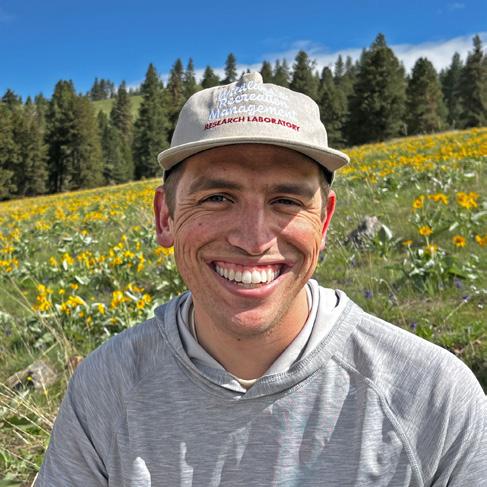

“The findings demonstrate a nuanced perspective among visitors, with support for assessing dams on a case-by-case basis and recognizing the importance of managing wilderness for climate change resiliency. These results contribute to ongoing discussions on the management of wilderness areas in the face of climate change . . . and highlight the need for adaptive management strategies that carefully balance ecological, recreational, and cultural considerations.”
Dams have largely been characterized as antithetical to wilderness. In his influential and now-famous 1955 essay “Marks of Human Passage” in opposition to dams in Dinosaur National Monument, Wallace Stegner puts the two in direct opposition. Scholars frequently cite high-profile dam controversies of the Hetch Hetchy Valley, Glen Canyon, Grand Canyon, and Echo Park as key catalysts of the modern wilderness movement (e.g., Harvey 1991; Nash 2014). Yet, according to Zellmer (2012), approximately 200 dams are located within the bounds of federally designated wilderness areas in the United States (all of which were built prior to designation or were built on previous dam sites existing prior to designation); 144 dams existed in the initial 9.1 million acres of wilderness designated with the passage of the Wilderness Act in 1964 (Gunderson and Cook 2007). Most of these dams were constructed to increase the water storage capacity of existing lakes (Nickas 1999). Concerning the Wilderness Act, dams are generally considered to be detriments to wilderness character as they constitute development in wilderness and trammel hydrological and ecological processes (Nickas 1999). In special provisions listed in section 4(d) of the Act, however, it is stated that:
The President may, within a specific area and in accordance with such regulations as he may deem desirable, authorize prospecting for water resources, the establishment and maintenance of reservoirs, water-conservation works, power projects, transmission lines, and other facilities needed in the public interest.
While the president has not yet used this provision (as of 2012), it has been utilized by Congress when designating new wilderness areas with existing dams (Nie and Barns 2012).
Our aim through this present research is to examine public agreement or disagreement with removing or maintaining dams in a federally designated wilderness. The conundrum concerning how to reconcile existing dams in wilderness has led to varying outcomes. The Tin Cup Dam in the Selway-Bitterroot Wilderness has previously been maintained with motorized equipment and – in at least one instance – using heavy construction equipment that was airlifted to the site (Nickas 1999). The Boundary Waters Canoe Area Wilderness has a storied history of dam maintenance and reconstruction – even going as far as replacing the early rock and timber Prairie Portage Dam with a concrete dam in 1975 (Proescholdt 1985). However, more recently, a US district court found that the decision of the US Forest
Service to repair dams in California’s Emigrant Wilderness was “clearly” contrary to the provisions of the Wilderness Act (Carsley 2013, p. 549). The resulting 2006 decision instructed the US Forest Service to let the dams decay naturally (Zellmer 2012).
Interestingly, in October 2009, the National Park Service removed the Lower Glenbrook Dam on the Estero de Limantour within the bounds of Point Reyes National Seashore’s Phillip Burton Wilderness. The project was initially proposed to restore ecological and hydrological processes, mitigate a public safety hazard, remove a nonconforming structure from the wilderness, and restore the natural character of the wilderness (National Park Service 2009). However, climate change was also cited as a key consideration throughout the project’s review process. In the National Park Service’s “Basis for the Decision” resulting from the NEPA process, the agency states that the action will “better enable the
estuary and surrounding natural resources to adapt to potential impacts of Global Climate Change, including sea level rise” (2009, p. 17).
The dam was removed in one week using an excavator, dump trucks, bulldozers, and other mechanized equipment (National Park Service 2009).
The ecological restoration and climate resiliency reasoning invoked in the Phillip Burton Wilderness example is also alluded to in the US district court’s decision concerning the Emigrant Dams. Although concluding that support of recreational fishing was not an appropriate purpose, the court noted that dam maintenance may be justified based on the restoration of native trout populations (Long and Biber 2014). In the Phillip Burton Wilderness, it was determined by the agency that the dam should be removed, in part, to support ecosystem restoration. However, the courts suggest that dams in the Emigrant Wilderness might be maintained for similar reasons of
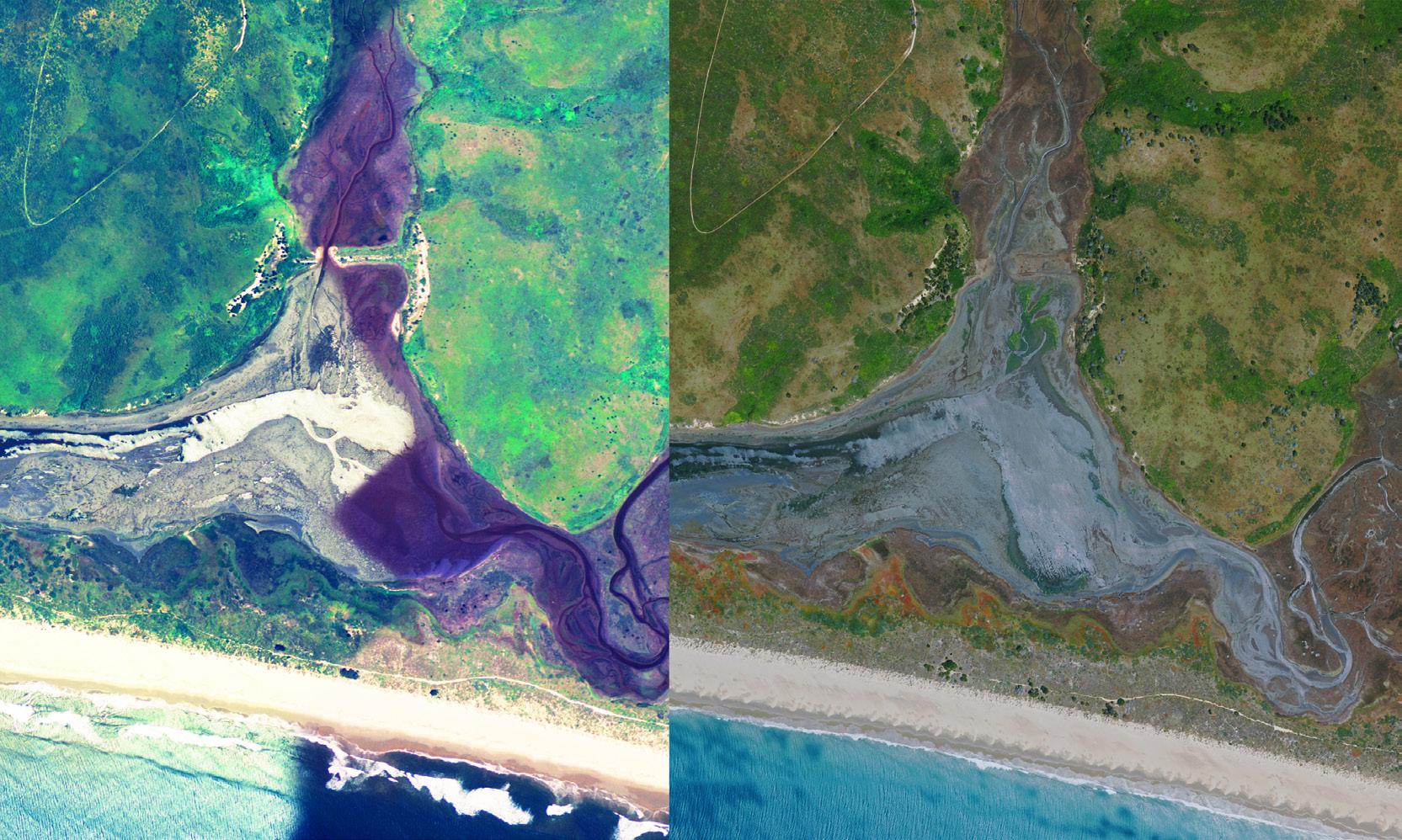
ecosystem restoration, if appropriate.
Climate change introduces new challenges to wilderness management, which have been noted for well over a decade (Graber 2011; Long and Biber 2014; Stephenson and Millar 2011; Zellmer 2012). Principle among these challenges is the conundrum of how to address the impacts of climate change on wilderness character. As asked by Stephenson and Millar (2011), “If untrammeled was meant to refer to an absence of intentional human influences, what are we to make of pervasive unintentional human influences, like anthropogenic climatic change?” (p. 34). The authors conclude that when assessing the trade-off between natural and untrammeled aspects of wilderness character when faced with accelerating climate change, it is expected that justification for intervening (or trammeling) will increase over time (Stephenson and Millar 2011). Thus, Nie and Barns (2012) contemplate the future role of the special provisions granted to the president in section 4(d) of the Wilderness Act concerning the establishment and maintenance of reservoirs in the face of climate change. They cite the case of the proposed San Juan Mountains Wilderness Act of 2011 wherein the US Forest Service opposed measures in the bill to prohibit water development projects. Other authors have also highlighted that – despite the Wilderness Act’s reputation as being largely inflexible –the act’s limited “flexibility” is well positioned toward climate adaptation (Long and Biber 2014).
Importantly, as others have noted, this flexibility may be utilized as a means of translocating species in need of climate
refugia (Appel 2015; Camacho 2010). For example, Galloway et al. (2016) developed a framework for managers to use when assessing the feasibility of transplanting threatened fish populations into historically unoccupied lakes and streams with the aim of providing climate resilience. They tested this framework in an evaluation of translocating threatened bull trout upstream to formerly unoccupied climate refugia – a trammeling action that managers then undertook in 2014 within an area managed as wilderness in Montana’s Glacier National Park. However, as found by Watson et al. (2015) through a study of visitor attitudes toward management intervention to adapt to climate change in Sequoia and Kings Canyon National Parks’ wilderness, there is an apparent conflict between the perceived naturalness dimension of wilderness and support for intervention to adapt to climate change. The authors’ findings highlight that individuals’ understanding of wilderness is both highly complex and variable across individuals and social groups.
Thus, given the nuance concerning the human construct of wilderness character and the role wilderness might play in a warmer, drier Anthropocene, perspectives on the management of dams in wilderness may prove useful in understanding visitor support for possible management actions. Therefore, we have developed the following research question in service of providing such insight: How does agreement for removing or maintaining wilderness dams vary based on the reasoning provided concerning wilderness character and climate change?
We examined our selected research question in the context of the Rattlesnake Wilderness. The Rattlesnake Wilderness is located within the Rattlesnake National Recreation Area on the Lolo National Forest in western Montana. Designated in 1980, the Rattlesnake Wilderness encompasses much of the headwaters of the Rattlesnake Creek watershed, a municipal watershed in the City of Missoula, Montana. Séliš and Ql ispé people have occupied the watershed since time immemorial, and the importance of Rattlesnake Creek is reflected in its name –N ay Sew k s (small bull trout’s waters). Today the watershed provides important habitat for bull trout, listed as threatened under the Endangered Species Act. The wilderness offers year-round opportunities for backpacking, ultrarunning, fishing, alpine ski touring,
and long-distance day hiking. The wilderness contains numerous high mountain lakes, eight of which were dammed by the Montana Power Company (who later sold the dams to the Mountain Water Company in 1979) between 1911 and 1923 to increase water storage capacity (Chaney 2021). The Rattlesnake National Recreation Area and Wilderness Act of 1980 alludes to the dammed lakes in section 1(a) as “water storage” and “clean, freeflowing waters stored and used for municipal purposes” – although it does not reference the dams directly.
In 2017, the City of Missoula acquired ownership of the dams from Mountain Water Company (Chaney 2021). In recent years, the City of Missoula; Montana Fish, Wildlife, and Parks; and Trout Unlimited have recognized the resiliency potential for some of the larger dams in the Rattlesnake Wilderness. They can provide climate resiliency for threatened
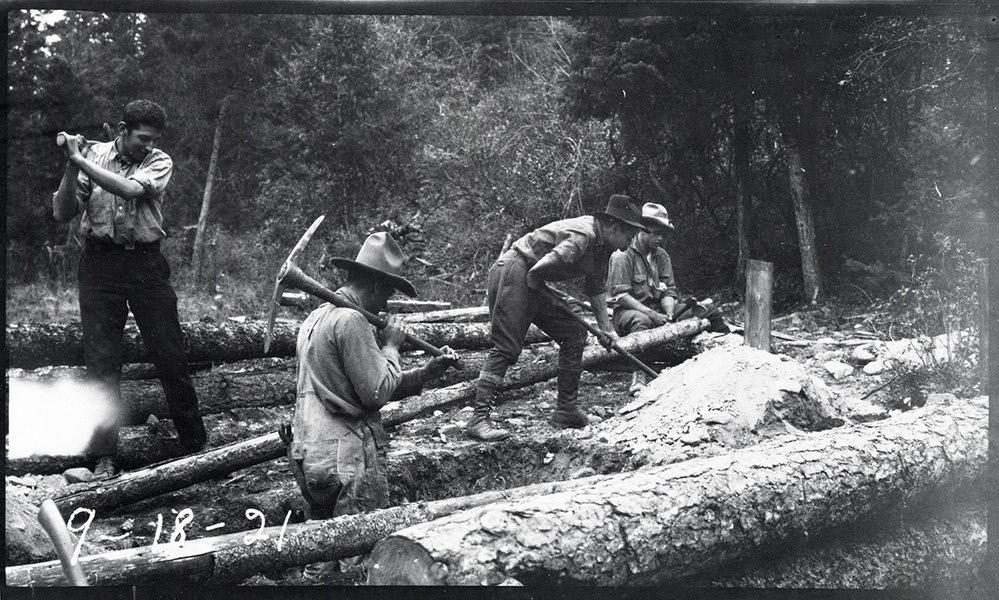
bull trout by storing cool water deep in their reservoirs through the winter and spring and releasing it into Rattlesnake Creek tributaries during drier, hotter summer months (Evans 2022). This would require maintaining, and potentially rebuilding, at least one existing dam (Evans 2022). In 2018, the city and the US Forest Service began a planning process concerning the future management (removal or maintenance) of the wilderness dams.
To inform that planning process, the City of Missoula sought visitor input concerning the future management of the dams.
Six statements (Table 1) were developed collaboratively between the research team, US Forest Service Wilderness staff, and City of Missoula Conservation Lands staff through a process where scenarios and justifications for removing or maintaining the dams were developed. Additionally, the following statement was developed as a means of ensuring survey respondents received official language developed by US Forest Service and City of Missoula staff to inform them of the dams’ history and management prior to responding to the statements:
The Rattlesnake Wilderness contains 10 dams built on 8 high mountain lakes in the headwaters of Rattlesnake Creek. Rattlesnake Creek was the original water supply for early settlers in Missoula, and the dams were constructed between 1911 and 1923 to add to the water supply. These dams were built decades before the U.S. Forest Service owned the area. In 1980, much of the land in the Rattlesnake Creek headwaters was
designated as the Rattlesnake Wilderness and National Recreation Area. The existence and maintenance of the dams constitute a “special provision” in Wilderness. Maintenance can occur much as it had before the area was designated as Wilderness. Currently, the City of Missoula owns and is responsible for maintenance of these dams and many of the trails and roads which connect them. The City of Missoula and partner agencies are considering what to do with these dams, including repair and/or removal options.
After reading this paragraph, respondents were asked: “For each statement, please indicate your level of agreement: The dams should be . . .”
The study was approved by the University of Montana Institutional Review Board (Study #56-22) and Lolo National Forest. The visitor survey was administered at six trailhead locations providing access to the Rattlesnake Wilderness: the Main Rattlesnake, Equestrian, Sawmill Gulch, Lincoln Hills, Gold Creek, and West Gold Creek Trailheads (see Figure 3). The sampling locations were selected in collaboration with City of Missoula and US Forest Service personnel based on relative visitor traffic, access to varying portions of the Rattlesnake National Recreation Area and Wilderness, and previously conducted research (Watson et al. 1991; Williams et al. 1992). Sampling was randomly stratified by location, day of the week, and time of day, and occurred throughout the week, including weekends, from May 11, 2022, to February 19, 2023; surveys were administered in approxi -
mately eight-hour time-blocks, two days a week. A stratified-cluster sampling method was used to account for differences in the density of use among sites (e.g., the difference between weekday and weekend use) in an effort to conduct a representative survey at each access point (Vaske 2019).
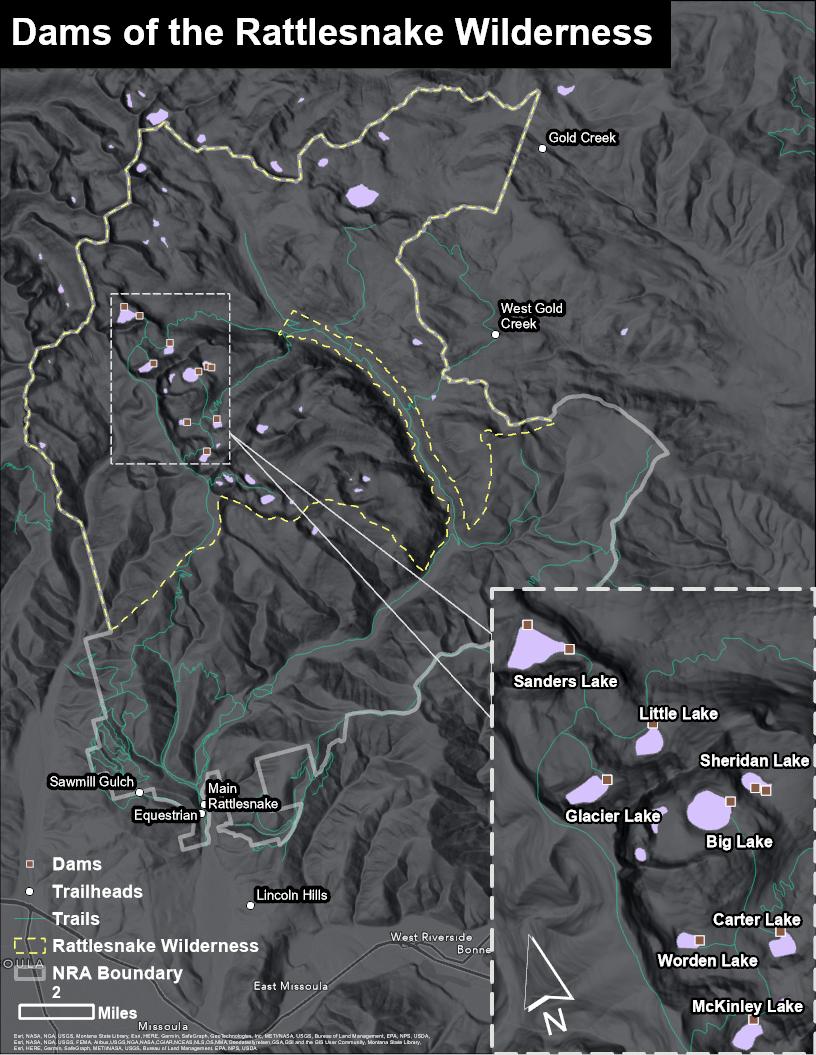
Researchers utilized a random number generator and systematically intercepted visitors at the trailhead survey locations by approaching every nth person or group as they passed by to politely ask for their participation in the study. This number represented the minute on the hour for visitor interception. For example, if the number generated was an “8,” at 8 minutes
past the hour the researcher would intercept the next visitor. For groups, one person over the age of 18 was asked to complete a survey. If multiple people were willing, then the person with the nearest birthday was selected to participate. If that person did not want to participate, another member of the group could volunteer if they desired. Survey responses were collected through the use of Qualtrics on tablets, or a paper copy of the questionnaire, if requested. Five surveys were completed through a QR code posted at the remote Gold Creek trailhead due to sparse use (less than one visit per day on average), and, in two instances, through a Qualtrics link sent via email, for visitors who could not complete the survey at the trailhead due to significant time constraints.
Data cleaning and descriptive statistics (means and standard deviations) are reported following guidance from Vaske (2019). “Straight-liners” (those answering each dam-related item with the same value, other than neutral) were removed from the dataset. Within-subjects ANOVA was employed to examine differences in respondents’ agreement between statements (Myers et al. 2010). In the case of non-sphericity, a Huynh-Feldt adjustment was applied (Myers et al. 2010).
Statistical significance was assessed at a 99.9% confidence interval.
With a response rate of 95.65%, a total of 398 responses were collected. The average age of respondents was 45 years old, with 77.3% of respondents residing in the greater Missoula, Montana, area. The majority of respondents identified as White (94.7%), followed by Asian (1.9%), American Indian or Alaska Native (1.4%), and Native Hawaiian or Pacific Islander (0.2%).
As reported in Table 1, across our sample, the highest level of agreement among visitors was with the statement that the Rattlesnake Wilderness dams should be assessed on a case-by-case basis (M = 0.91), followed by agreement that the dams should be maintained and managed to provide climate resiliency (M = 0.65), and that they should be
removed because they modify a naturally functioning ecosystem (M = 0.18). There was less agreement on the dams’ removal based on human development concerns and the dams’ maintenance for recreational amenities or historical and cultural significance. It is notable that, overall, the sentiments regarding the treatment of dams in wilderness are moderate, as no statements had a mean score exceeding an absolute value of 1 (i.e., all means were between -1 = Disagree and 1 = Agree on a scale ranging from -2 to 2). In other words, no means represent strong agreement or disagreement (see Table 1). Standard deviations were relatively level across statement (ranging between 0.95 and 1.18).
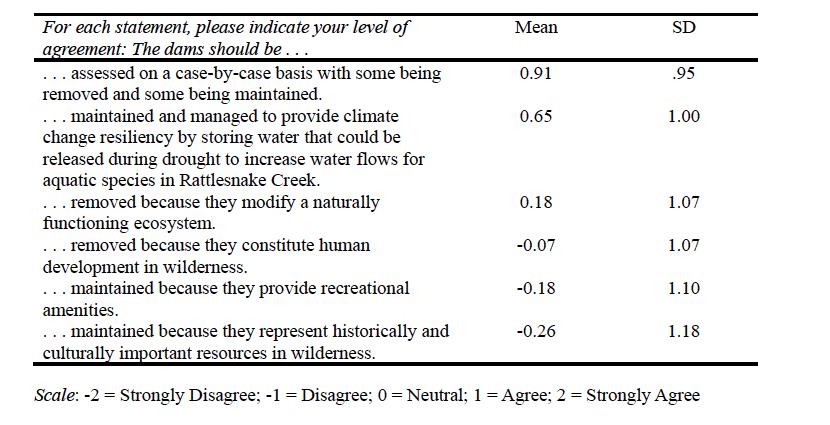
Table 2 presents the results of a withinsubjects ANOVA examining individuals’ levels of agreement regarding the maintenance – not the removal – of the wilderness dams.
The data violated a statistical assumption of sphericity. To address this, a Huynh-Feldt adjustment was applied. The first statement, with a mean of 0.65, suggests moderate agreement, on average, that the dams should be maintained and managed to provide climate change resiliency by storing water that can be released during drought to increase water flows for aquatic species in Rattlesnake Creek. The second and third statements, with means of -0.18 and -0.26, respectively, indicate relative disagreement to neutral feelings that the dams should be maintained for recreational amenities and as historically
and culturally important resources in the wilderness. The ANOVA results reveal that participants are significantly more agreeable to maintaining the dams for climate resilience compared to other presented reasons.
The findings of this study provide valuable insights into public attitudes toward the management of dams in wilderness areas, particularly in the context of wilderness character and climate change. Based on the results presented in Table 1, visitors appear to generally understand the complexity of the decision to remove or maintain the Rattlesnake Wilderness dams, as respondents, on average, agreed that the dams should be assessed on a case-by-case basis. It is also
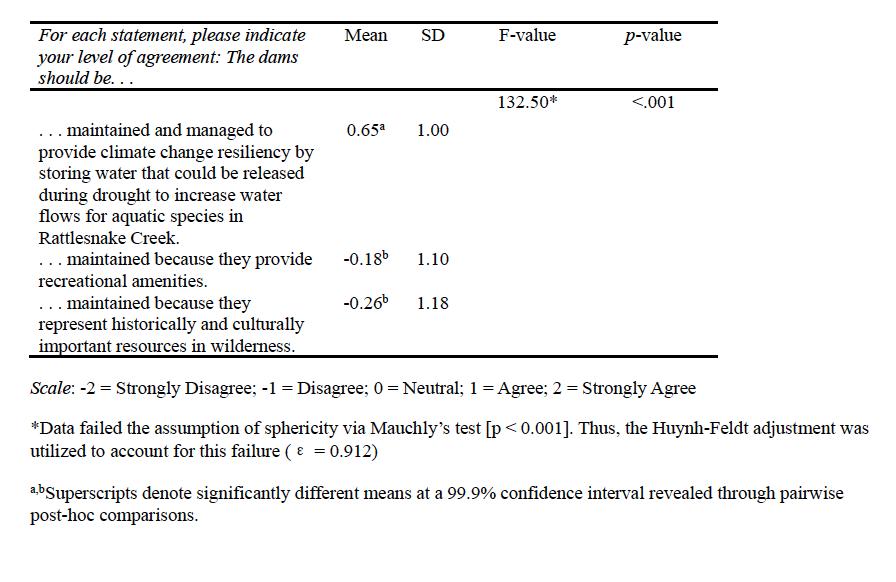
possible that engaged Missoula residents are aware that this is the current process for decision-making (Chaney 2021; Evans 2022). Importantly, this line of thinking also mirrors the national story of the dam dilemma in wilderness – with some being maintained, others being left to decay, and others being removed (National Park Service 2009; Nickas 1999; Zellmer 2012).
The moderate level of agreement regarding maintaining dams for climate change resiliency highlights the growing recognition of the challenges posed by climate change in wilderness management (Long and Biber 2014; Stephenson and Millar 2011). As climate change continues to impact ecosystems, the role of dams in storing and releasing water to support aquatic species during droughts becomes increasingly important (Evans 2022).
This finding aligns with previous studies that have emphasized the flexibility of the Wilderness Act to adapt to the impacts of climate change (Nie and Barns 2012). It also suggests that visitors recognize the potential benefits (e.g., fishing opportunities, living in a more intact ecosystem, etc.) of maintaining these relatively small wilderness dams for ecosystem restoration and adaptation to changing environmental conditions in the northern Rocky Mountains.
The neutral to disagreeing sentiments reported, on average, regarding the maintenance of dams for recreational amenities and historical and cultural importance provide implications of their own. The lack of agreement concerning maintaining the dams for recreational value may be reflective of a number of factors, including the diverse
recreational opportunities available across the Rattlesnake Wilderness (and the surrounding national recreation area) and the assumption that lakeside camping and fishing opportunities would still be available with smaller lakes (reduced back to their natural size once the dams were removed). Additionally, this finding may represent a disconnect between how visitors conceptualize the impacts of climate change on aquatic species and the recreational opportunities (i.e., fishing) that rely on those aquatic species. Concerning the lack of agreement on maintaining the dams for their historical and cultural importance, we reflect on the long-established trade-off between historic preservation and wilderness character (Carsley 2013; Chellis 2017; Stelson et al. 2020). It is entirely possible that the Rattlesnake Wilderness dams are eligible for listing in the National Register of Historic Places (Carsley 2013; Neuman and Reinburg 1989). If that were to occur, the goals of the National Historic Preservation Act and the Wilderness Act would need to be reconciled, as was deliberated by the courts in the Emigrant Wilderness (Carsley 2013). Our survey results provide a unique perspective concerning how visitors view this trade-off.
The results of the within-subjects ANOVA demonstrate that participants’ agreement levels differ significantly depending on the stated reasoning for maintaining the dams. Visitors showed significantly higher levels of agreement for maintaining dams for climate
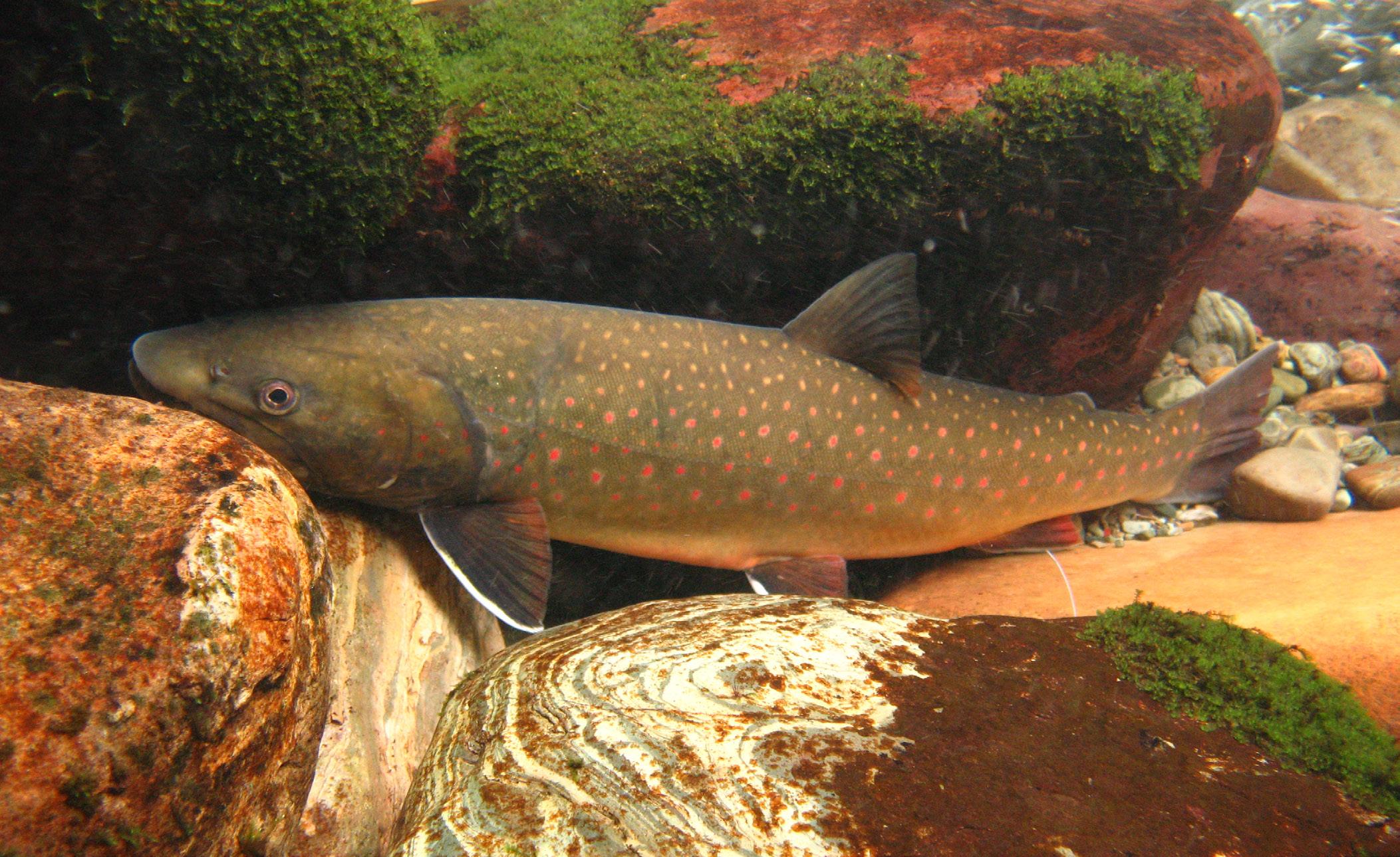
change resiliency compared to recreational amenities and historical/cultural significance. This suggests that the ecological rationale of maintaining dams for climate change adaptation resonates more strongly with visitors, indicating a recognition of the benefits of direct management in the face of environmental challenges. As shown in the Phillip Burton Wilderness example, such justification has been successfully used as a rationale – albeit to remove, not maintain – a wilderness dam (National Park Service 2009). However, it is important to ensure that such results – as those presented here – are not considered in a vacuum. The City of Missoula and US Forest Service, in the case of the Rattlesnake dams, likely will not base their decisions regarding the dams on a single reasoning. There is value in considering the contributions of each
reason for maintaining or removing each dam, and the interactions between the underlying values behind each reason (e.g., how the climate resiliency provided by the dams would impact the recreation experience, how removing the development represented by the dams in wilderness would impact the recreation experience). Such complex reasoning mirrors the complexity of wilderness character. While the Keeping It Wild framework (Landres et al. 2008) places wilderness character qualities into the “bins” of undeveloped, untrammeled solitude or primitive and unconfined recreation, and the miscellaneous fifth quality – we stress that this reductionist approach may lead to overlooking the interactions between these qualities and the intangible nature of wilderness. It is difficult to hypothesize how a wilderness visitor might react, for example,
to a bull trout’s rise to feed on a fly in Rattlesnake Creek – knowing that the bull trout’s very existence in this watershed is aided by developments in wilderness. Do the dams add or detract from the sense of wilderness? A quick wilderness character assessment might suggest that the dams’ presence in wilderness simply constitutes development and thus detracts. But, as our results suggest, it is not quite that simple.
Overall, these findings contribute to the ongoing discussion on the management of dams in wilderness areas. They highlight the importance of considering the unique circumstances and justifications for maintaining or removing dams on a case-by-case basis. Moreover, the results underscore the value of adaptive management strategies that consider climate change resiliency while carefully considering the impacts on wilderness character, recreational opportunities, and cultural resources. The findings of this study present unique implications for wilderness managers and policymakers involved in dam management decisions. The recognition of visitors’ support for assessing dams on a case-by-case basis can inform decision-making processes by considering a range of factors, including ecological restoration, climate change adaptation, and cultural and historical significance. This study also emphasizes the importance of engaging with the public and incorporating diverse perspectives to ensure transparency and legitimacy in dam management decisions.
It is important to acknowledge, however, the limitations of this study. The research was conducted in a specific geographic context, an urban-proximate federally designated
wilderness containing dams owned by a municipality, which may limit the generalizability of the findings to other wilderness areas. Additionally, we did not ask participants to consider the rationale of maintaining or removing dams within the context of municipal uses, and other uses such as irrigation for agriculture and public safety, because such uses of dams are nominal in the Rattlesnake. However, municipal use, agricultural use, and/or public safety may be highly relevant in other contexts; indeed, managers of the Alpine Lakes Wilderness in Washington are currently challenged by a decision to allow dam construction (i.e., raise the height of an existing dam, maintain other dams) to, in large part, support downstream agricultural use and address safety concerns related to potential dam failure (Bush 2019). Third, we did not explicitly name bull trout in the questionnaire, instead referencing climate resiliency for aquatic species in general. It is possible that visitors’ perspectives may vary across aquatic species and their threatened or endangered status. Additionally, the inclusion of five surveys completed via QR code at a remote trailhead may introduce error into these results; however we elected to include these responses in an attempt to provide more complete, representative perspectives. Finally, the study focused on visitors’ perspectives, and further research is needed to explore the perspectives of other stakeholders, such as local communities, Indigenous groups, and environmental organizations.
This study provides valuable insights into visitors’ perspectives on the management of dams in federally designated wilderness. The findings demonstrate a nuanced perspective among visitors, with support for assessing dams on a case-by-case basis and recognizing the importance of managing wilderness for climate change resiliency. These results contribute to ongoing discussions on the management of wilderness areas in the face of climate change (Graber 2011; Long and Biber 2014; Stephenson and Millar 2011; Zellmer 2012) and highlight the need for adaptive management strategies that carefully balance ecological, recreational, and cultural considerations. Future research should continue to explore public attitudes and perspectives on dam management in different wilderness contexts to further inform decision-making processes and promote sustainable and resilient wilderness management practices.
WILLIAM L. RICE is an assistant professor of outdoor recreation and wildland m anagement at the University of Montana, Parks, Tourism, and Recreation Management Program; email:william.rice@umontana.edu.
CHRISTOPHER A. ARMATAS is a research social scientist with the Aldo Leopold Wilderness Research Institute, USDA Forest Service; email: christopher.armatas@usda.gov.
Appel, P. A. 2015. Planning for adaptation and restoration in wilderness. George Washington Journal of Energy and Environmental Law 6(2): 52–59.
Bush, E. 2019, January 3. Officials seek dam upgrades in Alpine Lakes Wilderness to help salmon, water demand. The Seattle Times. https://www.seattletimes.com/seattle-news/environment/officials-seek-dam-upgrades-inalpine-lake-wilderness-to-help-salmon-water-demand/.
Camacho, A. E. 2010. Assisted migration: Redefining nature and natural resource law under climate change. Yale Journal on Regulation 27(2): 171–256.
Carsley, N. 2013. When old becomes new: Reconciling the commands of the Wilderness Act and the National Historic Preservation Act. Washington Law Review 88: 525–558.
Chaney, R. 2021, August 24. Dammed if you do, damned if you don’t: Rattlesnake Wilderness presents challenges. Missoulian, 1.
Chellis, C. 2017. Playing nice in the sandbox: Making room for historic structures in Olympic National Park. Washington Journal of Environmental Law & Policy 7(1): 35–64. https://doi.org/10.3868/s050-004-015-0003-8.
Evans, C. 2022, May 16. Could rehabbing dams in the Rattlesnake Wilderness help native trout struggling with climate change? Montana Free Press. https://montanafreepress.org/2022/05/16/rehabbing-dams-in-rattlesnakewilderness-may-help-native-trout/.
Galloway, B. T., C. C. Muhlfeld, C. S. Guy, C. C. Downs, and W. A. Fredenberg. 2016. A framework for assessing the feasibility of native fish conservation translocations: Applications to threatened bull trout. North American Journal of Fisheries Management 36(4): 754–768. https://doi.org/10.1080/02755947.2016.1146177.
Graber, D. 2011. Climate change threatens wilderness integrity. Park Science 28(3): 39–41.
Gunderson, K., and C. Cook. 2007. Wilderness, water, and quality of life in the Bitterroot Valley. In Science and Stewardship to Protect and Sustain Wilderness Values: Eighth World Wilderness Congress Symposium,: September 30–October 6, 2005, Anchorage, AK, ed. A. Watson, J. Sproull, and L. Dean (pp. 537–544). Proceedings RMRS-P-4. US Department of Agriculture, Forest Service, Rocky Mountain Research Station.
Harvey, M. W. T. 1991. Echo Park, Glen Canyon, and the postwar wilderness movement. Pacific Historical Review 60(1): 43–67. https://doi.org/10.2307/3640418.
Landres, P., C. Barns, J. G. Dennis, T. Devine, P. Geissler, C. S. McCasland, L. Merigliano, J. Seastrand, and R. Swain. 2008. Keeping It Wild: An Interagency Strategy to Monitor Trends in Wilderness Character across the National Wilderness Preservation System. USDA Forest Service – General Technical Report RMRS-GTR. https://doi. org/10.2737/RMRS-GTR-212.
Long, E., and E. Biber. 2014. The Wilderness Act and climate change adaptation. Environmental Law 44: 623–694.
Myers, J. L., A. D. Well, J. R. F. Lorch, T. Woolley, S. Kimmins, R. Harrison, and P. Harrison. 2010. Research Design and Statistical Analysis, 3rd ed. Taylor & Francis Group.
Nash, R. 2014. Wilderness and the American Mind, 5th ed. Yale University Press.
National Park Service. 2009. Finding of No Significant Impact: Restoration of the Lower Glenbrook Quarry and Dam Removal at Turney Point. US Department of the Interior, National Park Service, Point Reyes National Seashore.
Neuman, L., and K. M. Reinburg. 1989. Cultural resources and wilderness: The white hats versus the white hats. Journal of Forestry 87(10): 10–16.
Nickas, G. 1999. Preserving an enduring wilderness: Challenges and threats to the National Wilderness Preservation System. Denver University Law Review 76(2): 449–464.
Nie, M., and C. Barns. 2012. The fiftieth anniversary of the Wilderness Act: The next chapter in wilderness designation, politics, and management. Arizona Journal of Environmental Law & Policy 5: 236–300.
Proescholdt, K. 1985. Implementing environmental legislation: The Boundary Waters Canoe Area Wilderness Act (P.L. 95-495). William Mitchell Environmental Law Journal 3: 1–42.
Stegner, W. 1955. The marks of human passage. In This Is Dinosaur: Echo Park Country and Its Magic Rivers, ed. W. Stegner (pp. 3–17). Alfred A. Knopf.
Stelson, L., W. L. Rice, and B. D. Taff. 2020. Managing cultural resources on the Alaska Peninsula. International Journal of Wilderness 26(2): 70–85. https://doi.org/10.5281/zenodo.7647625.
Stephenson, N. L., and C. I. Millar. 2011. Climate change: Wilderness’s greatest challenge. Park Science 28(3): 34–38.
Vaske, J. J. 2019. Survey Research and Analysis: Applications in Parks, Recreation and Human Dimensions, 2nd ed. Sagamore-Venture.
Watson, A., S. Martin, N. Christensen, G. Fauth, and D. Williams. 2015. The relationship between perceptions of wilderness character and attitudes toward management intervention to adapt biophysical resources to a changing climate and nature restoration at Sequoia and Kings Canyon National Parks. Environmental Management 56(3): 653–663. https://doi.org/10.1007/s00267-015-0519-8.
Watson, A. E., D. R. Williams, and J. J. Daigle. 1991. Sources of conflict between hikers and mountain bikers in the Rattlesnake NRA. Journal of Park and Recreation Administration 9(3): 59–71.
Williams, D. R., M. E. Patterson, J. W. Roggenbuck, and A. E. Watson. 1992. Beyond the commodity metaphor: Examining emotional and symbolic attachment to place. Leisure Sciences 14(1): 29–46. https://doi. org/10.1080/01490409209513155.
Zellmer, S. 2012. Wilderness, water, and climate change. Environmental Law 42: 313–374.
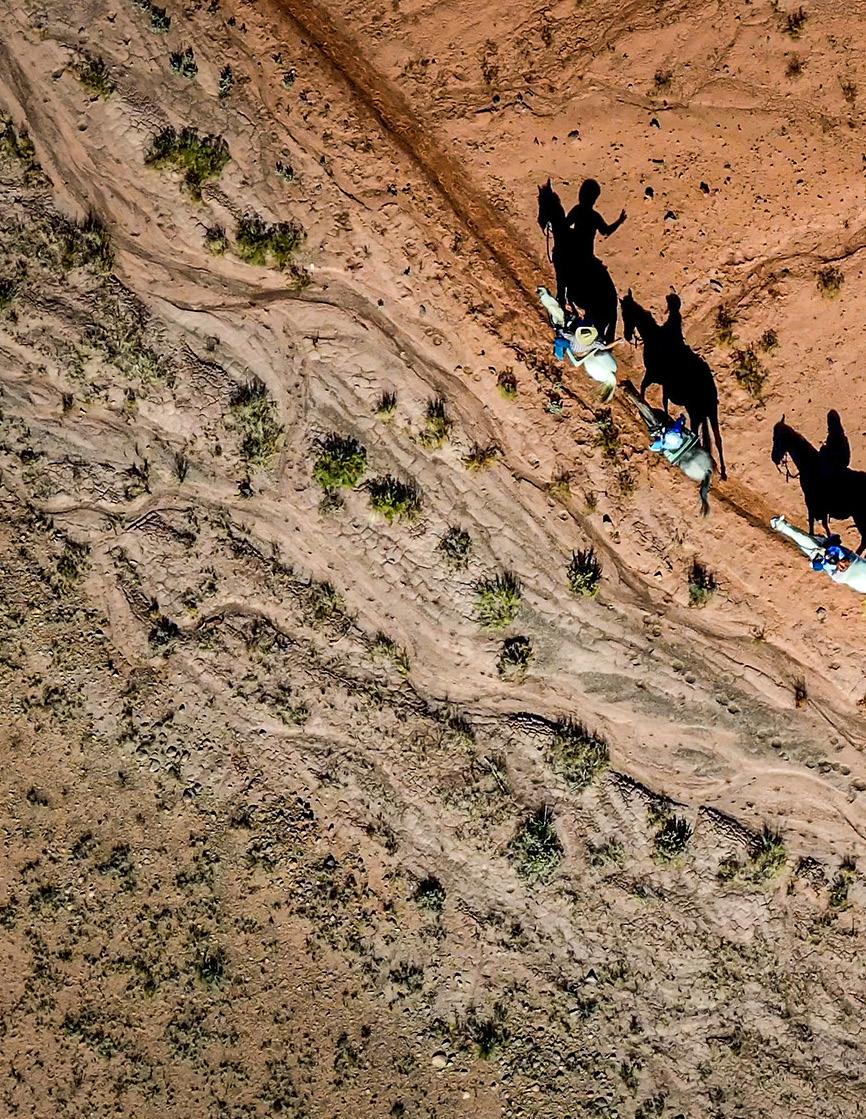
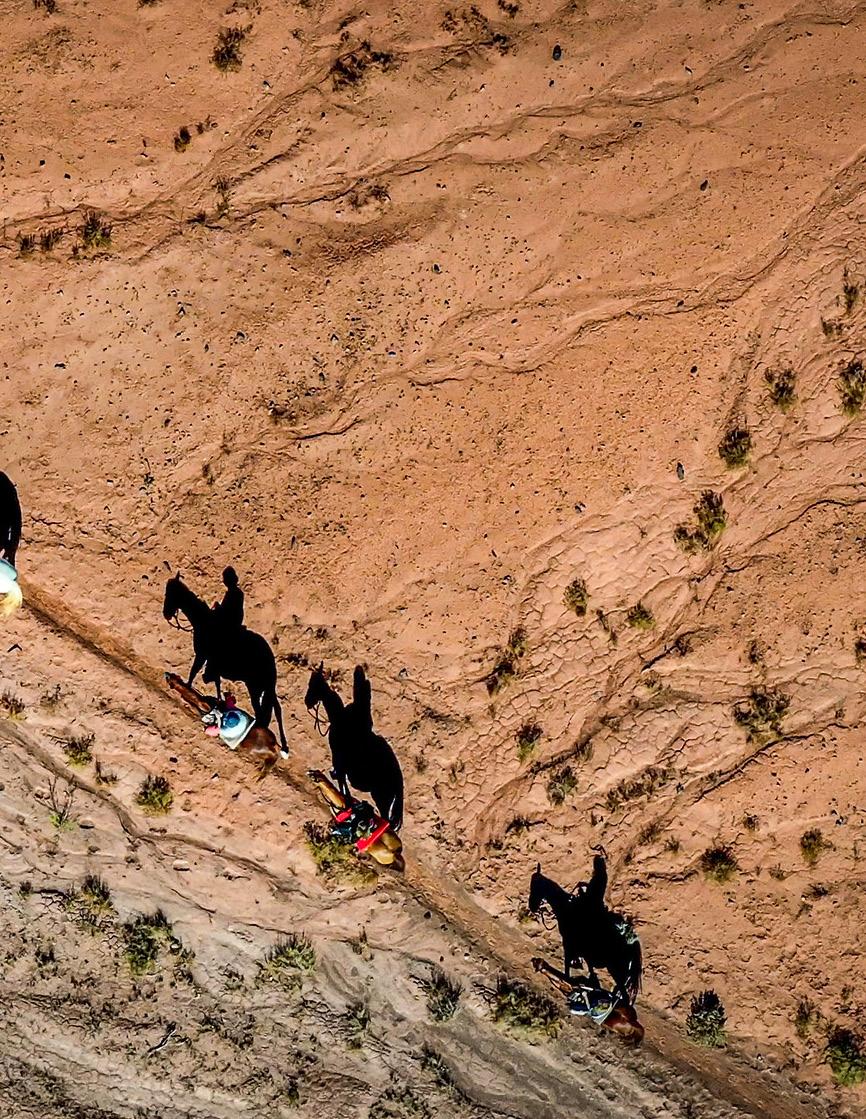 Here, scenes of Ghost Ranch on the edge of the Carson National Forest on the Rio Chama Landscape. . Photo credit: USDA Forest Service photo by Preston Keres
Here, scenes of Ghost Ranch on the edge of the Carson National Forest on the Rio Chama Landscape. . Photo credit: USDA Forest Service photo by Preston Keres
Federal wilderness managers play a unique role in the world of conservation and stewardship. Not only are they tasked with maintaining characteristics of wilderness – for example opportunities for solitude – but they are also tasked with tailoring their management approach to the unique communities and lands they serve. Since its passage, the Wilderness Act of 1964 has referenced the important role that education and service to the public play in administering the National Wilderness Preservation System “for the permanent good of the whole people.” Rising visitation numbers and changes in society’s connection to the outdoors have added additional emphasis to this call to educate and engage the public with wilderness. In recent decades, this need has been formalized into mandates, executive orders, and agency policy in the form of direction to serve communities and address the dissonance and inequality in access and experiences of visitors.
Given the numerous mandates and directives, many wilder-

“Community is the best venue to showcase the character of wilderness and share values and information because it can be shared over a foundation of trust and relationships.”
ness managers have taken up opportunities to engage in roundtable discussions, conferences, training, and other means to get a better picture of how they can serve a diverse audience. However, barriers to advancing this work remain, and the way federal wilderness manager roles are supported and perceived heavily impacts their relationships with the public.
Federal land management agencies employ a relatively small number of individuals to monitor and maintain wilderness areas. Of these individuals, an even smaller number have supported roles that focus on community engagement, while some wilderness areas have no specific person focusing on this at all. Furthermore, the role of wilderness manager has largely been expected to focus on the landscape, with an emphasis on traditional skills such as the use of saws or other nonmechanical tools to maintain the character of the wilderness. These skills are a part of the unique heritage of wilderness, and there is room to leverage these activities, combine them with better support and resources, and shift some focus to community engagement through wilderness education and culture building. Community engagement has often been an ad-hoc duty, championed by individuals who go above and beyond to add it to their workload. As a result, community engagement has often been peripheral to the central duties and roles of wilderness managers, in contrast to the vision reflected in the full missions of the Wilderness Act.
The purpose of this article is to examine how wilderness managers can address diverse
needs and perspectives by building culture through education and outreach. By moving beyond traditional education techniques to be collaborative hosts, wilderness managers can leverage their skill sets and platforms to improve society’s connection to wilderness.
Executive Order 13985, Advancing Racial Equity and Support for Underserved Communities Through the Federal Government, requires the head of each agency to prepare a plan for addressing any barriers to full and equal participation in programs, services, procurement, contracting, and other funding opportunities. Other administration and land management agency priorities include but are not limited to: the Infrastructure Investment and Jobs Act; the Confronting the Wildfire Crisis implementation strategy; the American Rescue Plan Act; the America the Beautiful initiative; the Great American Outdoors Act; the Justice40 Initiative; the Climate Conservation Corps; the Diversity, Equity, Inclusion, and Accessibility strategy; and the Climate Adaptation Plan.
Many of these plans and strategies are not only calling on federal agencies to serve the public by providing opportunities and facilities but also to take an intentional approach to engaging underserved communities. There is much to uncover in understanding what it takes to reach the “whole people” in this way. There are cultural gaps between land managing agencies and communities that leave their values, histories, priorities, and connections to
the land unaddressed. Extending an invitation to visit wilderness lands is part of closing this gap, but an invitation to participate in and shape wilderness culture is what can lead to lasting, meaningful experiences in wilderness (Table 1).
Tracy Brower (2020) speaks to this concept of community and culture building, saying, “Strong communities have a significant sense of purpose. People’s roles have meaning in the bigger picture of the community and each member of the group understands how their work connects to others’ and adds value to the whole. As members of community, people don’t just want to lay bricks, they want to build a cathedral.” So how can wilderness educators and managers focus on community and culture building? How do wilderness education approaches typically address outreach and communication?
When wilderness education is approached in the traditional format where the federal manager is the “teacher” and the visitor is the “student,” many limitations and issues can arise. In this model, the information shared is inherently limited by what one individual can learn and communicate. Even the most learned interpreter who seeks to recall a diversity of stories, viewpoints, values, and histories associated with a wilderness area can only begin to scratch the surface. Additionally, their ability to communicate that information in an impactful way is limited by many factors outside of their control, such as time, resources, and perceptions of the visitors. This is why working as individual interpreters
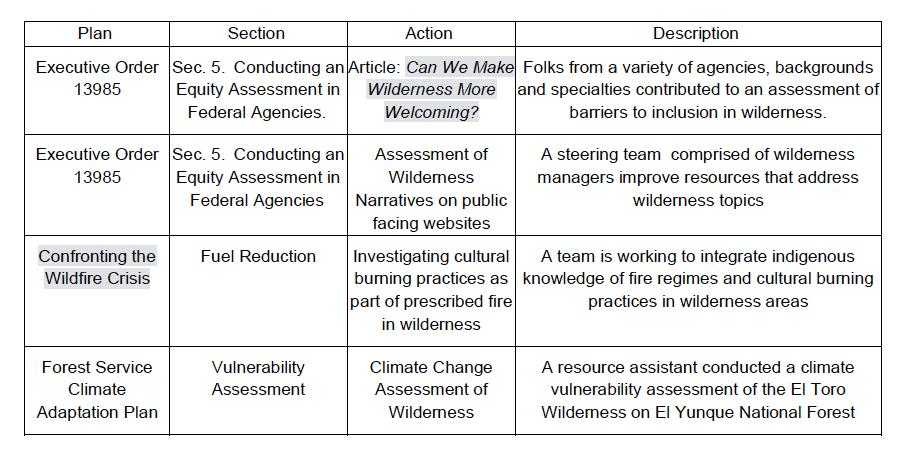
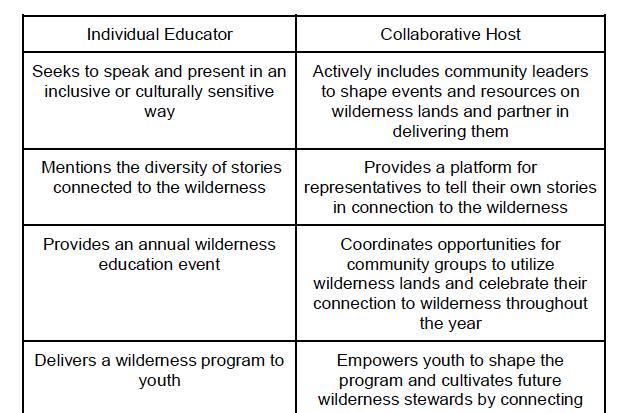
falls short of the goal of serving all communities with meaningful experiences on wilderness lands.
Teaching and interpreting should not be done away with, but they can instead be leveraged as part of a wider effort to build up a wilderness community that has a distinct culture shaped by both visitors and managers. By being community focused, a wilderness manager can maximize their impact across a network of people and get to the heart of inclusivity. This means that the role of managers would shift from that of individual teachers to collaborative hosts.
The benefits of working as a collaborative host include empowerment of communities and maximizing the impact of community engagement. While traditional methods of wilderness education may have similar goals, there are key differences in the mindset of a “host” versus an “educator” (see Table 2).
Federal wilderness managers can make excellent hosts because they can provide key insight into the conditions of wilderness areas; leverage agency resources; authorize uses and permits; teach about traditional wilderness skills such as crosscut saw use, packing,

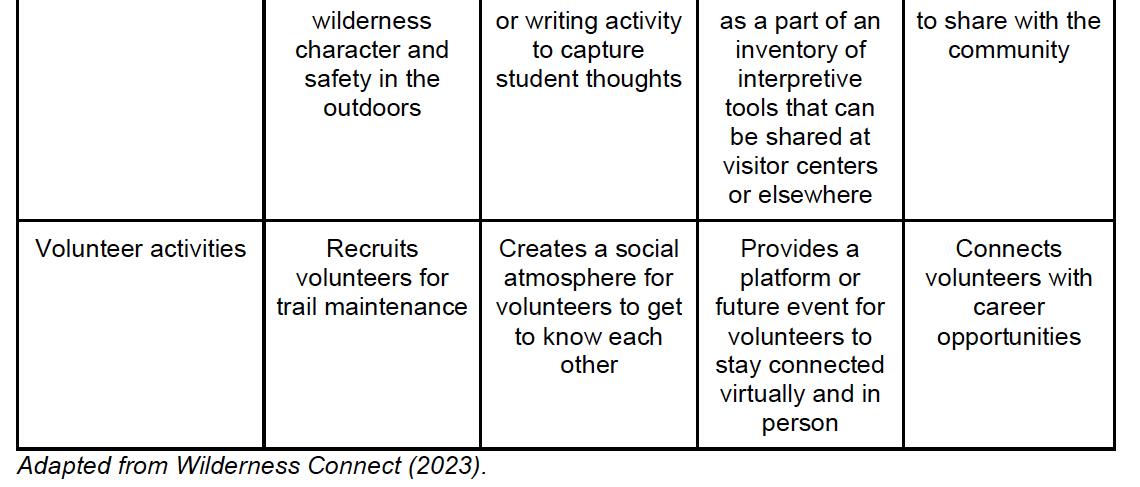
Table 3 - A progression of actions for traditional education activities and resources to maximize impact
and Leave No Trace principles; and share their passion for the places they help steward. Some managers also have unique strengths such as personal relationships, bilingual skills, specialized knowledge, and partnership experience. By understanding the unique platform that federal managers have, along with their skill set, they can be better supported in their outreach and community-building efforts by their respective agencies and by one another.
To be collaborative, wilderness managers can take an inventory of community leaders. Some leaders may have a direct and longstanding connection to the wilderness, such as native nations, adjacent landowners, or frequent visitors. Other leaders may not have been engaged with the wilderness, but they do have shared values concerning the benefits of wilderness, such as youth organizations, the art community, historical societies, universities, health-focused organizations, and a multitude of recreationists.
If it’s difficult to identify a diversity of leaders interested in engaging with wilderness, this may indicate that there is a need to cultivate new leaders and help identify connections to wilderness in different cultural contexts. Giving agency to the experiences of new visitors, and highlighting their intersecting knowledge is a part of that process, along with reaching out into the community in nontraditional venues where leadership exists but may need more connection to wilderness.
Overall, by building relationships with other community leaders and cultivating new ones, a sense of community around the
wilderness begins to emerge. Community is the best venue to showcase the character of wilderness and share values and information because it can be shared over a foundation of trust and relationships. Collectively, a community that shares the stage and passes the microphone is best able to represent the depth and diversity within it.
Taking a collaborative mindset to traditional education activities can result in a progression of thinking that maximizes impact (see Table 3).
There are many leaders already employing some of these mindsets in the wider outdoor community. Amy Dominguez and Olivia Juarez are two community leaders who have taken initiative in wilderness education by hosting the Southern Utah Wilderness Alliance’s Utah Silvestre podcast (see Patrick Kelly’s review in the June 2023 issue of IJW). The miniseries is available in both in Español and English and is dedicated to recognizing that the Redrock Wilderness is embedded in the community’s wellness, cultural histories, traditions, and future. They have created a dynamic platform to share their community’s connection to these wilderness lands and contributed content that helps represent the wilderness. In the opening episode titled “Public Lands Explained,” an individual remarked, “I was only five hours away from these beautiful red rock places. I just never knew that as a young child but, intrinsic to me is just this understanding
that public lands and land on which we exist, there’s no ownership of that, it is just . . . we have to care for it. There is that just strong feeling of stewardship that I was raised with as a very young child so that is my personal connection, it is ingrained in my DNA.”
The Southern Appalachian Wilderness Stewards (SAWS) also use a collaborative mindset in the management of wilderness areas in the Southeast where the number of federal land managers can be sparse. Federal managers who do hold wilderness-specific positions work closely with SAWS to leverage a wide network of thinkers and volunteers who not only provide technical assistance but have also built a unique culture and community around wilderness and are committed to diversifying it. Their willingness to engage other community leaders such as educators has led to some unique partnerships. For example, they recently hosted a Kenan fellow, from the North Carolina State program to get educators connected to STEM-related networks and encourage students to pursue STEM-related career fields. The fellow reflected on the project: “My project and fellowship is to develop lessons and resources to engage students, particularly underrepresented groups, in environmental stewardship and outdoor recreation. I am a history teacher, but I have a calling to get more students involved in the outdoors and connect with our wilderness areas” (see also Redmore et al. 2023).
All wilderness educators can benefit from connecting with networks of community leaders, working collaboratively and hosting spaces for a wilderness community to grow and thrive. This is a critical step in uncovering the true depth of history and connections to wilderness lands today that allow “the whole people” to not just visit wilderness, but to build a personal connection with it that leads to stewardship. For all the differences in individual connections to wilderness, stewardship is a central value of many cultures and a key sentiment behind the Wilderness Act itself. We will not get the full picture of the complexities of stewardship and connection to the land until everyone can share their expertise amongst a trusting and inclusive community.
TANGY EKASI-OTU is the wilderness and wild and scenic rivers specialist for the Forest Service’s Washington Office and former Hispanic Access Foundation fellow; email: tangy.ekasi-otu@usda.gov
Brower, T. 2020. How to build community and why it matters so much. Forbes. Retrieved on January 26, 2024 from https://www.forbes.com/sites/tracybrower/2020/10/25/how-to-build-community-and-why-it-matters-so-much/?sh=45711c57751b.
Kelly, P. 2023. Digital Reviews. Utah Silvestre, hosted by Amy Dominguez and Oliva Juarez. International Journal of Wilderness 29(1): 104.
Redmore, L., K. Fox-Middleton, K.-H. Crum, M. Gregory, C. Motahari, M. Powers, R. S. Armendariz, A. G. Santos, and L. S. von Haupt. 2023. Toward a toolbox for diversity, equity, and inclusion in wilderness: Findings from five focus group discussions with wilderness professionals. International Journal of Wilderness 29(2): 84–109.
Wilderness Connect. 2023. Wilderness education techniques. Retrieved on January 26, 2024, from https://winapps.umt.edu/winapps/media2/wilderness/toolboxes/documents/education/wild_ed_techniques. pdf.
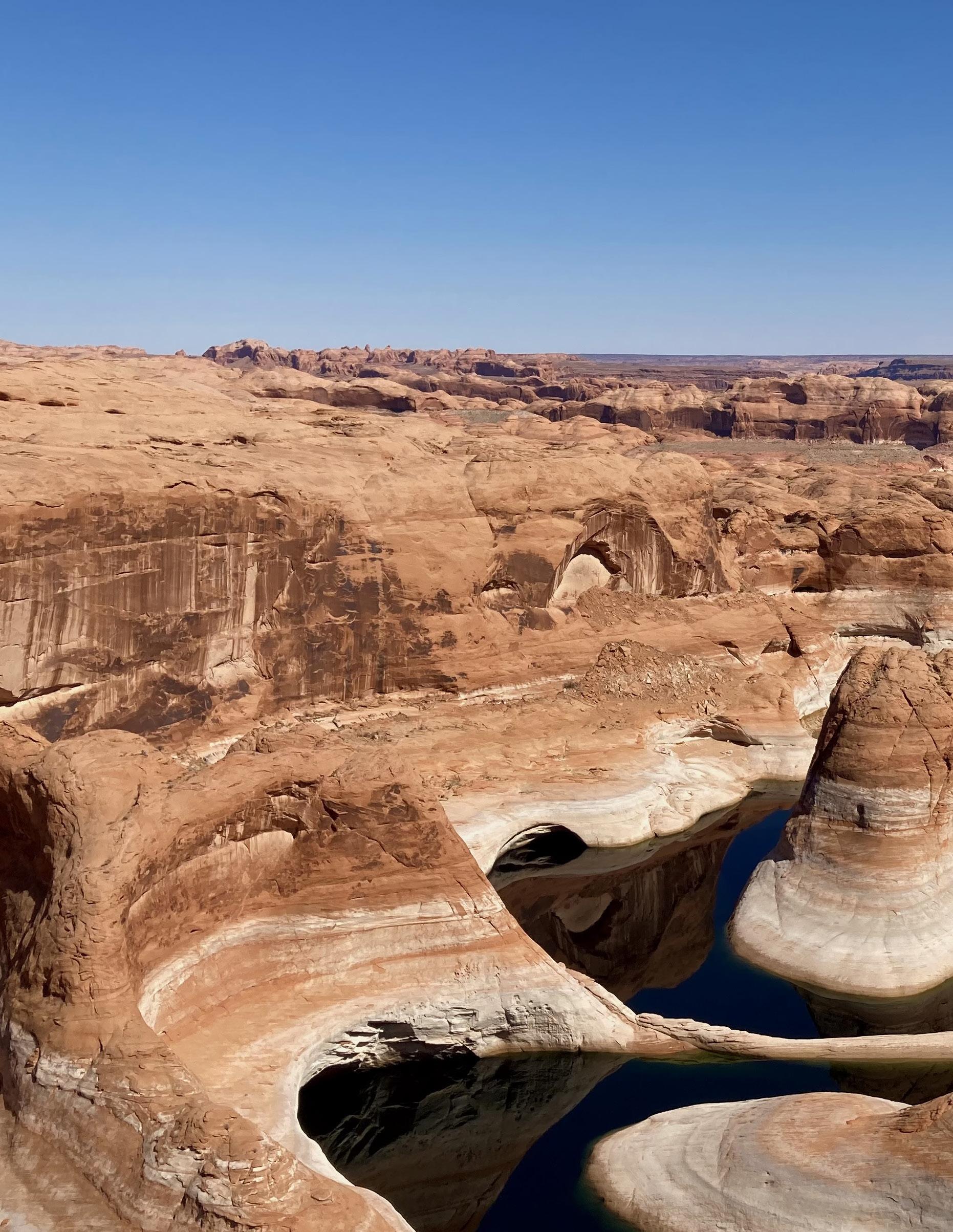
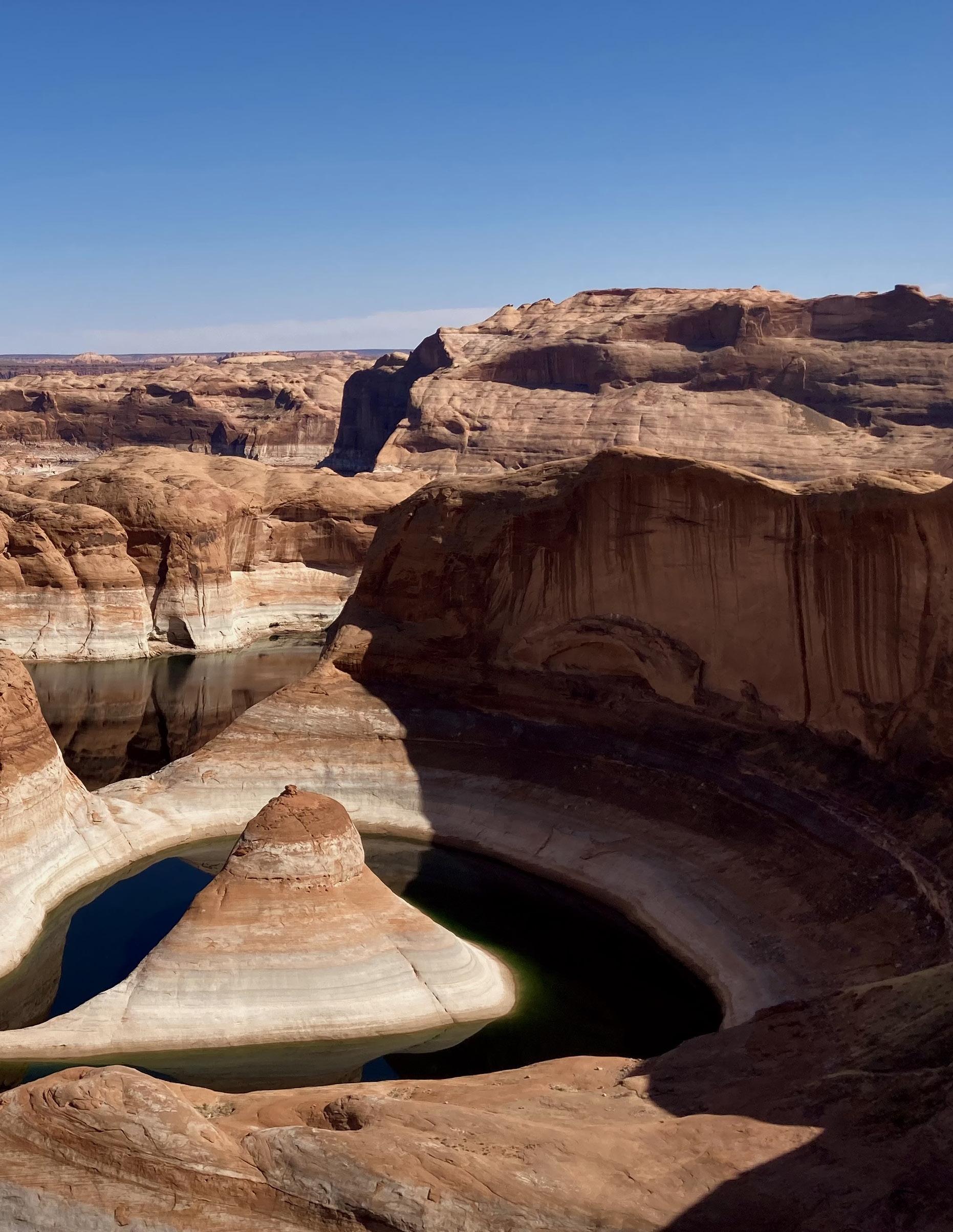 Reflection Canyon and Lake Powell, Escalante District, Glen Canyon National Recreation Area. Photo credit: C. Meyer
Reflection Canyon and Lake Powell, Escalante District, Glen Canyon National Recreation Area. Photo credit: C. Meyer
Abstract
The Wilderness Act of 1964 mandates that wilderness areas provide outstanding opportunities for solitude or a primitive and unconfined recreation. Much deliberation in the wilderness research community has focused on understanding that quality of wilderness, with contemporary management guidance interpreting the word “or” as “and.” This case study, focusing on an area in the proposed Glen Canyon Wilderness, explores a more ambiguous interpretation of the Wilderness Act through the lens of measures of solitude and unconfined recreation and how they diverge in a remote desert setting with increasing visitation. This research uses quantitative survey data to explore these measures and preferences for management action. Results can help inform wilderness management that considers ambiguity in decision-making while using established frameworks.
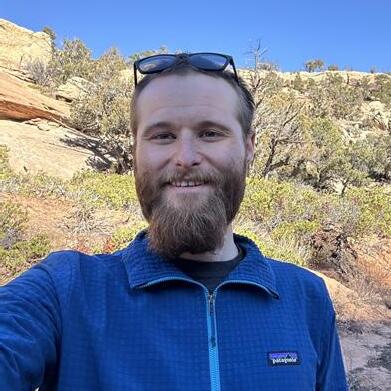
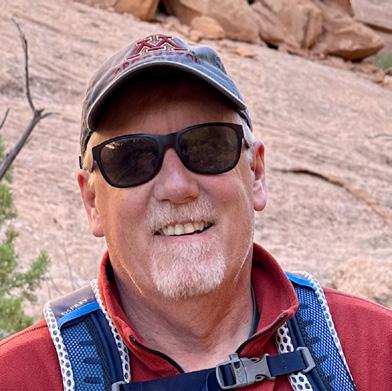
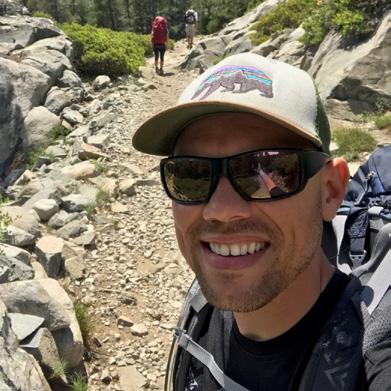
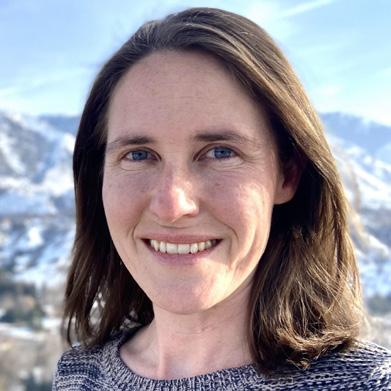


“Where naturalness is hypothetically a limiting factor in an Escalante District faced with numerous biological stressors such as increasing recreation, managers might identify areas where use should be limited to align with the Wilderness Act’s naturalness requirement and others where unconfined recreation could yet coexist with the natural order.”
The Wilderness Act (P.L. 88-577) contains provisions for management that have been distilled into five qualities of wilderness character by public land management agencies (Landres et al. 2015). These are lands being untrammeled, natural, undeveloped, providing solitude or primitive and unconfined recreation, and “other features of value.” Of these, providing for solitude or a primitive and unconfined recreation is notable in the use of the word “or,” which was not defined in the law (Engebretson and Hall 2019). Interagency guidance by Landres et al. (2015) defined indicators for solitude, primitive, and unconfined recreation, suggesting management for all three qualities is necessary in all wilderness, while also recognizing the difficulties managers face in providing opportunities for wilderness recreation while protecting landscapes. Sixty years of research and guidance later, ambiguity remains as to the other potential interpretation that a wilderness area should provide either solitude or a primitive
and unconfined recreation (Engebretson and Hall 2019; Thomsen et al. 2023; Griffin 2017; Cole and Williams 2012). Wilderness management is further complicated by trends and research gaps, including recreation’s relationship to degrading ecosystems (Albright et al. 2022; Thomsen et al. 2023), limited research examining changes in visitors and visitation over time (Borrie and McCool 2007), increasing overall visitation and increasing day use (Pierce and Manning 2015; Miller 2022; Abbe and Manning 2007; Cole and Hall 2008), and the limited geographic scope in the body of wilderness research (Rice et al. 2021).
Unconfined recreation, or the freedom from management action influencing visits, has received limited research focus compared with other wilderness character attributes, such as solitude (Cole and Williams 2012; Griffin 2017; Freimund and Cole 2001). Cole and Williams (2012) found few visitors support limiting use and access to protect solitude in their 50-year review of the literature. This
is aligned with Pierce and Manning’s (2015) more recent finding of Olympic Wilderness visitors’ opposition to use limits. Meanwhile, philosophical and managerial approaches to the recreation-wilderness relationship often focus on the mandate to provide opportunities for solitude (P.L. 88-577). Research generally uses encounters with other visitors and crowding to measure these opportunities, rather than examining more nuanced characteristics of the wilderness experience framed in naturalness, intragroup interaction, or intergroup conflict (Cole and Williams 2012; Freimund and Cole 2001; Stankey 1973). Furthermore, research suggests negative evaluations of wilderness experience are associated with specified characteristics of encounters (e.g., method of travel, behavioral conflict, camping conditions), rather than frequency or experience of encounters alone (Stankey 1973; Hollenhorst and Jones 2001; Pierce and Manning 2015). Cole and Williams (2012) also found the relationship between use density and overall visitor satisfaction to be weak or nonexistent, and that some visitors reported positive evaluations of encountering others. There is debate regarding the degradation of wilderness character by increasing visitation and on use limits or other factors affecting opportunities for unconfined recreation; coalescing around whether visitation density or use limits are more detrimental to overall wilderness character as recreation patterns shift (Cole and Hall 2009; Abbe and Manning 2007; Cole and Williams 2012; Landres et al. 2015).
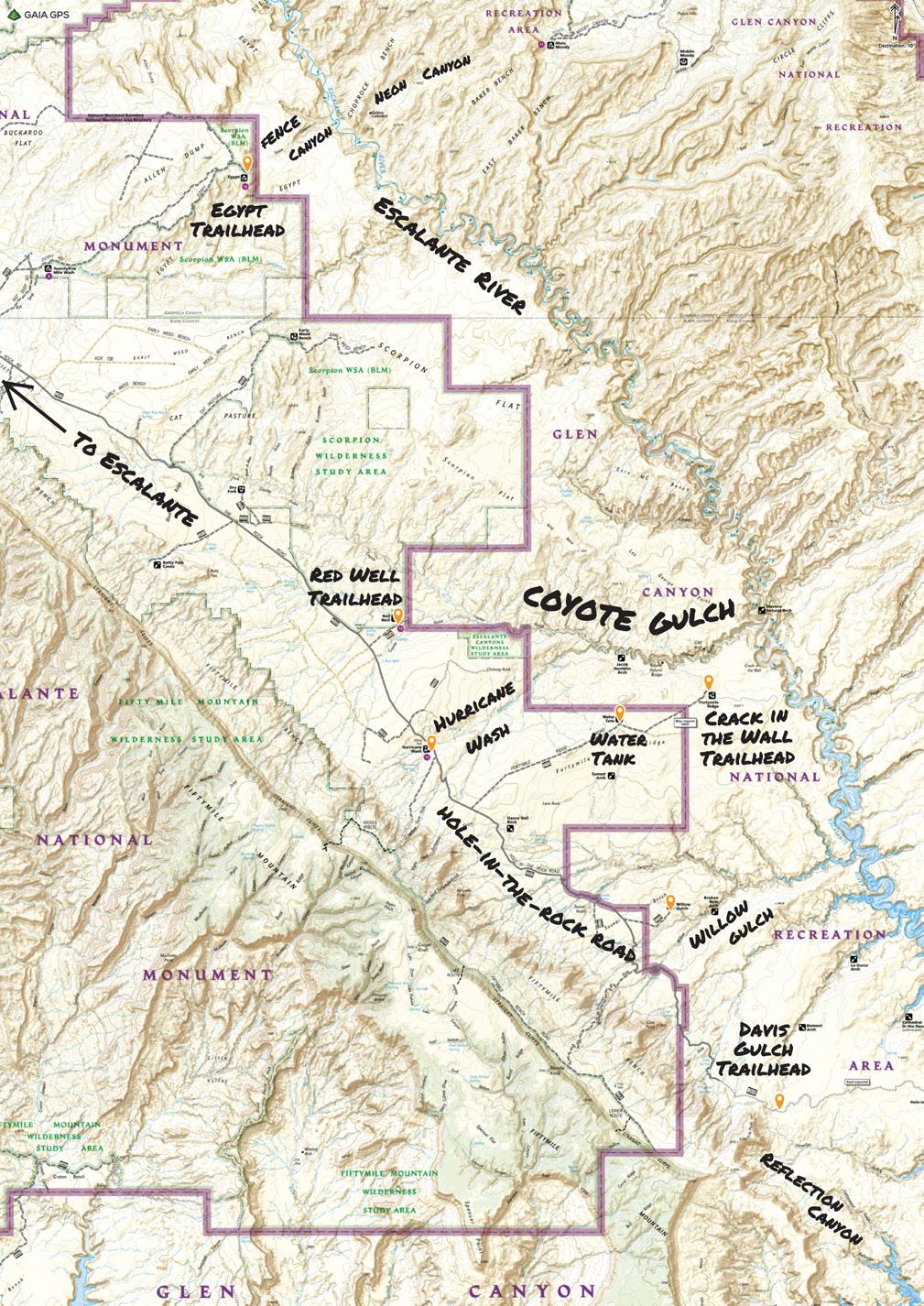
The Glen Canyon National Recreation Area (NRA) in Utah contains the proposed Glen Canyon Wilderness. Proposed wilderness refers to lands with wilderness character forwarded for the consideration of the secretary of the interior to recommend to Congress for designation (Wilderness Connect 2024) and are managed as wilderness. This study focuses on an area of the proposed Glen Canyon Wilderness managed as the Escalante District of the NRA. The Escalante District contains much of the drainage of the Escalante River before it empties into the Colorado River’s Lake Powell reservoir, and it contains high desert sandstone domes, deep canyons,
riparian areas surrounding the river corridor, and abundant flora and fauna (Albright et al. 2022). It is remote, with the canyon trailheads sampled being 25 to 50 miles down the rugged Hole-in-the-Rock Road from the town of Escalante (Figure 1). Per internal trailhead register data, the Escalante District has seen annual backcountry visitation more than double between 2000 and 2019 as the region becomes a destination aside from Utah’s five national parks, which drive protected area visitation in the Colorado Plateau region of the state (Taff et al. 2019; Smith et al. 2018; Casey 2015). Marion (2014) suggests interactions between recreationists and ecosystems vary across settings, and desert ecosystems are susceptible to impacts and interactions not found in more consistently studied environments due to the presence of delicate soil biocrust, abundant and obvious cultural sites, slow rates of decomposition, or specific low impact regulations (Colleony, Geisler, and Schwartz 2021; Taff et al. 2019). The Escalante District is experiencing ecosystem degradation due to recreation and other factors (Albright et al. 2022).
Qualitative research in adjacent areas of Grand Staircase-Escalante National Monument suggests visitors are also being displaced to the subregion by conditions in heavily visited parks such as Zion and Bryce Canyon (Taff et al. 2019). This possible displacement necessitates consideration of the region as an interconnected system of public lands covering the Colorado Plateau. In such regions, actions or conditions in one unit can have wide-reaching, systemic effects, such as a congested national park nudging
visitors to a nearby wilderness setting (McCool and Cole 2001; McCool, Freimund, and Breen 2015; Taff et al. 2019). This case study examines experiential conditions and management preferences related to solitude and unconfined recreation in a context where managers might prioritize one wilderness quality over another, considering the word “or” in the Wilderness Act. Specifically, this juxtaposition is explored through experiences and preferences of backpackers in the Escalante District as recreation use in the area increases and further management actions are considered.
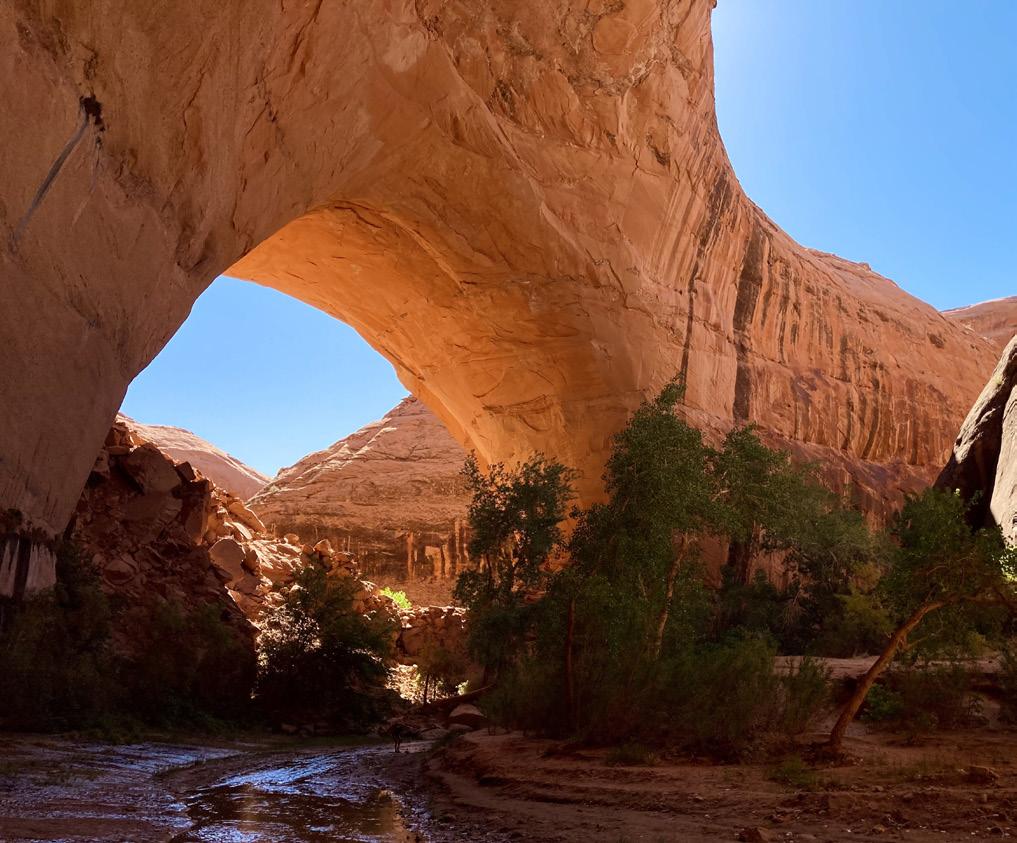
Escalante District visitors were surveyed in 2021 to provide data informing the National Park Service’s backcountry planning process for the area. The survey was developed and administered by personnel at Utah State University in consultation with park staff and informed by prior research on nearby Wilderness Study Areas (Taff et al. 2019). The instrument measured experiential conditions, evaluation of conditions by visitors, support
for management action, information sources, self-reported Leave No Trace behavior, trip characteristics, and basic demographic information.
The survey was administered at seven trailheads in the Escalante District during spring and fall 2021. Each sampling period incorporated 12 days of sampling spread across trailheads and daylight hours to uniformly capture visitor use. Every visitor was approached as they exited a trail and asked to participate unless another survey was in progress. Within-group randomization occurred by asking parties who had the closest birthday to the present and asking that person to be the participant. Only one member of each party was surveyed. Precautions related to the COVID-19 pandemic included social distancing, masking, and sanitation of equipment after use.
Surveys were administered using iPads and the Qualtrics Survey Platform. Descriptive statistical analyses were performed using IBM Statistical Package for the Social Sciences (SPSS), and data management practices took all measures to protect human subjects and safeguard data in accordance with instrument approval by Utah State University’s Institutional Review Board (protocol #10768) and the US Federal Office of Management and Budget (Control No. 1024-0224). All respondents were visitors of the proposed Glen Canyon Wilderness in the Escalante District of Glen Canyon NRA. Respondents who identified as backpackers were isolated in the larger sample by filtering responses based on self-identification of “primary activity” during their recreation visit. Backpackers were isolated from a larger sample of recreationists in this case study as

potential management scenarios discussed refer more frequently to overnight visitors. For this purpose, 97 day-visitor responses were removed with an overall study response rate of 98%.
Findings and analyses are based on n = 168 completed surveys by overnight visitors and a subsample response rate of 100%. Most (75.6%) respondents were first-time visitors to the site they were recreating in (Table 1). All but one respondent were US residents (this proportion may be lower than other years due to the COVID-19 pandemic’s presence during sampling). Average group size was 3.99, and average age of participants was 37.4 years old. Most respondents were male (64.9%).
Fourteen conditions were measured both for the frequency they were experienced and their interaction with visitors’ experiences on a scale where 1 = greatly detracted and 7 = greatly added to the overall experience, and 4 = neutral (Table 2). One condition, “smelling campfire smoke” was removed from analysis due to sample size. The conditions experienced by most visitors and rated highest were “encounters with other visitors” (98.8%; M = 4.61), “seeing cairns (or rock piles)” (97.0%; M = 5.62) and “signs of visitor-created trails” (66.7%; M = 4.18). Conditions experienced by a substantial minority of visitors and rated lowest were “hearing sounds from airplanes or helicopters” (76.8%; M = 3.48), “seeing campfire rings” (58.3%; M = 3.56), “seeing trash” (48.2%; M = 2.43), “hearing loud voices, crying, or yell-
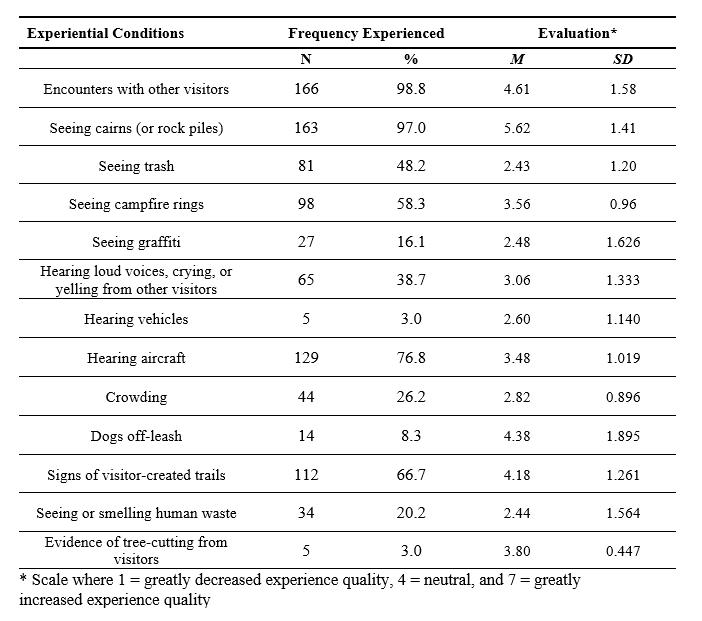
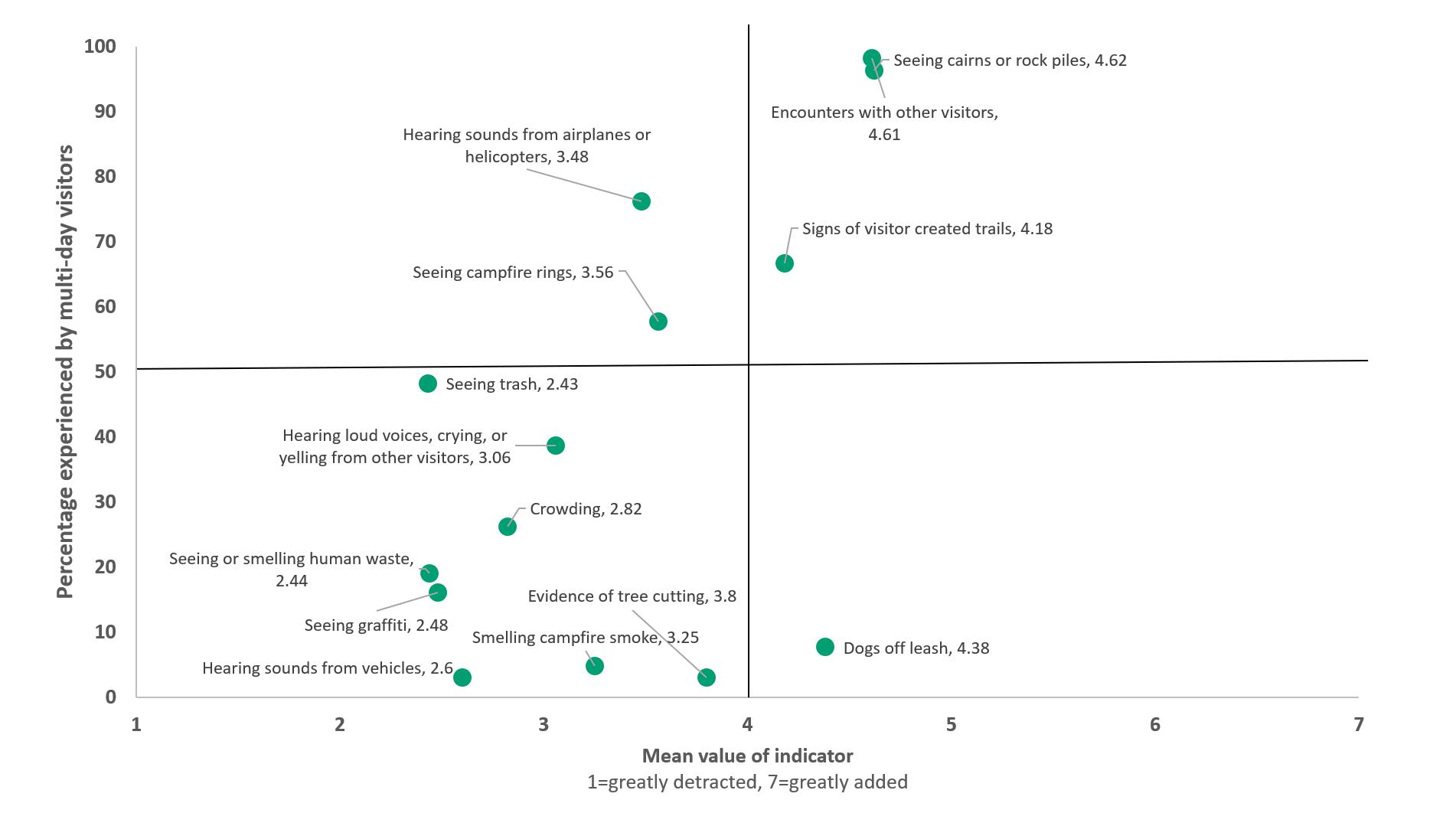
ing from other visitors” (38.7%; M = 3.06), and “crowding” (26.2%; M = 2.82) (Figure 3).
Eight potential management scenarios were explored from the visitor perspective by asking the level to which visitors opposed or supported the action (Table 3). Five potential actions measured evaluation of limits to an unconfined type of recreation per the interagency definition (Landres et al. 2015). All five of these scenarios relating to permits or designated camping were opposed by respondents. Three other scenarios were supported by respondents with “requiring visitors to pack out all solid human waste using a portable waste containment bag” being the most supported scenario (M = 6.20). This is already an implemented action for Escalante District visitors.
There has been a great dependence on measuring encounters in wilderness research, with the assumption that they indicate crowding or loss of solitude (Freimund and Cole 2001; Stankey 1973). In this study, encounters were widely reported and did not indicate these conditions. Far fewer visitors reported experiencing crowding. Visitation is rising in the Escalante District, and nearly all visitors encountered others during their visit. Most visitors reported encounters adding to the quality of their experience. Furthermore, visitors opposed the management actions evaluated that would curtail spontaneity and freedom of movement in the area.
The Wilderness Act specifically includes the word “or” concerning managing for solitude, or primitive, and unconfined recreation (P.L.

88-577; Griffin 2017; Engebretson and Hall 2019). In Landres et al. (2015), interagency management guidance suggests these three provisions are taken together, effectively swapping the word “or” for “and” in the legislation. By rejecting vague language that allows for adaptive and targeted management action, decades of interpretation have left managers in a predicament wherein choices need to be made that ignore human adaptability, or evaluations of wilderness visits that show use density having little effect on experience quality (Cole and Williams 2012). Wilderness recreation research from the past decade has yielded findings that continue to build on Stankey’s (1973) and Freimund and Cole’s (2001) concerns with approaching wilderness experience questions using solitude and its simple measure of encounters, whether as
a rate or stand-alone experience. Pierce and Manning’s (2015) study of Olympic Wilderness visitors found opposition to use limits to reduce crowding. A 2014 study on the low-use Wenaha Wild and Scenic River found, as in the Escalante District, that encountering other visitors in a relatively low-use density area increased enjoyment (Burns, Popham, and Smaldone 2018).
Respondents in this case study were largely first-time visitors, but studies of returning wilderness visitors (Borrie and McCool 2007) also find majority opposition to use limits on unconfined recreation. Across six decades of research, results show visitors, first time and returning, would rather see other people than be limited in their recreation to protect solitude (Cole and Williams 2012). Moreover, they may enjoy seeing other people as they do in the Escalante District (Burns et al. 2018). This
case study’s results concerning experiential conditions and management preferences suggest visitor preference in the Escalante District centers around self-sufficiency, with other human encounters being largely positive. This preference for unconfined recreation over other qualities may also stem from visitors potentially being displaced from high-use national park settings, further emphasizing the importance of places such as the Escalante District, which contain exceptional natural features without national park visitation density (Taff et al. 2019). If following the philosophical view of some previous researchers that wilderness experience can be “motivated by the not very well-defined goal of acquiring stories that ultimately enrich one’s life” (Patterson, Watson, Williams, and Roggenbuck 1998, p. 423), visitors to the Escalante District aim to acquire stories where they may go and do as they please, perhaps alongside others, and they support minimal low-impact regulations to preserve this experience, such as packing out their waste.
These findings, and others from the past decade and beyond (Pierce and Manning 2015; Taff et al. 2019; Burns et al. 2018; Cole and Williams 2012) provide an opportunity to accept the ambiguity contained in the legislation and demonstrate that there are clear differences in the way an area is managed depending on whether the word “or” is taken literally. The word “or” provides managers with two distinct options for the management of wilderness areas. In this approach, a hypothetical wilderness exists where encounter rates are high, where solitude may be experienced despite having little to do with other people (Cole and
Williams 2012), and where visitors are free from tangible governmental interference.
This case study examines the complexity of just one (as defined) quality of wilderness character. While some questions examined in this research regarding potential management scenarios address the quality of naturalness (referring to ecological systems that are substantially free from the effects of modern civilization [Landres et al. 2015]), the questions regarding unconfined recreation were not framed in protecting naturalness. This is notable in Cole and Williams’s (2012) finding that solitude is less critical to a high-quality wilderness experience than scenic, naturalappearing, and undeveloped landscapes. The Escalante District is currently experiencing ecological degradation from numerous factors, including recreation (Albright et al. 2022), and impacts from tourism have been occurring there for at least several decades (Carey 1982). Considering naturalness, inherent to outstanding opportunities for all aspects of wilderness recreation, and to the general construct of wilderness itself (Thomsen et al. 2022) may clarify managerial approaches in providing for solitude or unconfined recreation, with naturalness being the limiting factor in management treatments.
The recent Interagency Visitor Use Management Framework (IVUMF) (IVUMC 2016) can guide the minutiae of wilderness management that adheres to the Wilderness Act of 1964. Using the IVUMF can establish management objectives built around limiting factors identified in collaboration between recreation managers, ecologists and specialists, and visitors to safeguard the places the Wilderness
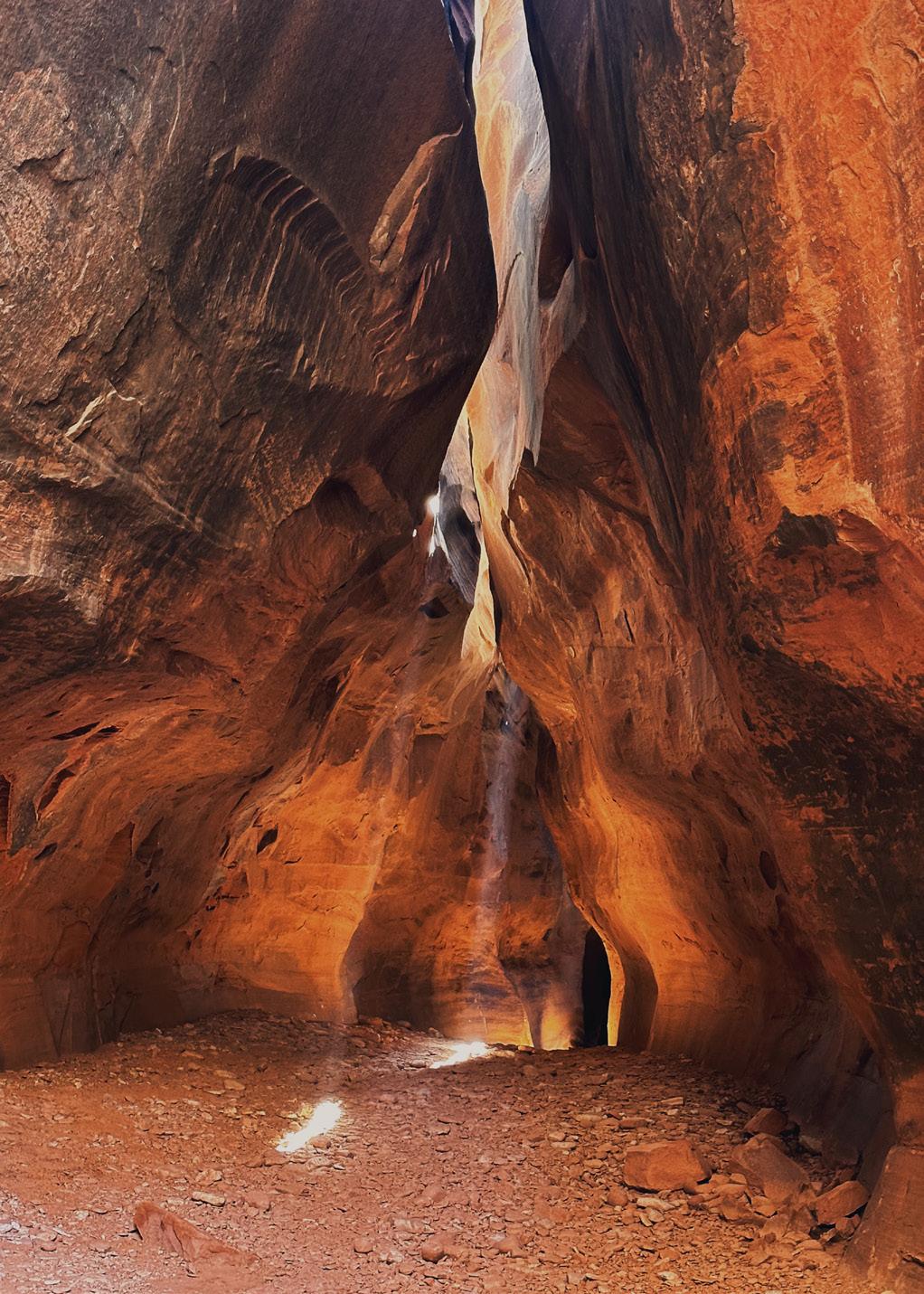
Act was designed to protect, and the types of experiences it was designed to promote.
Following through on implementing, monitoring, evaluating, and adjusting management strategies (IVUMC 2016) can further provide opportunities for managers to adapt, on smaller spatial scales, to ecological functioning needs or visitor responses, such as those explored in this case study that highlight areas where vague legislative intent collides with creative potential. Where naturalness is hypothetically a limiting factor in an Escalante District faced with numerous biological stressors such as increasing recreation, managers might identify areas where use should be limited to align with the Wilderness Act’s
naturalness requirement and others where unconfined recreation could yet coexist with the natural order.
That zonal example may bypass consideration of solitude, but the findings presented in this case study affirm research’s inadequacy in understanding and helping manage for solitude (Stankey 1973; Freimund and Cole 2001; Burns et al. 2018). Hollenhorst and Jones (2001) approach solitude from American Transcendentalism and the relationship between nature and industrial society central to the Wilderness Act. They conclude that solitude experiences imply freedom from social influences and constraints and psychologically equate solitude experiences, as distilled through the philosophical underpinnings of the legislation, with the freedom found in unconfined recreation (Hollenhorst and Jones 2001).
This case study only uses notably outdated measures to discuss solitude through data.
Much effort has been made in dissecting the intent of the Wilderness Act (Engebretson and Hall 2019), and while this research examines that discussion again through a remote wilderness setting where social measures and unconfined recreation measures are convergent, it gets no further in addressing the great challenge research and management faces in respecting visitors’ need for freedom to cultivate the inner world of the self while also protecting the ecological values of wilderness (Hollenhorst and Jones 2001).
Study of the Wilderness Act finds broad interpretation of the constructs behind primitive and unconfined types of recreation (Engebretson and Hall 2019; Griffin 2017). This study focused only on unconfined recreation. The examination of visitors’ preferences for management action affecting ease of travel does not capture the full range of constructs behind that wilderness character quality (Landres et al. 2015), nor does this study address the inadequacies of using encounters or crowding to discuss solitude. An example not explored in this study is the preference of some wilderness visitors for levels of infrastructure development beyond interpretations of “primitive” that could add further refinement to this discussion (Landres et al. 2015; Cole and Hall 2009; Pierce and& Manning
2015; Engebretson and Hall 2019). This case study also did not directly frame questions in the quality of naturalness, which is inherent to discussions of solitude and unconfined recreation (Cole and Williams 2012). This research did spawn unanswered questions about how safety may factor into remote wilderness recreation. Conditions experienced by most visitors and evaluated positively all contained an element indicative of human presence in a remote area (encountering others, seeing cairns, and seeing visitor-created trails). Some research has examined the role of technology on safety in wilderness (Pope and Martin 2011), but respondents’ evaluations of these conditions necessitate future research following how the presence of others in an area may enhance wilderness experience related to a sense of safety and to the quality of primitive recreation.
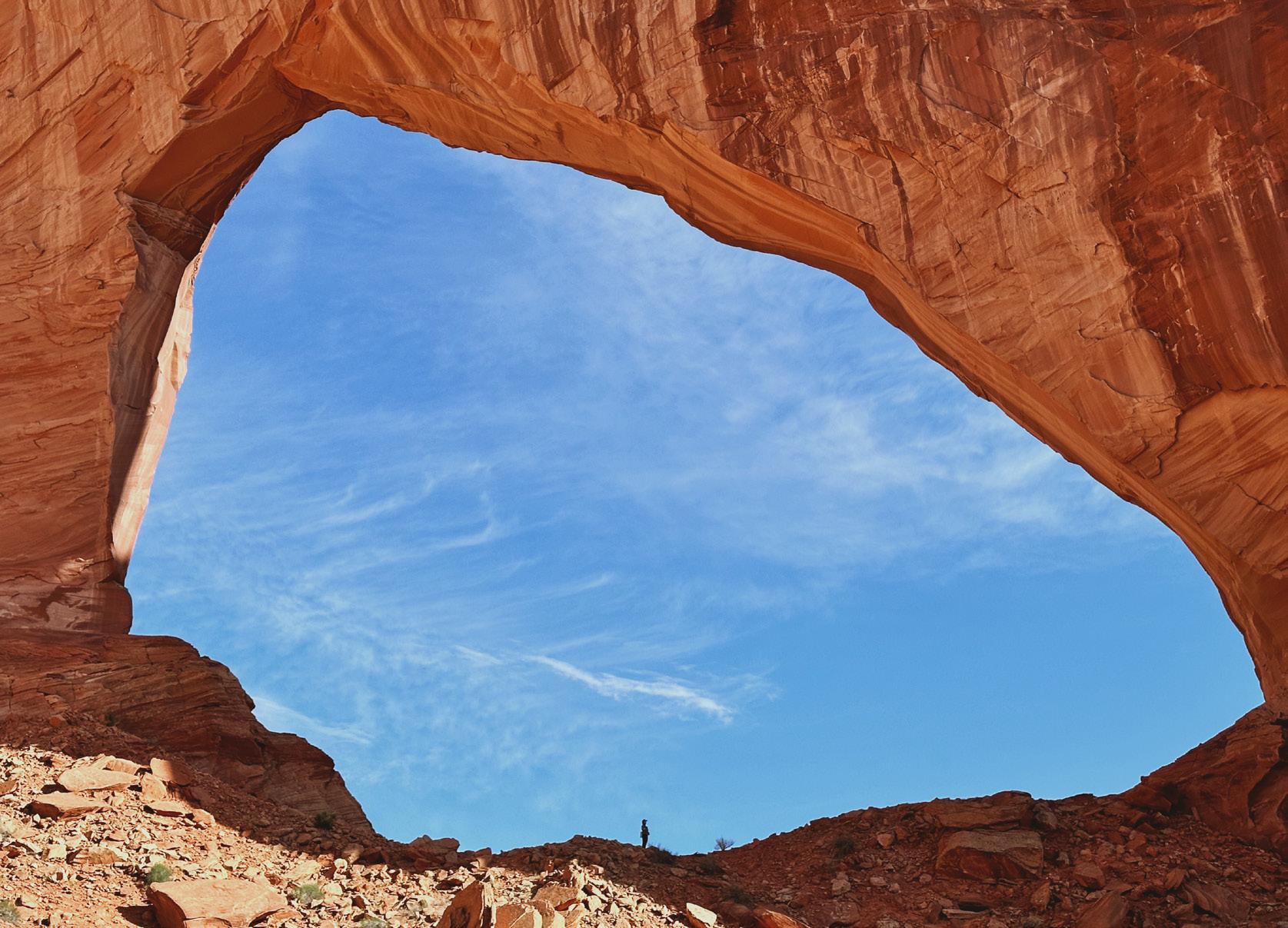
The Escalante District does not see the visitation of some heavily used and studied wilderness areas examined in prior research. Despite bringing this conversation into new regions and a high-desert ecosystem, this research focused on a single wilderness setting. These lines of thought would benefit from further study in other desert settings where sensitive resources may require unique, low-impact regulations (Rice et al. 2021). Future research on visitor use or wilderness in the desert ecosystems on the Colorado Plateau should also aim to capture the region as an interconnected system, wherein visitors may be visiting a number of protected area units across agencies and may be displaced by conditions or management actions in other destinations (Taff et al. 2019; McCool and Cole 2001). Managerial collaboration, and interagency tools such as the IVUMF (IVUMC 2016) can help plan across designations to provide outstanding recreation opportunities through diverse and interconnected settings and aid in safeguarding the unique values for which individual protected areas are designated (McCool and Cole 2001).
Future research should also approach questions on smaller spatial scales. Understanding where visitors are experiencing conditions within a recreation system could contribute to developing the most targeted and inclusive management strategies available (Borrie and Roggenbuck 2001). In this case study, the lingering question on encounters’ (positively evaluated) relationship to crowding (negatively evaluated) could be explored through deter-
mining if crowding was primarily experienced in specific areas. Next steps along a Management-by-Objectives Framework such as the IVUMF (IVUMC 2016; Miller et al. 2019) suggest future research should also focus on the establishment of thresholds that account for the sensitivity of ecosystems to increased use in the Escalante District and elsewhere (Cole and Stewart 2002; Miller et al. 2019). Longitudinal studies of changes in visitors and visitor use are limited (Borrie and McCool 2007). Wilderness research often treats visits to that setting as distinct events (Cole and Williams 2012), despite findings that wilderness experiences, and derived values, are multiphasic and temporally diffused beyond the physical visit (Cole and Williams 2012; Patterson et al. 1998; Borrie and Roggenbuck 2001). Findings of this study, such as positive evaluations of encounters and opposition to permitting, are aligned with Borrie and McCool’s (2007) longitudinal results on these topics from the Bob Marshall Wilderness Complex. A 2007 survey of managers suggests wilderness visitation is changing (Abbe and Manning 2007) and in some areas, it is (Borrie and McCool 2007), but wilderness areas are unique in their specific values (Landres et al. 2015). Monitoring those values alongside the universal qualities of wilderness character, and understanding changes to the visitor and visitor experience in a specific wilderness setting and its surrounding systems, can satisfy the legislative and systemic requirements of wilderness (IVUMC 2016; Landres et al. 2015) and ensure management approaches are aligned with shifts in visitation and visitor preference (Pierce and Manning 2015; Selin et al. 2020; Mockrin et al. 2018).
The Escalante District provides a lens into wilderness topics such as solitude and unconfined recreation. Understanding how visitors experience conditions, such as encountering others, and what their preferences are for management actions (e.g., permit systems or designating camping), can aid wilderness managers in providing experiences commensurate with the preferences and motivations of current and future generations of backcountry recreationists. The findings of this study shed light on how some provisions of the Wilderness Act exist in a remote, desert wilderness setting on the Colorado Plateau, where visitors must expend some effort simply to reach it. While outstanding opportunities for solitude, as inadequately measured through encounters or crowding, may be more important in other wilderness areas, the constructs most used to measure those opportunities are not held as highly among visitors in this remote wilderness setting. Instead, Escalante District visitors appear to value the constructs behind unconfined recreation more so even as visitation increases. Setting aside the wrong measures and philosophical discussion, the community of wilderness research and management has opportunity to use interagency-developed approaches to account for, and perhaps to embrace, the ambiguity in the legislation to better align with what we do understand about the underpinnings of wilderness qualities.
CALEB MEYER is an outdoor recreation planner with the Bureau of Land Management's Monticello Field Office
At the time of this study, he was a graduate researcher in Utah State University's Department of Environment and Society; cmeyer@blm.gov.
WAYNE FREIMUND is a professor of recreation resource management at Utah State University.
ZACH MILLER is a social scientist with the Bureau of Land Management’s National Operations Center; zacharymiller@blm.gov.
ANNA B. MILLER is an assistant professor of recreation resource management and the environment in Utah State University’s Department of Environment and Society.
JEREMY WIMPEY is the principal researchers for Applied Trails Research.
B. DERRICK TAFF is an associate professor at Penn State University's Department of Recreation, Park and Tourism Management, and the science advisor for the Leave No Trace organization; bdt3@psu.edu.
The views expressed in this article are the responsibility of the authors and do not represent the opinions or policy of the National Park Service or Bureau of Land Management.
Abbe, J. D., and R. E. Manning. 2007. Wilderness day use: Patterns, impacts and management. International Journal of Wilderness 13(2): 21–25.
Albright, J., K. Struthers, L. Baril, J. Spence, M. Brunson, and K. Hyde. 2022. Natural Resource Conditions at Glen Canyon National Recreation Area. Natural Resource Report NPS/SCPN/NRR – 2022/2374.
Borrie, W. T., and S. F. McCool. 2007. Describing change in visitors and visits to the “Bob.” International Journal of Wilderness 13(3): 28–33.
Borrie, W. T., and J. W. Roggenbuck. 2001. The dynamic, emergent, and multi-phasic nature of on-site wilderness experience. Journal of Leisure Research 33(2): 202–228.
Burns, R. C., A. R. Popham, and D. Smaldone. 2018. Examining satisfaction and crowding in a remote, low use wilderness setting: The Wenaha Wild and Scenic River case study. International Journal of Wilderness 24(3): 40–53.
Carey, M. B. 1982. Proposed management options for the amelioration of recreational impacts on Coyote Gulch, Glen Canyon National Recreation Area, Kane County, Utah. Master’s thesis, Duke University.
Casey, T. 2015. Recreation Experience Baseline Study Report for Grand Staircase- Escalante National Monument. Natural Resource Center, Colorado Mesa University.
Cole, D. N., and T. E. Hall. 2008. Wilderness Visitors, Experiences, and Management Preferences: How They Vary with Use Level and Length of Stay. (Research Paper RMRS-RP-71). USDA Forest Service, Rocky Mountain Research Station.
Cole, D. N., and T. E. Hall. 2009. Perceived effects of setting attributes on visitor experiences in wilderness: Variation with situational context and visitor characteristics. Environmental Management 44: 24–36.
Cole, D. N., and W. P Stewart. 2002. Variability of user-based evaluative standards for backcountry encounters. Leisure Sciences 24: 313–324.
Cole, D. N., and D. R. Williams. 2012. Wilderness visitor experiences: A Review of 50 years of research. In Wilderness Visitor Experiences: Progress in Research and Management, April 2011, Missoula, Montana. USDA Forest Service, Proceedings (RMRS-P-66).
Colleony, A., G. Geisler, and A. Schwartz. 2021. Exploring biodiversity and users of campsites in desert nature reserves to balance between social values and ecological impacts. Science of the Total Environment 770
Engebretson, J. M., and T. E. Hall. 2019. The historical meaning of “outstanding opportunities for solitude or a primitive and unconfined type of recreation” in the Wilderness Act of 1964. International Journal of Wilderness 25(2): 10–31.
Freimund, W. A., and D. N. Cole. 2001. Use density, visitor experience, and limiting recreational use in wilderness: Progress to date and research needs. In Visitor Use Density and Wilderness Experience: Proceedings, June 2000, Missoula, Montana. USDA Forest Service, Proceedings (RMRS-P-20), 56–61.
Griffin, C. B. 2017. Managing unconfined recreation in wilderness. International Journal of Wilderness 23(1): 13–17.
Hollenhorst, S. J., and C. D. Jones. 2001. Wilderness solitude: Beyond the social-spatial perspective. In Visitor Use Density and Wilderness Experience: Proceedings, June 2000, Missoula, Montana. USDA Forest Service, Proceedings (RMRS-P-20), 56– 61.
Interagency Visitor Use Management Council. 2016. The Interagency Visitor Use Management Framework. https://visitorusemanagement.nps.gov/VUM/Framework.
Landres, P., C. Barns, S. Boutcher, T. Devine, P. Dratch, A. Lindholm, L. Merigliano, N. Roeper, and E. Simpson. 2015. Keeping It Wild 2: An Updated Interagency Strategy to Monitor Trends in Wilderness Character across the National Wilderness Preservation System. October 2015, Fort Collins, Colorado. USDA Forest Service, General Technical Report (RMRS-GTR-340).
Marion, J. L. 2014. Leave No Trace in the Outdoors. Leave No Trace Center for Outdoor Ethics. Stackpole Books.
McCool, S. F., and D. N. Cole. 2001. Thinking and acting regionally: Toward better decisions about appropriate conditions, standards, and restrictions on recreation use. The George Wright Forum 18(3): 85–98.
McCool, S. F., W. A. Freimund, and C. Breen. 2015. Benefiting from complexity thinking. In Protected Area Governance and Management (pp. 291–326). ANU Press.
Miller, Z. D. 2022. What is visitor use management? Identifying functional and normative postulates of an interdisciplinary field. International Journal of Wilderness 28(1): 32–44.
Miller, Z. D., W. L. Rice, B. D. Taff, and P. Newman. 2019. Concepts for understanding the visitor experience in sustainable tourism. In A Research Agenda for Sustainable Tourism (pp. 53–69). Edward Elgar Publishing.
Mockrin, M. H., S. I. Stewart, M. S. Matonis, K. M. Johnson, R. B. Hammer, and V. C. Radeloff. 2018. Sprawling and diverse: The changing U.S. population and implications for public lands in the 21st century. Journal of Environmental Management 215: 153–165.
Patterson, M. E., A. E. Watson, D. R. Williams, and J. R. Roggenbuck. 1998. An hermeneutic approach to studying the nature of wilderness experiences. Journal of Leisure Research 30(4): 423–452.
Pierce, W. V., and R. E. Manning. 2015. Day and overnight visitors to the Olympic Wilderness. Journal of Outdoor Recreation and Tourism 12: 14–24.
Pope, K., and S. R. Martin. 2011. Visitor perceptions of technology, risk, and rescue in wilderness. International Journal of Wilderness 17(2): 19–26.
Rice, W. L., C. A. Armatas, J. M. Thomsen, and J. R. Rushing. 2021. Distribution of visitor use management research in US wilderness from 2000 to 2020: A scoping review. International Journal of Wilderness 27(3): 46–61.
Selin, S., L. K. Cerveny, D. J. Blahna, and A. B. Miller. 2020. Igniting Research for Outdoor Recreation: Linking Science, Policy, and Action, USDA Forest Service. General Technical Report, Pacific Northwest Research Station, USDA Forest Service (PNW-GTR-987).
Smith, J. W., E. Wilkins, R. Gayle, and C. C. Lamborn. 2018. Climate and visitation to Utah’s “Mighty 5” national parks. Tourism Geographies 20(2): 250–272.
Stankey, G. H. 1973. Visitor Perception of Wilderness Recreation Carrying Capacity. (Research Paper, INT-142). USDA Forest Service, Intermountain Forest and Range Experiment Station.
Taff, B. D., J. Wimpey, J. Marion, J. Arredondo, F. Meadema, F. Schwartz, B. Lawhon, and C. Dems. 2019. Informing planning and management through visitor experiences in Grand Staircase-Escalante National Monument. International Journal of Wilderness 25(2): 5–57.
Thomsen, J. M., W. L. Rice, J. F. Rushing, and C. A. Amatas. 2023. U.S. wilderness in the 21st century: A scoping review of wilderness visitor use management research from 2000 to 2020. Journal of Leisure Research 54(1): 3–25.
US Public Law 88-577. 1964. The Wilderness Act.
Wilderness Connect. 2024. National Park Service wilderness recommendation process. https://wilderness.net/ practitioners/agency-resources/national-park- service/designate-nps.php.
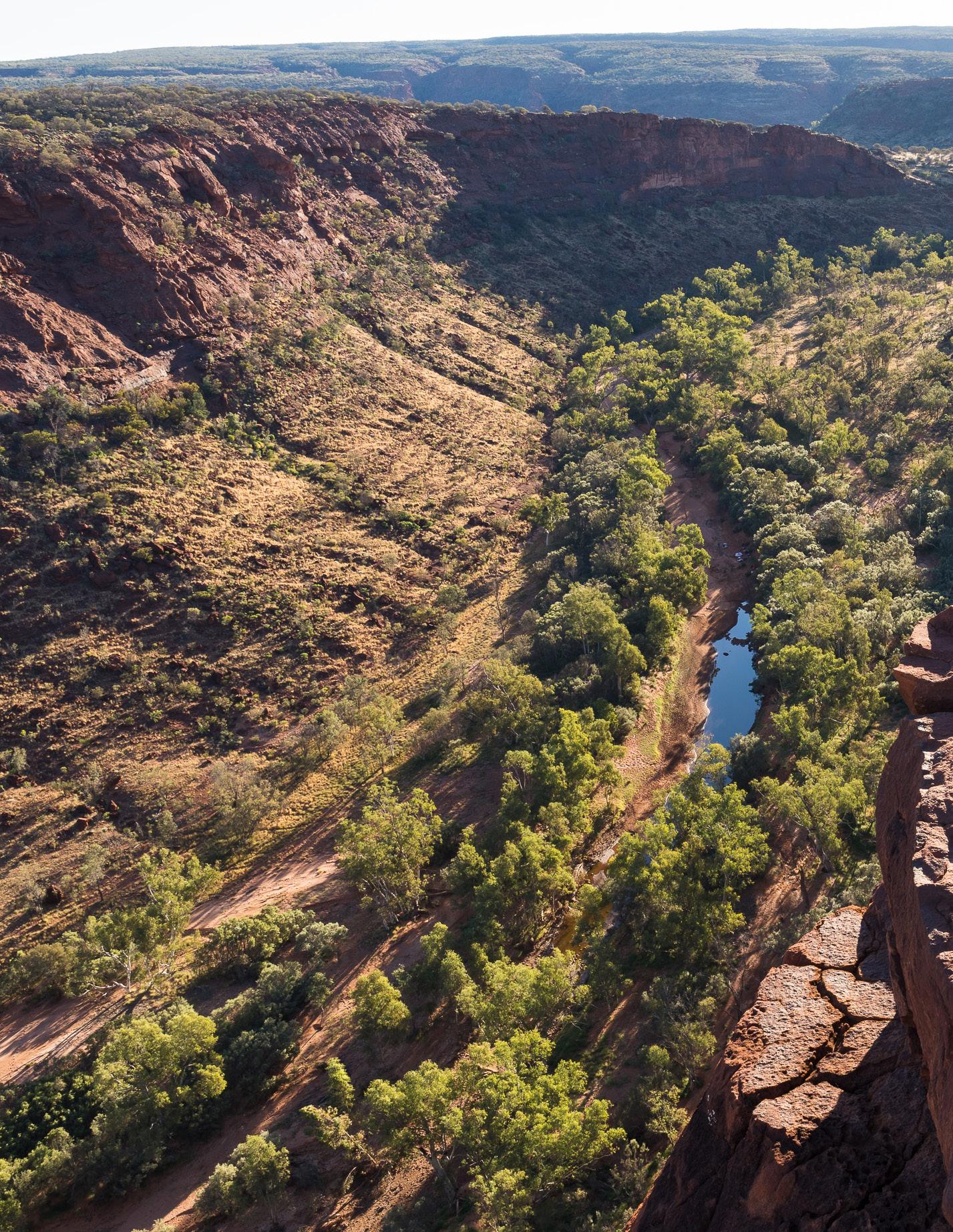

In areal terms, much of Australia’s remaining wilderness comprises arid country.
Photo Credit: Grant DixonWilderness Babel is a project created by Marcus Hall, Wilko Graf Von Hardenberg, Tina Tin, and Robert Dvorak from the original online exhibit at the Environment and Society Portal of the Rachel Carson Center for Environment and Society. It has been developed as an ongoing IJW series that discusses the terminology chosen to express wilderness as a concept in other languages or the nuances of this word in different English-speaking contexts. It discusses the adoption of the term “wilderness” in other cultural contexts –as well as other wilderness terms, from “outback” to “jungle,” and “bush” to “country.” And it explores how concepts of wilderness have found expression in visual representation in media of different sorts as well as in nonverbal communication.
Australia is one of only five countries that collectively contain 70% of the planet’s remaining wilderness outside Antarctica (Watson et al. 2018). Having one of the lowest population densities of any settled country, Australia is also highly urbanized. Hence, a large part of the country remains sparsely populated, although extensive areas show the influence of rangeland agriculture, logging, and mining. Australia has played a leading role in the development of contemporary and evolving concepts of wilderness and wilderness conservation, having established some of the world’s first national parks, seen some of its fiercest conservation battles, returned many wilderness areas to complete or partial Aboriginal management, and developed wilderness mapping techniques that have been adapted for use on several continents.
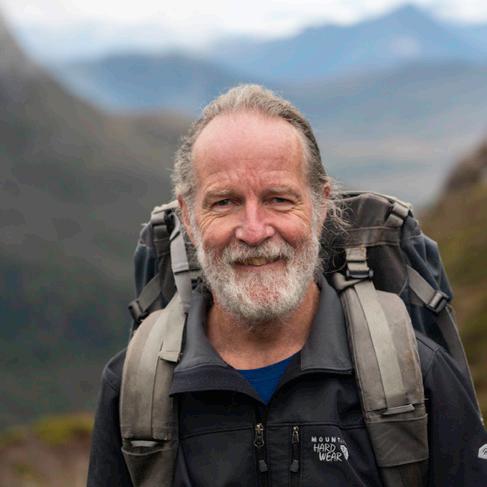
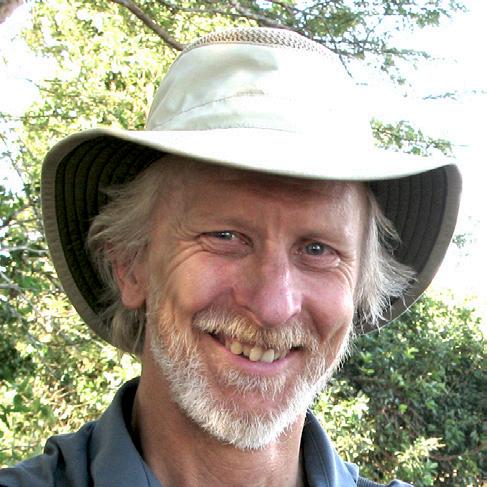
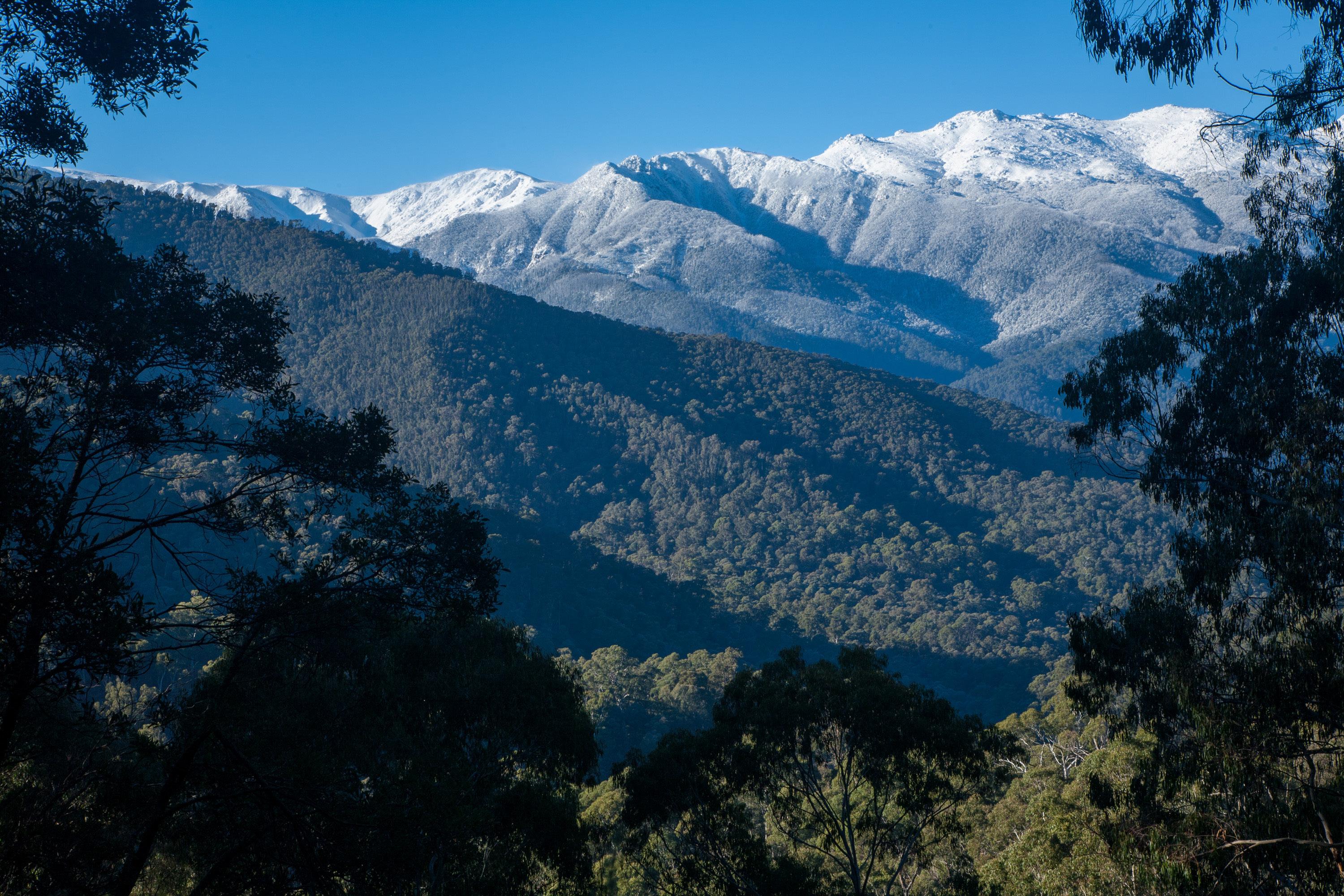
Perceptions of wilderness among Australia’s non-Indigenous population reflect the country’s history of predominantly European colonization. While the early colonists were primarily concerned with taming and commodifying the natural environment, many of them appreciated the beauty and wildness that differed radically from the tilled and urbanized landscapes of their homelands. For example, one of the early French explorers of the Australian coastline, Admiral Bruni D’Entrecasteaux, remarked in 1792 that the shores of Van Diemen’s Land (now Tasmania) “offer[ed] to the imagination something more imposing and picturesque than the sight of
the same nature embellished by civilised man’s industry” (Mosley 2018). Sixty years later, colonial artists such as William Piguenit and Eugene von Guerard were depicting the Australian landscape in grand and inspiring canvases.
By the late 19th century, concerns about the escalating loss of natural landscapes and threats of extinction to the country’s native fauna prompted calls for areas to be set aside as national parks, resulting in the proclamation of one of the world’s earliest national parks near Sydney in 1879. Other national parks were soon declared around the country.
The 1920s and ’30s saw an increase in the popularity of bushwalking (i.e., wild-area hiking), as evidenced by the formation of
walking clubs particularly in the southeastern states. At the same time, increasing concerns about the spread of roads and railways (within national parks as well as outside them) prompted advocacy for the protection of roadless and undeveloped “primitive” areas.
An early reference to wilderness can be seen in the Sydney Bush Walkers’ 1927 definition of a “bushwalker” as “a walker, man or woman, who seeks social recreation and education in roadless wilderness areas or rugged country.” In 1944, the 3.2-million-acre (1.3-million-ha) Kosciuszko National Park in New South Wales was designated with the provision that up to 10% of the park be set aside as a primitive area (Mosley 2018) (Figure 1).
During the last 40 years of the 20th century, a number of wilderness-related conservation battles gained national prominence in Australia. Foremost among these were the unsuccessful battle (in the late 1960s and early ’70s) to save Tasmania’s Lake Pedder from hydroelectric inundation, and the successful campaign 10 years later to save that state’s Franklin River from a similar fate (Figure 2). During the same period, conservation battles were fought to protect many areas of Australia’s native forest including much of its remaining tropical rain forests. This period saw the founding of several national conservation organizations, including the Australian Conservation Foundation and the Wilderness
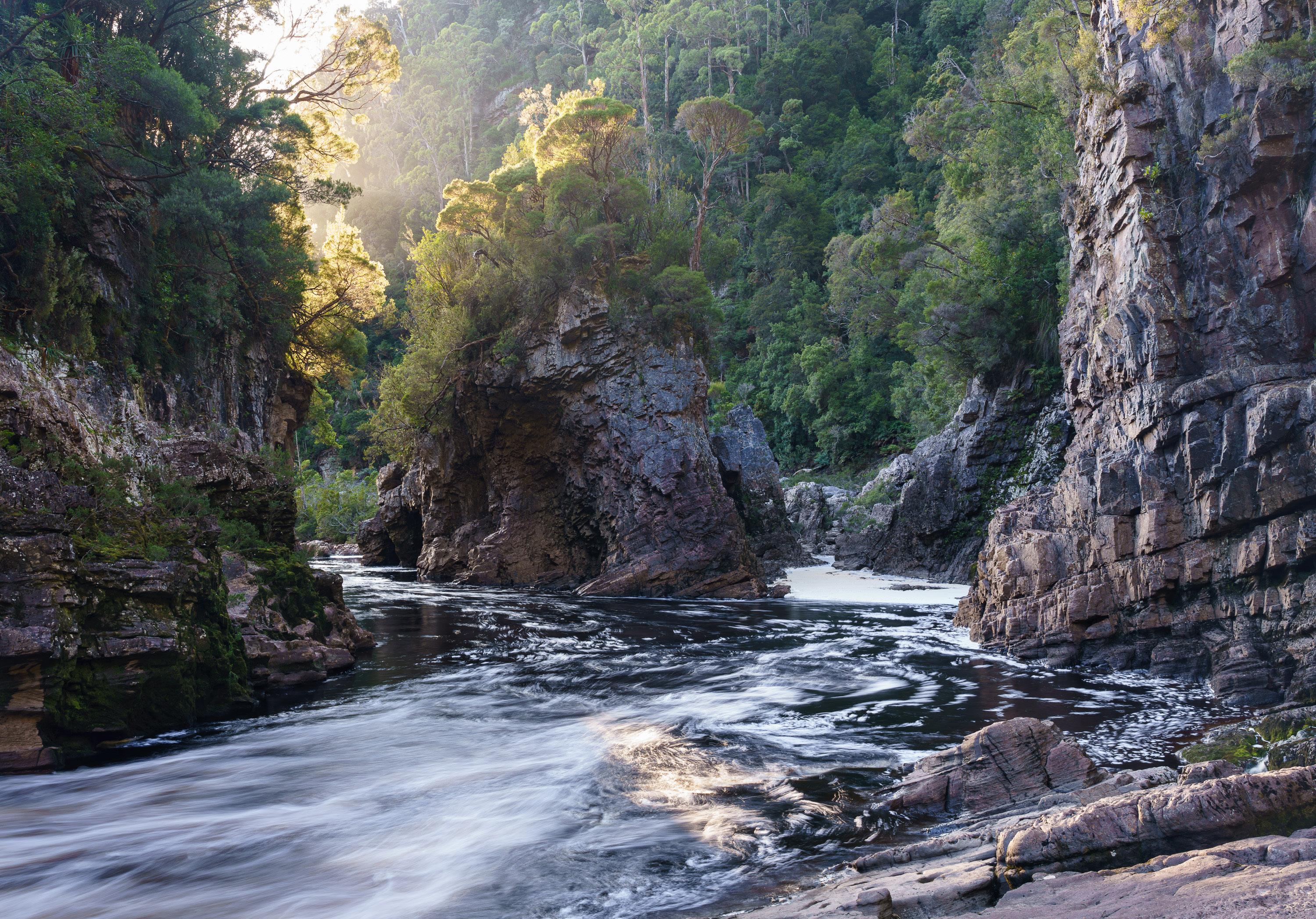
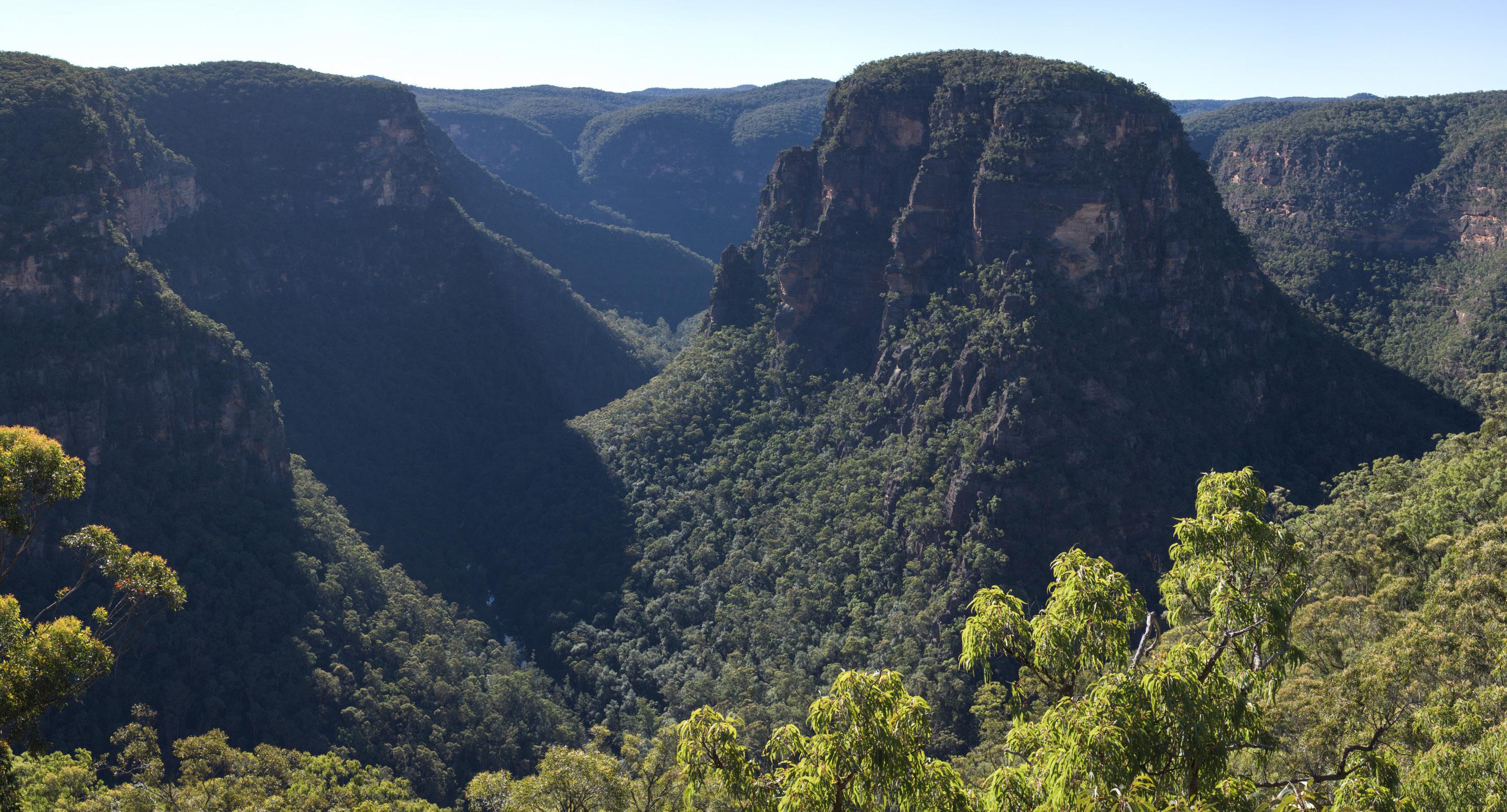
Society (originally the Tasmanian Wilderness Society). By this time the word “wilderness” was generally accepted in Australia to denote land remote from access by mechanized vehicles and from within which there is little or no consciousness of the environmental disturbance of contemporary people (after Kirkpatrick and Haney 1980).
Reflecting the level of community concern and political pressure for wilderness conservation at that time, a series of inventories of Australia’s wilderness resources was begun in the mid-1970s, covering parts of New South Wales (NSW), Queensland, Victoria, and Tasmania (Helman et al. 1977). Lesslie and Taylor (1985) developed a procedure to inventory wilderness quality as a continuum, characterized by primitiveness (defined as the absence of modern infrastructure and evidence of contemporary technological society) and remoteness (defined as distance from modern infrastructure and points of mechanized
access). The inventory was extended to nearly all of terrestrial Australia as the National Wilderness Inventory (NWI; Lesslie and Maslen 1995), and the methodology became the template for similar surveys in many parts of the world, particularly Europe (e.g., Kuiters et al. 2013; Ólafsdóttir et al. 2016).
Each of Australia’s eight states and mainland territories holds principal authority over the management of its natural resources, including the management of most of its so-called national parks. Thus, the development and implementation of government policies to protect national parks and wilderness have been driven as much by regional factors as by national issues and interests. In Australia today, two states, NSW and South Australia, have had wilderness legislation since 1987 and
“Australia has played a leading role in the development of contemporary and evolving concepts of wilderness and wilderness conservation, having established some of the world’s first national parks, seen some of its fiercest conservation battles, returned many wilderness areas
to
complete or partial Aboriginal management, and developed wilderness mapping techniques that have been adapted for use on several continents.”
1992 respectively (Figure 3). The South Australian Wilderness Protection Act (1992) requires that wilderness be affected to no more than a minor extent by both modern technology and exotic animals or plants. The NSW Wilderness Act (1987) has similar ecological criteria and also requires wilderness areas to be “of sufficient size to make its maintenance in such a state feasible” and “capable of providing opportunities for solitude and appropriate self-reliant recreation.” Most other states and territories have wilderness provisions within their general nature-conservation legislation or parks and reserves legislation, although definitions of what constitutes wilderness vary.
The Environment Protection and Biodiversity Conservation (EPBC) Act (1999) is the main piece of national legislation that deals with environmental conservation. However, this act makes no mention of wilderness. Regulations under the act include management provisions for IUCN category 1b wilderness, but in the absence of any such designated reserves under federal government control these provisions are not consistently applied. The World Heritage Properties Conservation
Act 1983 recognizes Australia’s international treaty obligations to protect World Heritage–listed areas, and federal guidelines recognize wilderness among the natural heritage values of World Heritage areas. However, the actual identification of wilderness (whether or not in World Heritage) is determined on a caseby-case basis in the reservation and planning processes conducted largely by the state governments.
The EPBC Act was independently reviewed in 2020 and was under review by the federal government at the time of this writing. Federal protection of wilderness could be strengthened by listing wilderness conservation as an explicit objective of the act and as a Matter of National Environmental Significance, but at present there are no indications that such recommendations will be adopted.
Since the 1990s, the Australian federal government has taken a predominantly antipathetical approach to wilderness zoning on reserves partly or entirely under the control of its agencies. For example, the large wilderness zone in Kakadu National Park has been removed, as has the marine wilderness zone
of the northernmost part of the Great Barrier Reef, although both remain conservation reserves. (The management of these areas is subject to federal input as they are WorldHeritage listed.)
This decline in the status of wilderness in terms of both political support and legislative protection is probably the result of several factors, including the fact that the wilderness concept represents an ongoing constraint on development and remains unacceptable to sections of the Indigenous community. Additionally, the focus of nature conservation has shifted primarily to ecological values (such as biodiversity), at the expense of concern for the recreational and cultural values of natural areas (Sawyer 2015). The NWI has not been updated across most of Australia since the late 1990s, and the Commonwealth Wilderness Programme under which it operated ended in 1999. However, a revised version of the NWI was developed and remains in use in Tasmania (Hawes et al. 2015).
In late 2023 the South Australian government published a Human Industrial Footprint and Intactness Assessment for that state (Watson et al. 2023). While the study claims to map wilderness, it focuses exclusively on ecological values and excludes key factors (such as remoteness from buildings and remote-area drilling sites) that can affect the recreational and other experiential values associated with wilderness.
As much of Australia’s unprotected wilderness is located on Aboriginal land, its protection depends on harmonizing non-Indigenous and Indigenous perspectives (Muir 2007). The Malimup Communiqué (Commonwealth of Australia 1998) included principles for Indigenous use of wilderness, but protection of wilderness on Aboriginalowned or -managed land and sea country in Australia has been limited.
As in the broader Australian community, there is a range of views and perceptions amongst Indigenous people regarding wilderness. Some Indigenous people are supportive of the wilderness concept, including its use as a management tool to protect cultural heritage, and have publicly supported campaigns to protect wilderness values. Others are antipathetic, maintaining a view that the wilderness concept implies a lack of past human activity and precludes traditional rights. Given that most contemporary definitions of wilderness (including the definition proposed by the authors: see Hawes et al. 2018) explicitly acknowledge Indigenous cultural ties, use, and access to land thus designated, the potential may exist for Indigenous and non-Indigenous views to converge through ongoing dialogue. Most Australian states are developing a comanagement approach to protected area management, while Aboriginal communities continue to claim ownership and rights to wilderness areas, with varying success.
Ongoing threats to wilderness in Australia include land clearance, logging, fracking, dam construction, and inappropriate tourism development. Additionally, human-induced climate change poses a major threat to the ecological integrity and biodiversity of many wilderness areas. Notwithstanding the prevailing decline in political protection for wilderness, public support for wilderness protection in Australia remains high, as demonstrated by a recent nationwide opinion poll (Hawes and Dixon 2021): 90% of those polled agreed with the statement, “Australia’s remaining wilderness areas should be protected,” and 91% agreed that it was important to protect the remoteness of wilderness areas. Wilderness and wilderness values have also featured as significant issues in several recent and ongoing conservation issues; for example, campaigns to prevent tourism development in a remote part of the Tasmanian Wilderness World Heritage Area (Dixon 2020) and to prevent raising an impoundment that would flood remote country (including designated wilderness) in the Greater Blue Mountains World Heritage Area in New South Wales. In South Australia, wilderness protection areas have been proclaimed over 3.5 million acres (1.4 million ha) of land since 2005 as a result of conservation campaigns. Also in South Australia, wilderness quality was an important value that led to the creation of the Munga-Thirra/Simpson Desert National Park in 2021, Australia’s largest national park at 8.9 million acres (3.6 million ha).
Australia contains a substantial part of the planet’s remaining wilderness and has played a leading role in the development of historical and contemporary perceptions of wilderness. In the 20th century it saw the creation of some of the world’s earliest national parks, increasing interest in wilderness recreation, major conservation battles for wilderness areas, efforts to reconcile wilderness protection with Indigenous interests, and the development of an internationally recognized system for wilderness mapping. Most Australian states are developing a comanagement approach to protected area management, but some Indigenous groups remain antitpahetical to the wilderness concept. Notwithstanding a high level of public support for protecting wilderness areas, wilderness protection remains piecemeal at a state level and lacking from federal legislation. Meanwhile much of Australia’s wilderness remains under threat from industrial developments, inappropriate tourism, and climate change.
MARTIN HAWES and GRANT DIXON are independent wilderness researchers and authors based in Tasmania. Their recent publications include the book Refining the Definition of Wilderness (Hawes et al. 2018) and an IUCN Technical Note entitled “Considerations of Remoteness to the Design and Protection of Wilderness Areas (Hawes and Dixon 2022).
Casson, S. A, V. G. Martin, A. Watson, A. Stringer, C. F. Kormos, H. Lock, S. Ghosh, S. Carver, T. McDonald, S. S. Sloan, et al. 2016. Wilderness Protected Areas: Management Guidelines for IUCN Category Ib Protected Areas. IUCN, Gland, Switzerland. https://portals.iucn.org/library/sites/library/files/documents/PAG-025.pdf.
Commonwealth of Australia. 1998. Malimup communiqué on wilderness management principles. Canberra: Environment Australia. https://www.indig-enviro.asn.au/Support21.htm.
Dixon, G. 2020. Wilderness tourism: A cautionary tale from the Tasmanian highlands. International Journal of Wilderness 26(3): 102–117. https://ijw.org/wilderness-tourism-tasmanian-highlands/.
Hawes, M., R. Ling., and G. Dixon. 2015. Assessing wilderness values: The Tasmanian Wilderness World Heritage Area, Australia. International Journal of Wilderness 21(3): 35–41, 48. https://www.researchgate.net/publication/289530934_Assessing_wilderness_values_-_the_Tasmanian_Wilderness_World_Heritage_Area_Australia.
Hawes, M., G. Dixon, and C. Bell. 2018. Refining the definition of wilderness: Safeguarding the experiential and ecological values of remote natural land. Hobart: Bob Brown Foundation. https://tnpa.org.au/wp-content/uploads/2018/07/RefiningWilderness.pdf.
Hawes, M., and G. Dixon. 2021, May. Wilderness support opinion poll 2021: Results of a national poll of support for protecting Australia’s wilderness areas. https://tnpa.org.au/wp-content/uploads/2021/05/Wilderness-supportopinion-poll-2021.pdf.
Hawes, M., and G. Dixon. 2022. Considerations of remoteness to the design and protection of wilderness areas. Technical Note No. 10. Gland, Switzerland: IUCN WCPA. https://www.iucn.org/sites/default/files/2022-11/10_ iucn_wcpa_technical_note_series_no._10.pdf.
Helman, P. M., A. D. Jones, J. J. Pigram, and J. M. Smith. 1977. Wilderness in Australia: Eastern New South Wales and South-Eastern Queensland. Department of Geography, University of New England, Armidale.
Kirkpatrick, J. B. and R. A. Haney. 1980. The quantification of developmental wilderness loss. Search 11(10): 331–335.
Kuiters, A. T., M. van Eupen, S. Carver, M. Fisher, Z. Kun, and V. Vancura. 2013. Wilderness register and indicator for Europe, final report (EEA Contract No: 07.0307/2011/610387/SER/B.3). http://ec.europa.eu/environment/nature/ natura2000/wilderness/pdf/Wilderness_register_indicator.pdf.
Lesslie, R. G., and S. G. Taylor. 1985. The wilderness continuum concept and its implications for Australian wilderness preservation policy. Biological Conservation 32(4): 309–333.
Lesslie, R. G., and M. Maslen. 1995. National Wilderness Inventory: Handbook of Principles, Procedures and Usage, 2nd ed. Australian Heritage Commission.
Mosley, G. 2018. Rescuing the Wilderness. Colong Foundation for Wilderness Ltd.
Muir, K. 2007. Action towards wilderness protection in Australia. In Science and Stewardship to Protect and Sustain Wilderness Values: Eighth World Wilderness Congress Symposium, September 30–October 6, 2005, Anchorage, AK, comp. A. Watson, J. Sproull, and L. Dean (pp. 232–238). Proceedings RMRS-P-49, US Department of Agriculture, Forest Service, Rocky Mountain Research Station, Fort Collins, Colorado.
Ólafsdóttir, R., A. D. Sæþórsdóttir, and M. Runnström. 2016. Purism scale approach for wilderness mapping in Iceland. In Mapping Wilderness – Concepts, Techniques and Applications, ed. S. J. Carver and S. Fritz (pp. 157–176). Springer.
Sawyer, N. 2015. Wilderness quality mapping – The Australian experience. In Science and Stewardship to Protect and Sustain Wilderness Values: Tenth World Wilderness Congress Symposium, 2013, October 4–10, Salamanca, Spain, comp. A. Watson, S. Carver, Z. Křenová, and B. McBride (pp. 100–108) Proceedings RMRS-P-74, US Department of Agriculture, Forest Service, Rocky Mountain Research Station, Fort Collins, Colorado.
Watson, J., O. Venter, J. Lee, K. Jones, J. Robinson, H. Possingham, and J. Allan. 2018. Protect the last of the wild: Global conservation policy must stop the disappearance of Earth’s few intact ecosystems. Nature 563: 27–30.
https://www.nature.com/articles/d41586-018-07183-6.
Watson, J., Li, R. and Atkinson, S. 2023. South Australian Human Industrial Footprint and Intactness Assessment. Technical Report. Department of Environment and Water, South Australia.
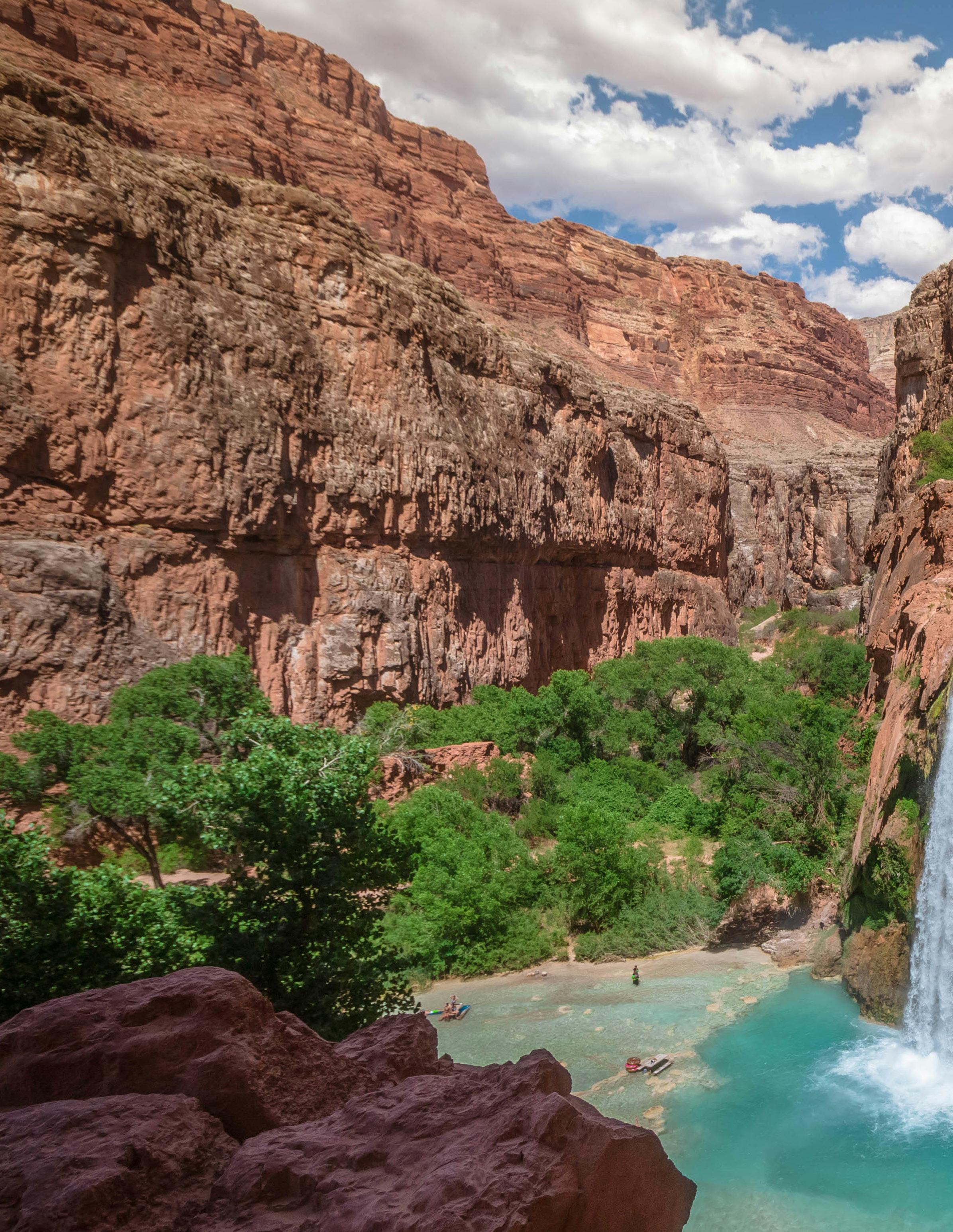
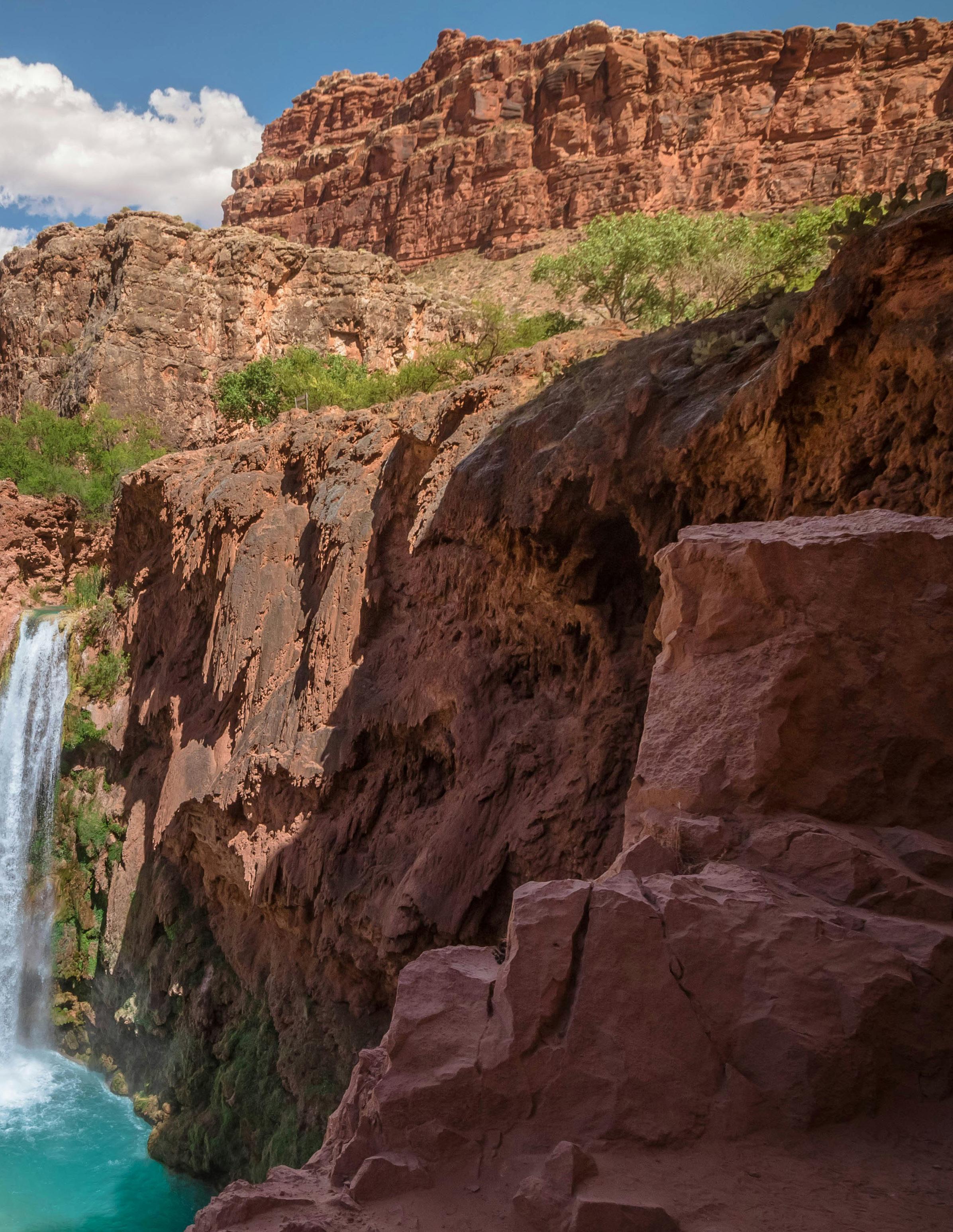 A stunning turquoise waterfall deep inside the Grand Canyon (Havasu Falls).Photo credit: Jan Kronies on Unsplash.
A stunning turquoise waterfall deep inside the Grand Canyon (Havasu Falls).Photo credit: Jan Kronies on Unsplash.
WHAT DOES ‘WILD’ MEAN ANYWAY?
A Review of Brave the Wild River: The Untold Story of Two Women Who Mapped the Botany of the Grand Canyon, by Melissa L. Sevigny
Brave the Wild River: The Untold Story of Two Women Who Mapped the Botany of the Grand Canyon by Melissa L. Sevigny. 2023. W. W. Norton and Co. 304 pp. $30.00 (hc).
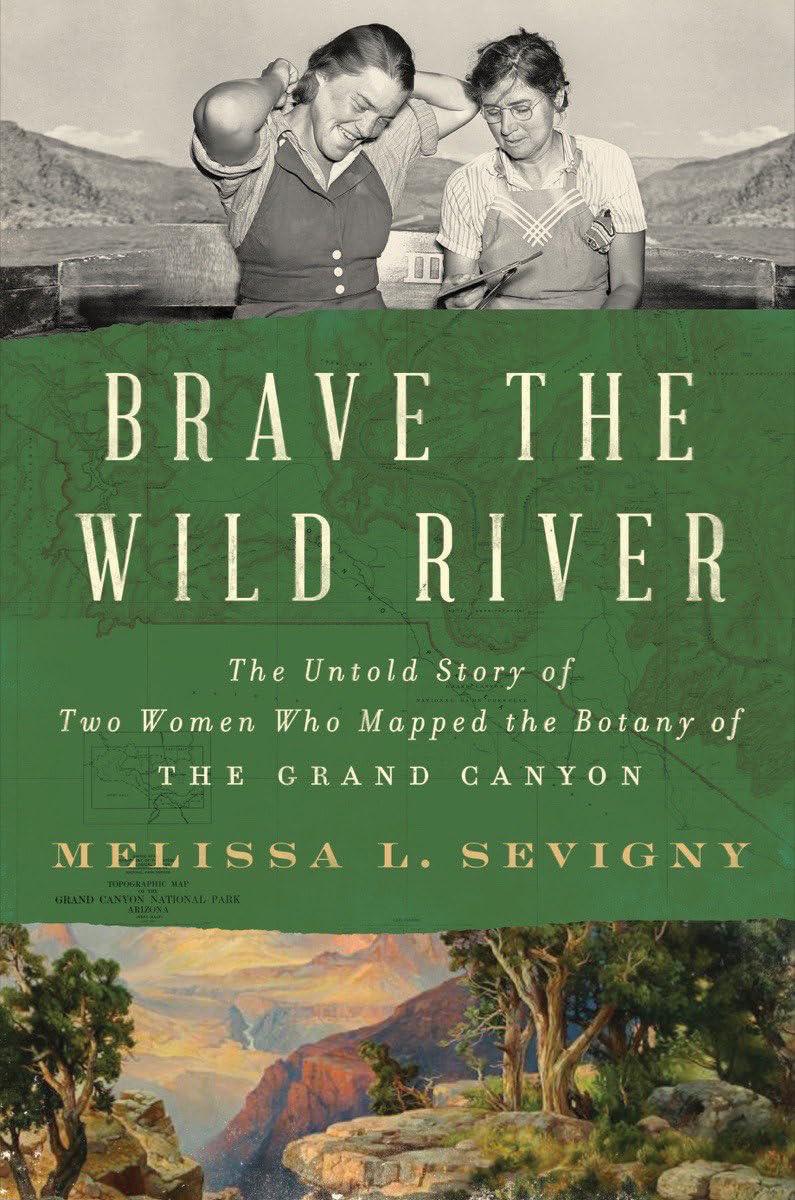
In the summer of 1938, two professional botanists, Elzada Clover and Lois Jotter, inventoried some 400 plant species along the Green and Colorado Rivers from Green River, Utah, to Lake Mead in Arizona. Their data established a baseline for analyzing the many future changes to the Colorado basin brought about, of course, by industrial-strength human intrusions. And in the process, they became the first women known to have floated through the Grand Canyon. Their story is well told by science journalist Melissa L. Sevigny in her new book, Brave the Wild River: The Untold Story of Two Women Who Mapped the Botany of the Grand Canyon.
Sevigny gives us a vivid, near-daily account of the adventurous expedition, which took 43 days and covered some 1,000 water miles. The trip’s main organizer, Norman Nevills, ran a tourist outpost in Mexican Hat, Utah. He had struck up a friendship with Elzada Clover, then age 42, a botany professor at the University of Michigan. She had become enamored of the American Southwest, and wanted, as Sevigny writes, “to make a field study of all the cacti” there (p. 20). Nevills, who had dreams of starting a river outfitting business, proposed that Clover should study the botany of the Colorado basin via a float trip with him and a few others. Clover agreed, and recruited Lois Jotter, a 24-year-old doctoral student whom she was advising, to come along as a fellow researcher.
Nevills built three boats out of state-of-the-art plywood, shaping them such that they could be spun around and run stern-first through rapids, thus enabling the rower to face downriver. Called “cataract boats,” they each weighed 600 pounds and sported 2,300 wood screws. The screws held the boats together remarkably well and leaked a lot less than one would have guessed.
Sevigny describes that the two women probably worked harder on the trip than any of the other four (later five) travelers. When not floating the river, they spent many an hour collecting specimens and working up notes. Additionally, they did all the cooking and after-meal cleaning up. However, Sevigny describes that there was one thing the two female scientists did none of: whitewater rowing. That did not please the younger one, Jotter, who wanted to try running a rapid or two. The team leader, Nevills, claimed she was too reckless. One can guess, though, that gender bias had something to do with it as none of the men had any more rowing experience than Jotter did. In contrast today, Sevigny notes, about one-third of the Grand Canyon guides are women.
By the end of the trip, Clover had grown so fond of the river that she fell into a depression, confiding to her diary that she did not want to leave the place. As soon as possible afterward, she took a 10-day float down the nearby San Juan River, in no hurry to return to her university job. She continued to inventory the fauna of the American Southwest for the rest of her life and often mentioned what can best be described as the profound spiritual impact the Colorado River made on her.
REVIEWED BY James M. Glover an emeritus associate professor in recreation at Southern Illinois University. He is the author of A Wilderness Original: The Life of Bob Marshall and numerous articles relating to the history of wilderness exploration and preservation.
Sevigny is excellent at putting events into historical context. Regarding the management of the Grand Canyon region, for example, we learn that Park Service officials did all they could for many years to discourage anyone – female or otherwise – from trying the “dangerous stunt” of running the canyon. Little could they have imagined that by the early 21st century, 27,000 people per year would run it.
We learn also that the Havasupai people were moved out of the way to accommodate the nascent tourism industry around the Grand Canyon. As early as 1893, before the canyon became a park, the Grand Canyon forest reserve supervisor, W. P. Herman, had declared the Havasupai unwelcome. The place, he wrote, was most valuable as a scenic attraction for foreign visitors and the US’s more “intelligent citizens.” In his words, it was “just and necessary to keep the wild and unappreciable Indian from off the reserve” (p. 165). The Havasupai got little better treatment when the National Park Service took over. Sevigny writes, “In 1928, park rangers drove the last Havasupai from the oasis known as Indian Gardens (now called Havasupai Gardens)” (p. 165).
Sevigny also discusses the history of gender stereotyping and its role in this story. The expedition drew a lot of media attention. But what stands out is the sheer laziness of nearly all the reporters as they filled their stories with overdone sexist tropes and clichés. Their reports lacked curiosity about who the women really were. They reported Clover and Jotter saying things they never said. And at least one reporter did not even bother to mention that
the women were doing botanical work. Some even seemed to take it as a personal affront that two “ladies” were having an adventure, sleeping on the ground, and getting their clothes muddy. As one reporter put it:
Why should these women risk their lives in such a perilous exploit? The trip has been made before, and hence there was little which another expedition could add to the geological and scientific knowledge of that marvel of nature. If the trip had to be made, there were men who could have taken their places, for the presence of women in the party was not essential to its success. (p. 219)
In the book, Sevigny might have developed further the topic of the history of women adventurers. By 1938, women had long since been doing remarkable things in wild places all over the world. Mountaineering, for instance, can be one of the most strenuous and taxing of wildland pursuits. Yet 20 years before, one Alma Wagan had summited all the major peaks in Washington and Oregon, had backpacked all over the north Cascades, and was a licensed mountain guide in Rainier National Park. In 1926, a full decade before Clover and Jotter’s adventure, a female swimmer named Gertrude Ederle swam the English Channel, “then considered one of the toughest endurance tests in the world, beating the fastest man’s existing record by nearly two hours” (WETA 2023).
And in 1895, a Brit named Mary Kingsley canoed up the Ogooué River of West Africa, “collect[ing] specimens of fish previously unknown to western science, three of which were later named after her.” Accompanied only by Indigenous guides, she taught herself to
paddle the native dugout canoes, waded various neck-deep swamps, hiked over densely forested ridges, and made one of the first ascents of Mount Cameroon. As historian Toby Green writes, Kingsley “under[took] feats of exploration and cross-cultural exchange that her male European counterparts had never dared to attempt” (Green 2015, p. xvi).
So, other than the fact that people cling fiercely to their stereotypes, there was no real reason for anyone to be surprised in 1938 that two women were part of a Colorado River expedition.
As mentioned, Clover and Jotter’s baseline botanical data from 1938 has proved exceptionally useful, providing, as Sevigny notes, “a hedge against the human tendency to forget how the world used to look” (p. 245). In 1994, the US Geological Survey sponsored an expedition to “assess ecological changes” in the Colorado through the Grand Canyon. Their team consisted of several scientists who had done work along the Colorado. The scientists named it “The Old Timers Trip.” The oldesttimer in the group was an 80-year-old woman who had been among the more youthful members of the 1938 “Nevills Expedition” 56 years before. She was now called Lois Jotter Cutter, having married, in 1948, a Cornell mycologist named Victor Cutter, Jr.
Sevigny reports the many physical changes to the river that Jotter Cutter noticed since her descent of it more than half a century earlier. The changes were caused, most importantly, by the construction upstream of the Glenn Canyon Dam, finished in 1963. The other big
factor was the extraordinary increase in recreational use by 1994. As Sevigny writes:
The Grand Canyon was [now] lush and green, but also very, very different. . . . [M]any of the broad white beaches had vanished. . . . Bare sand had become jumbles of boulders or tangles of plants. The giant piles of driftwood were gone, burned in bonfires by early river runners. Even the sounds were different. They couldn’t hear, in the night, the subtle song of sand bars calving away into the water. Sediment no longer scraped the sides of the boats in a rhythmic, rasping lullabye. (p. 246)
There was more change, as “several of the Old Timers noticed the haze of air pollution and complained of noisy overflights from aircraft” (p. 246). Despite all the changes, there remained a certain elemental atmosphere about the place. There was still, as Jotter Cutter said, “a certain feeling that you get when you look up and see one high wall lit up, and the rest less so” (p. 250). These observations prompt Sevigny to pose a question very familiar to readers of this journal. What, she asks, does “wild” mean anyway? Not untouched by human presence, for even the plants – especially the plants – show how the canyonlands’ first inhabitants tended agave and prickly pear, coaxing them into new shapes. A wild place isn’t one unchanged by humans. It’s a place that changes us.” (p. 250)
Green, T. 2015. Introduction. In Travels in West Africa, ed. M. Kingsely (pp. xv–xxxvi) UK: Penguin Classics ed. (original work published 1897).
Steckel, I. 2022. Alma Wagen: The first female mountain guide at Rainier National Park. https://www.mountaineers. org/blog/alma-wagen-the-first-female-mountain-guide-at-mount-rainier-national-park.
WETA. 2023. WETA American Masters. She was the first woman to swim across the English Channel. https://weta. org/watch/shows/american-masters/she-was-first-woman-swim-across-english-channel#:~:text=Gertrude%20 Ederle%20(1905%2D2003),hours%2C%20and%20challenging%20notions%20about.
Facilitated by
717 Poplar Avenue Boulder, CO 80304 USA
April 2024 Volume 30, Number 1 Visit WWW.IJW.ORG to view additional content only available online.
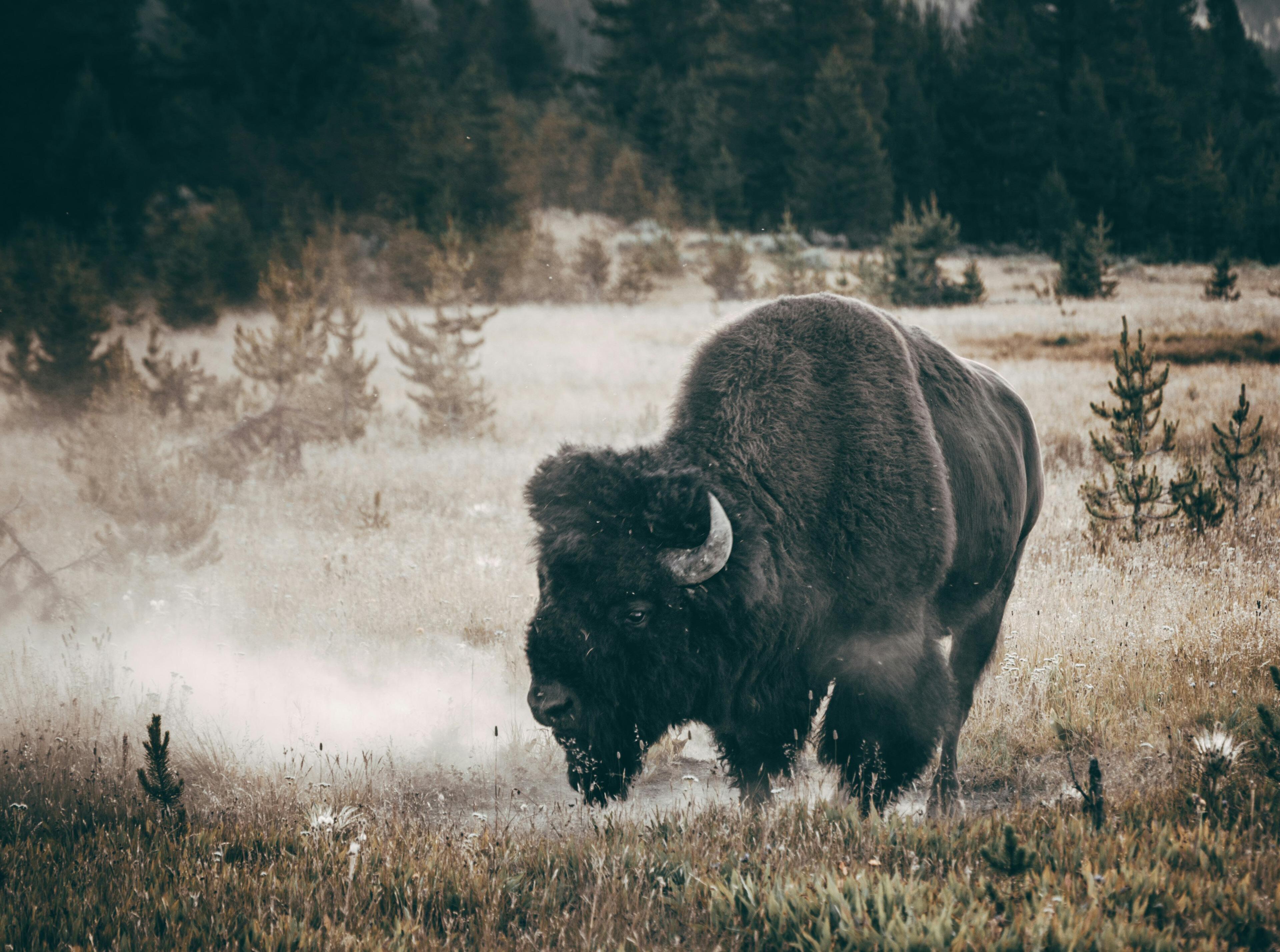
SPONSORING ORGANIZATIONS
Aldo Leopold Wilderness Research Institute
Central Michigan University, Department of Recreation, Parks and Leisure Services Administration
SUNY College of Environmental Science and Forestry
The WILD® Foundation
USDA Forest Service
U.S. Department of the Interior
USDI Bureau of Land Management
USDI Fish and Wildlife Service
USDI National Park Service
Wilderness Foundation (South Africa)
Wilderness Foundation Global
Wilderness Leadership School (South Africa)
University of Montana, School of Forestry and Conservation; and, the Wilderness Institute